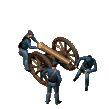


***NOTE
---
PAYPAL IS ACCEPTED ON NON FIREARM ITEMS. Thanks!!!
We certainly do appreciate your business!
:
Rember 911 and God Bless! I
WE WILL NOT SELL OR SHIP FIREARMS OUT OF THE USA & EVERY ITEM COMES WITH A 3 DAY INSPECTION PERIOD. I AM NOT A FIREARMS EXPERT OR A GUNSMITH BUT WILL DO THE BEST I CAN TO DESCRIBE THE DIFFERENT WEAPONS. PLEASE E-MAIL QUESTIONS AND I'LL DO MY BEST TO ANSWER THEM IN A TIMELY FASHION. THANKS!
EVERY ITEM COMES WITH A 3 DAY INSPECTION PERIOD.
more stuff 191
SOLD!!
Here's a dagger that could very well be of Southern manufacture. It's a substantial knife and shows some crudeness in the blade. It's definitely a domestic made piece and not an import due to the crudeness. This knife is over 12 inches long with a tapered wooden hardwood grip into a brass ferrell. The blade is over 7 1/4 inches long by itself. The tang of the blade had a brass washer placed over it then it was peaned to hold it all together. The blade is the dagger style and is diamond in shape. There is no makers marks on the blade or knife anywhere. The cross guard is of brass and is 3 1/2 inches long from tip to tip. For this old knife $395.00

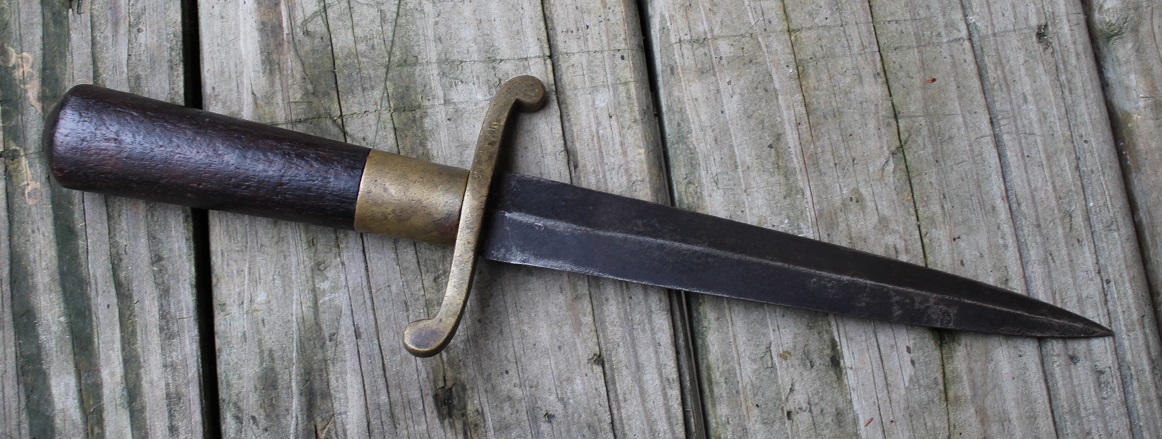



more stuff 186
SOLD
Local central Indiana found US Army Bolo Knife used during World War One . The handle is made of wood and has two rivets securing it. The pommel is in a dovehead shape and has surface rust on it that can be easily removed if you desire.. The crossguard is straight and of equal length on each side. The US M-1917 Bolo Knife with Scabbard was the same basic Bolo Knife used by the U.S. military from the turn of the century through WWII. Manufactured from 1897 to 1918, it went through a number of changes during its production life. First issued to medical personnel in the field it was later issued to fighting troops and used to clear brush, fields of fire and for any task requiring a heavy knife used as a chopping tool. The knife is 15 inches long with a 10 3/8th inch long blade that is sharpened on one edge only. The ricasso is marked US MOD 1917 CT. (wear to the markings) with the Reverse marked Plumb St Louis (no date that I can see here). Mostly blued blade with slightly rounded tip. Blade shows some minor sharpening. No nicks in the edge of the blade. The grips are two slabs rounded and screwed through the tang. The grips are in good condition with very little wobble. The Canvas scabbard is also in very good condition and has something stenciled on one side but I can't make it out. The canvas is complete with no rips or tears and no material lacking. The brown leather tip is stamped BAUER BROS 1918 on one side. There is some surface loss to the leather tip on one side but still looks good. Take a look at the pics! For this piece $275.00
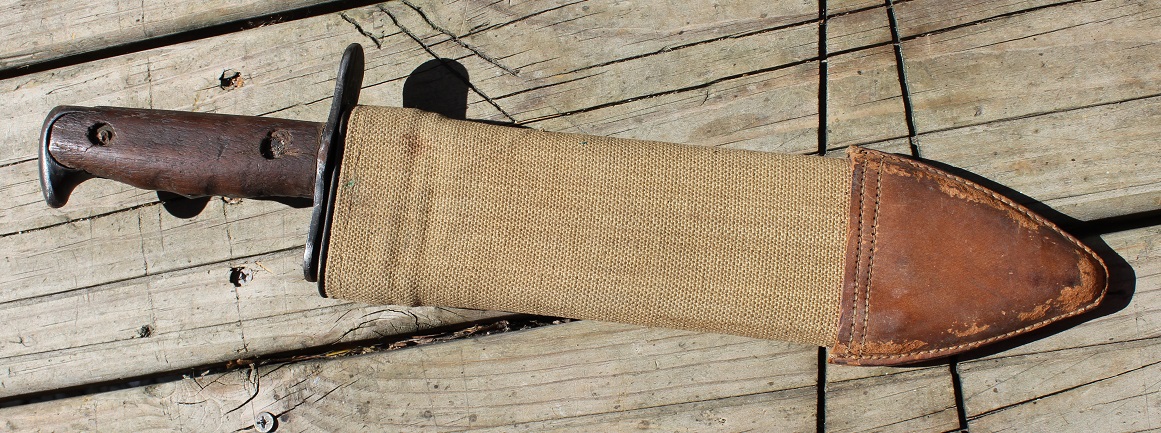


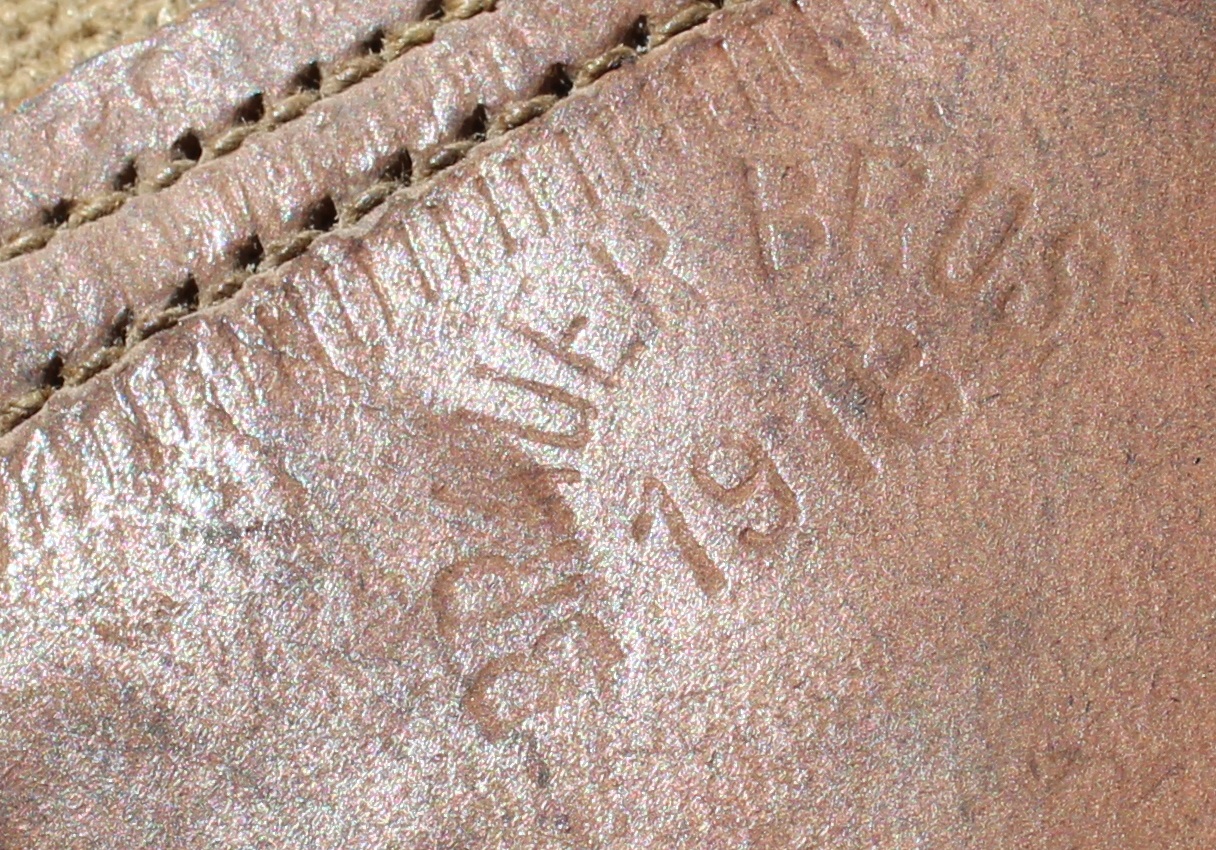
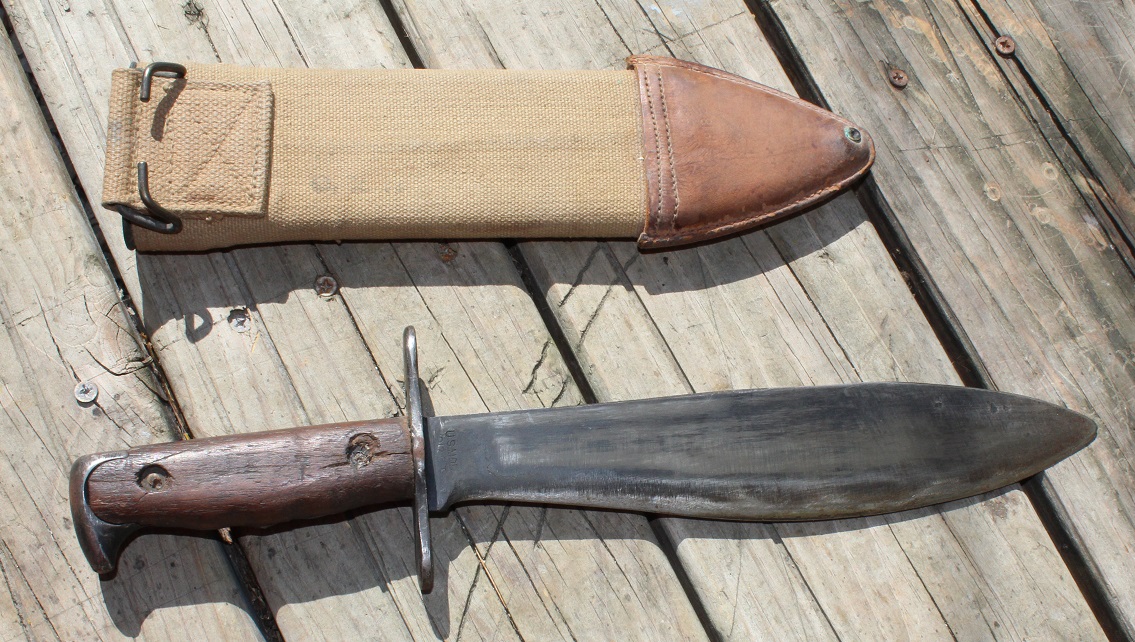
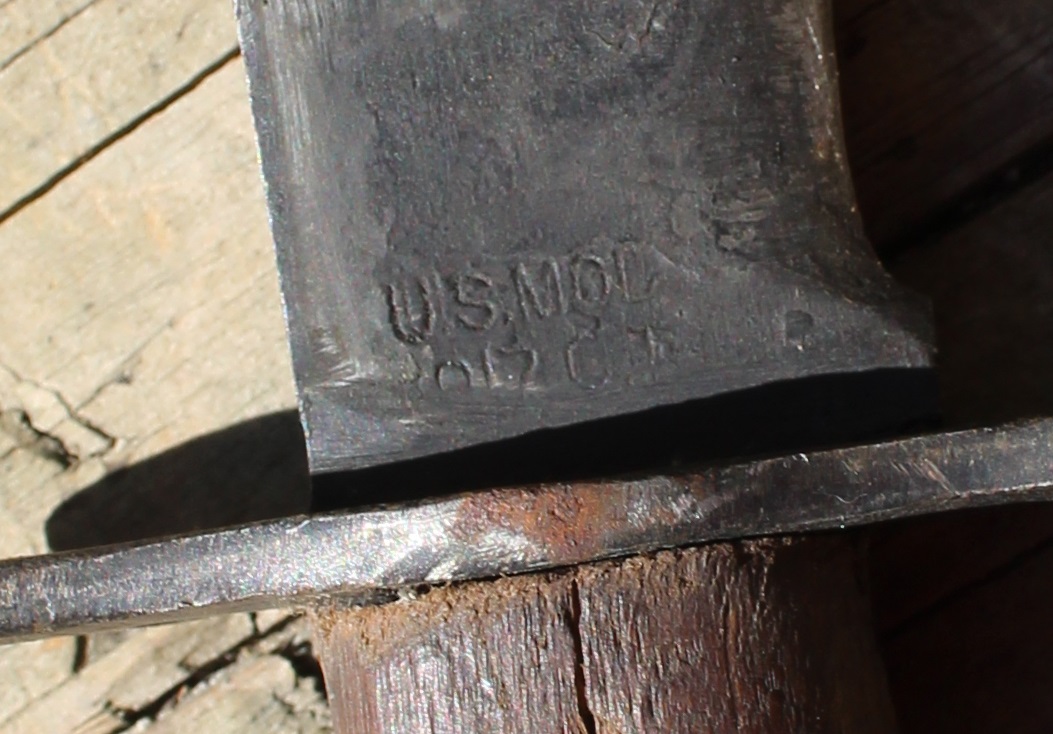

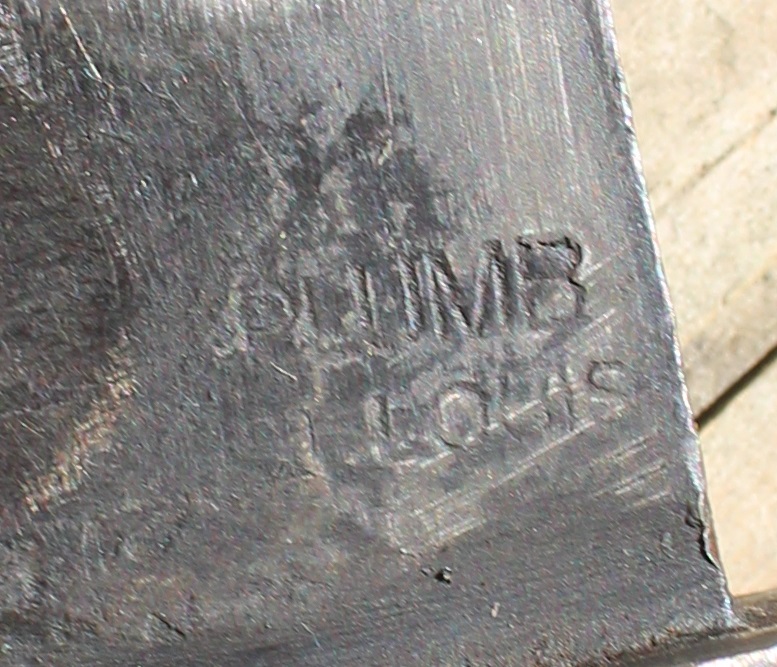
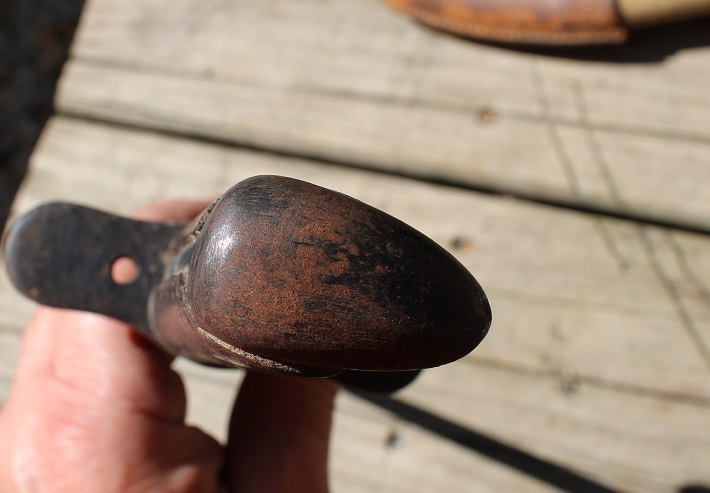
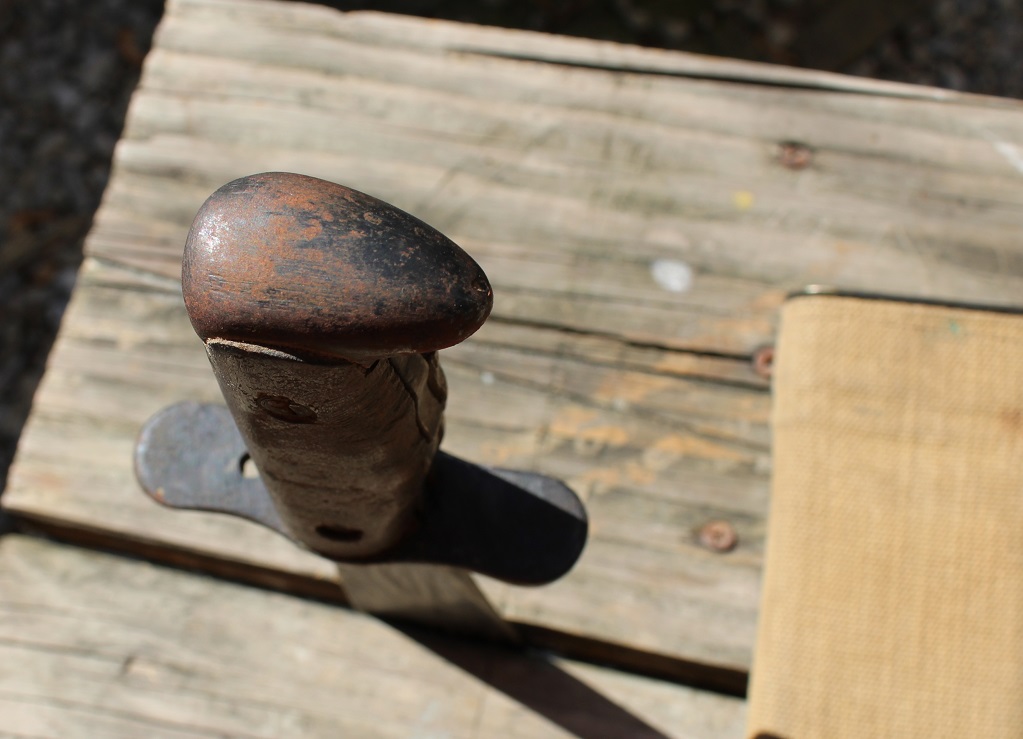

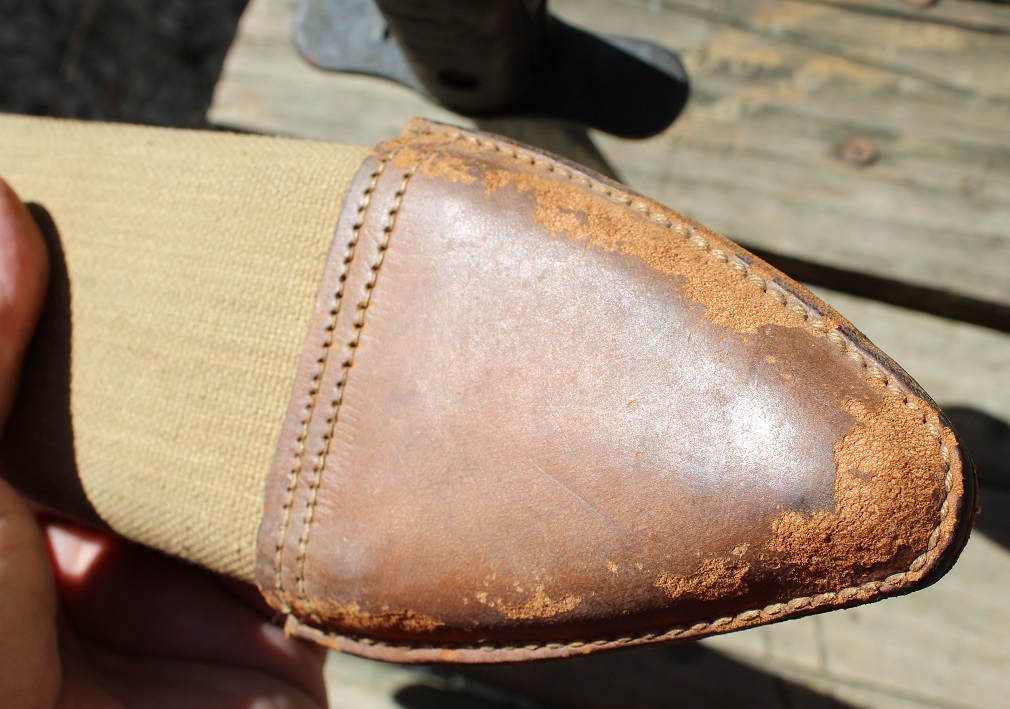

---------------------------------------------------------------------------------------------------------------------------------------------------------
More stuff 176
Here we have some 18th century flatware of various makers and some is monogramed. Take a look at the pics. I believe it all to be coin silver. For each piece $20.00 or $200 for the set!
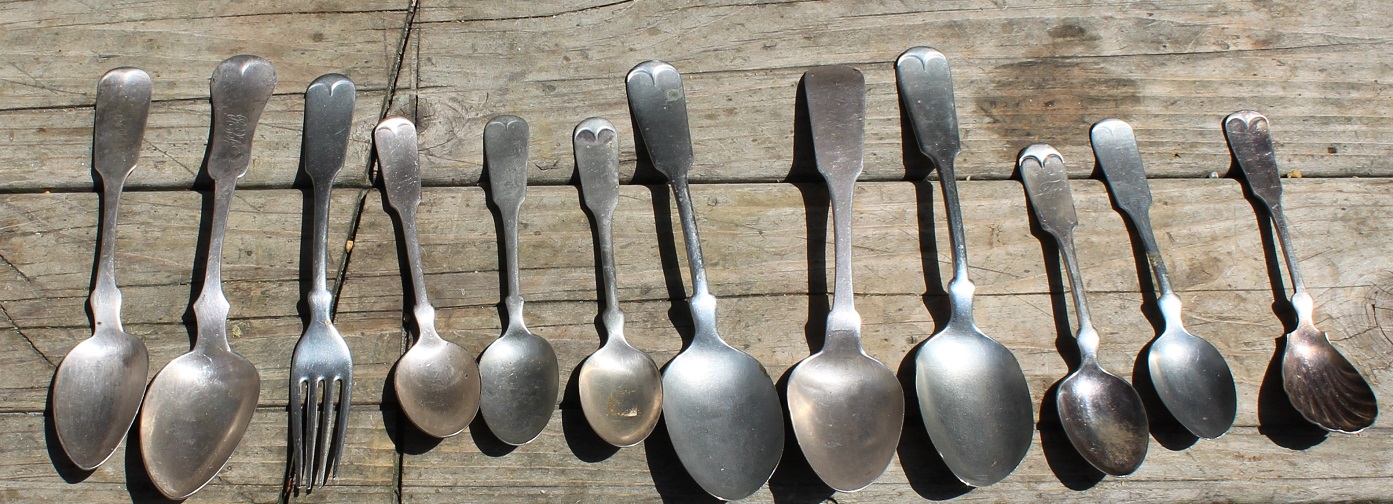
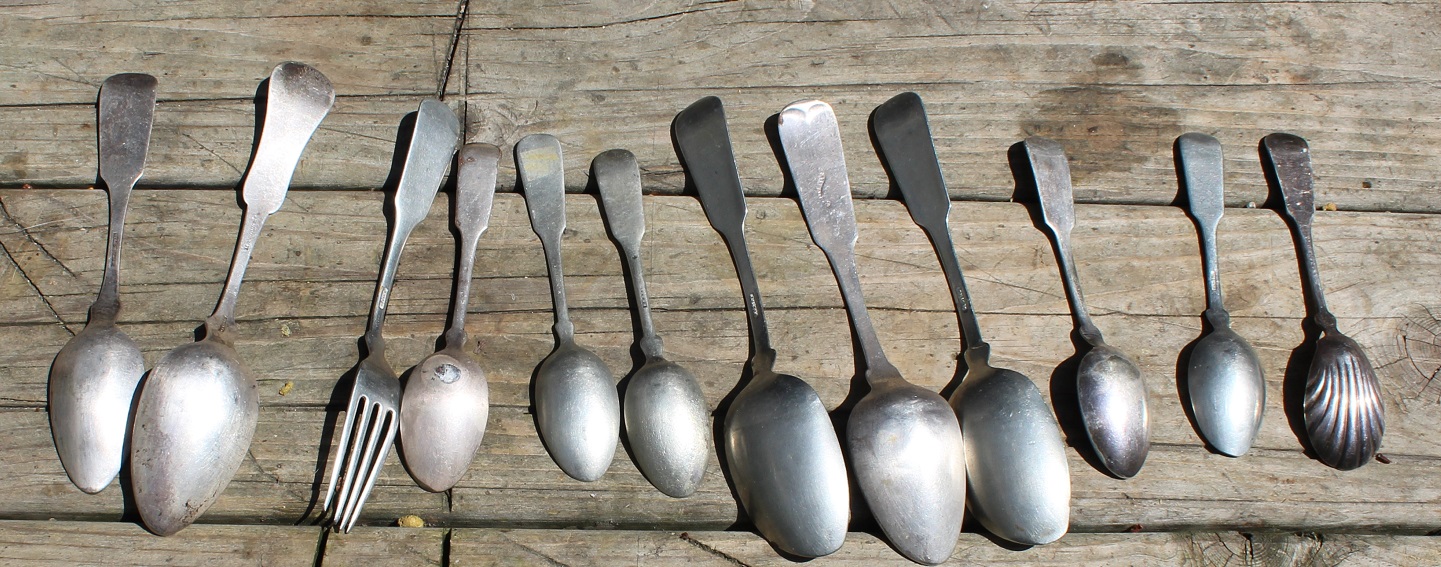
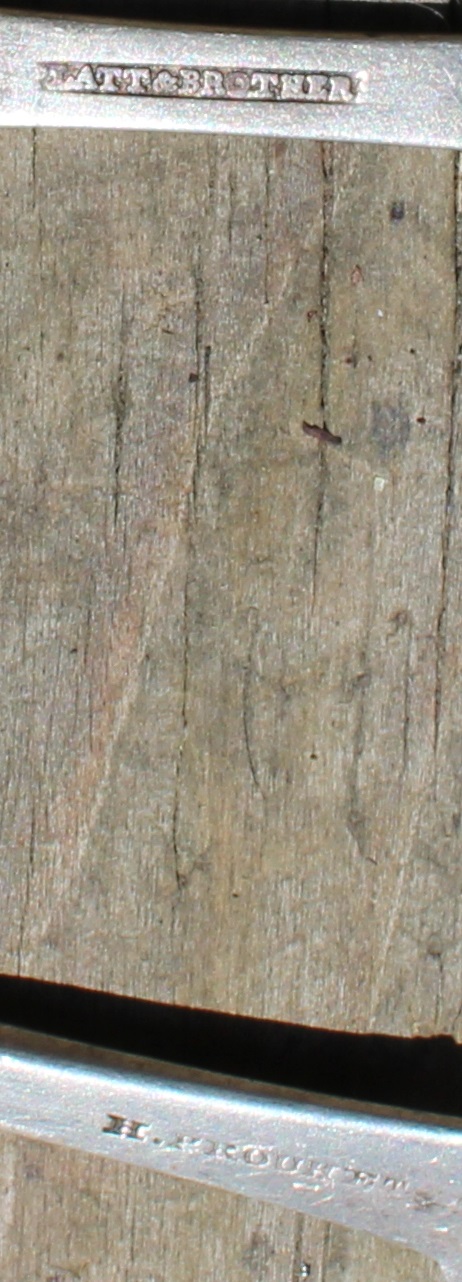
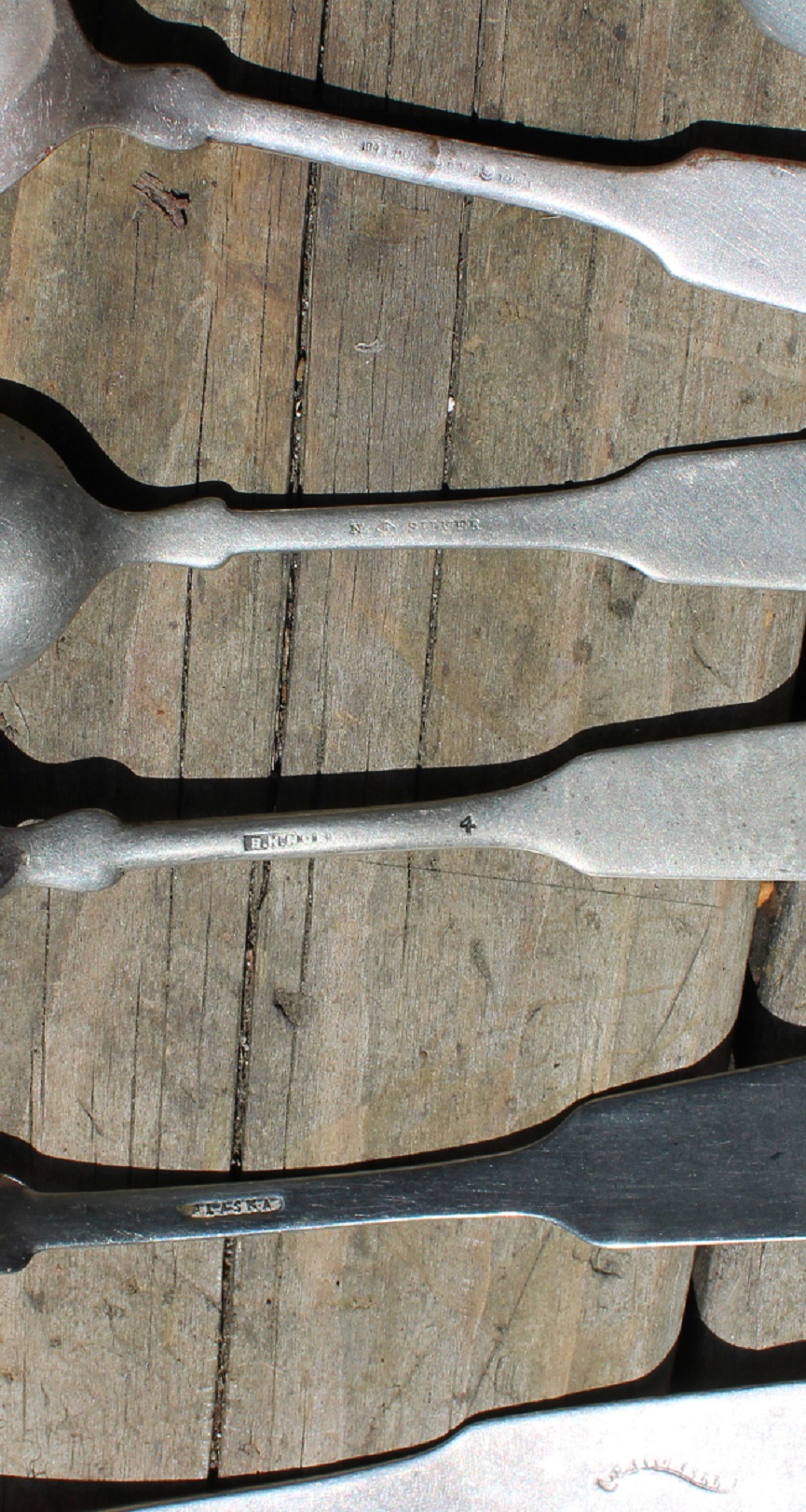
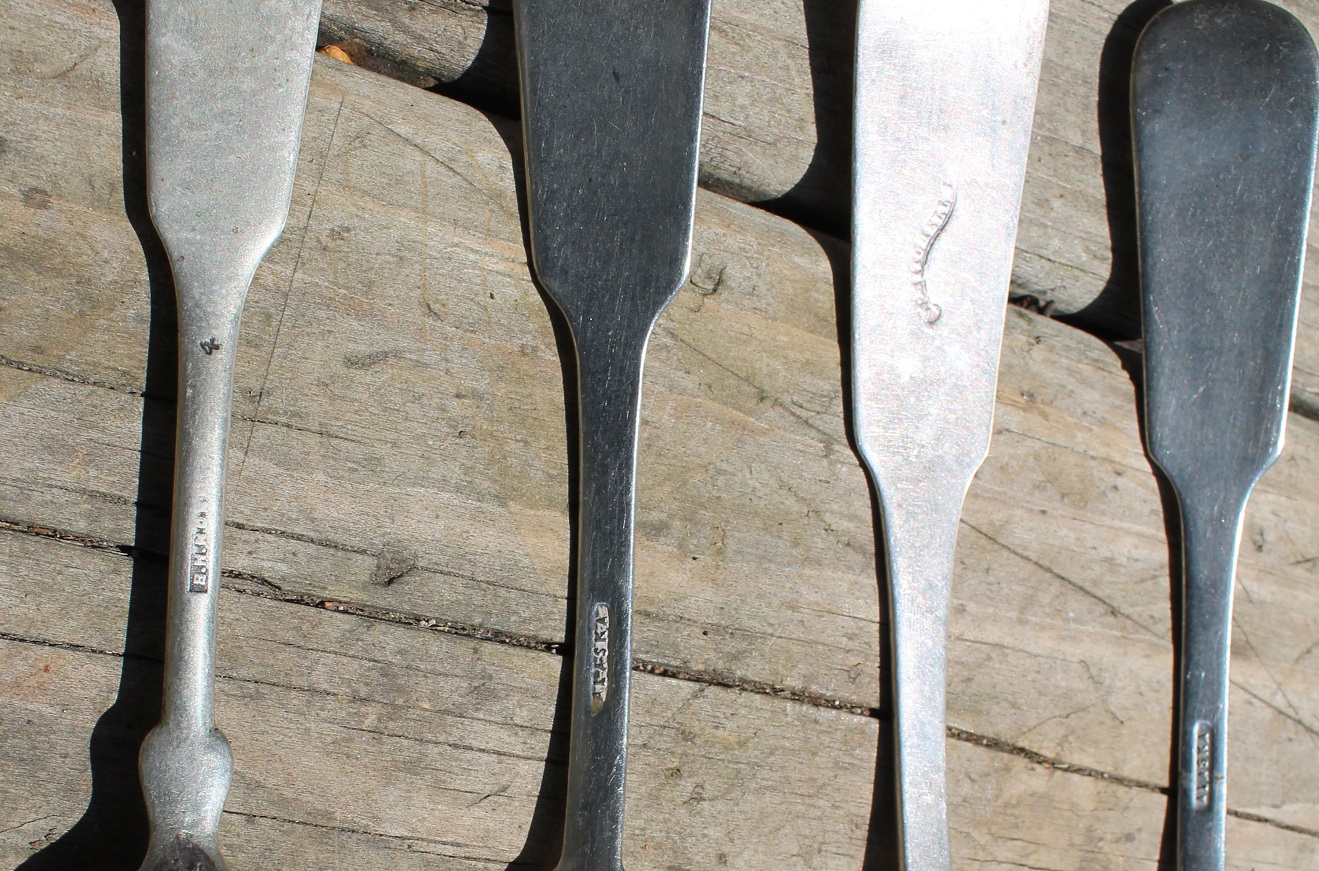
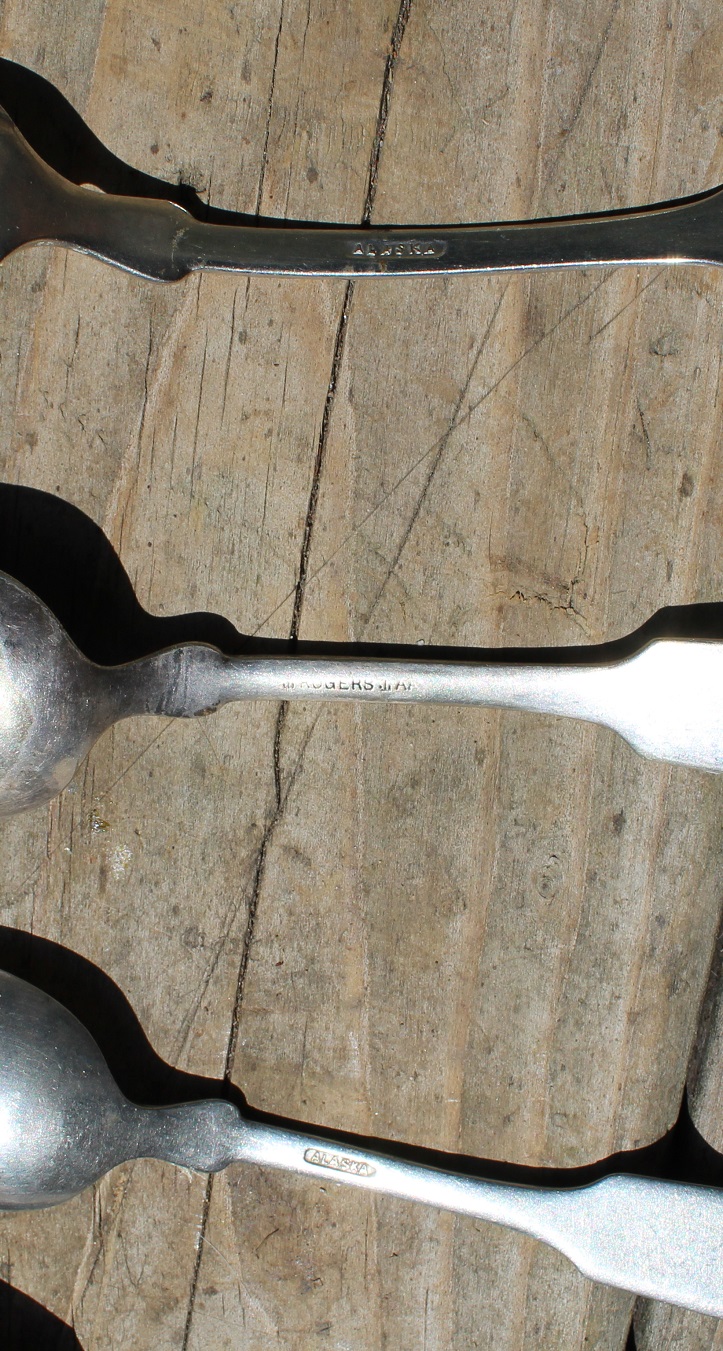
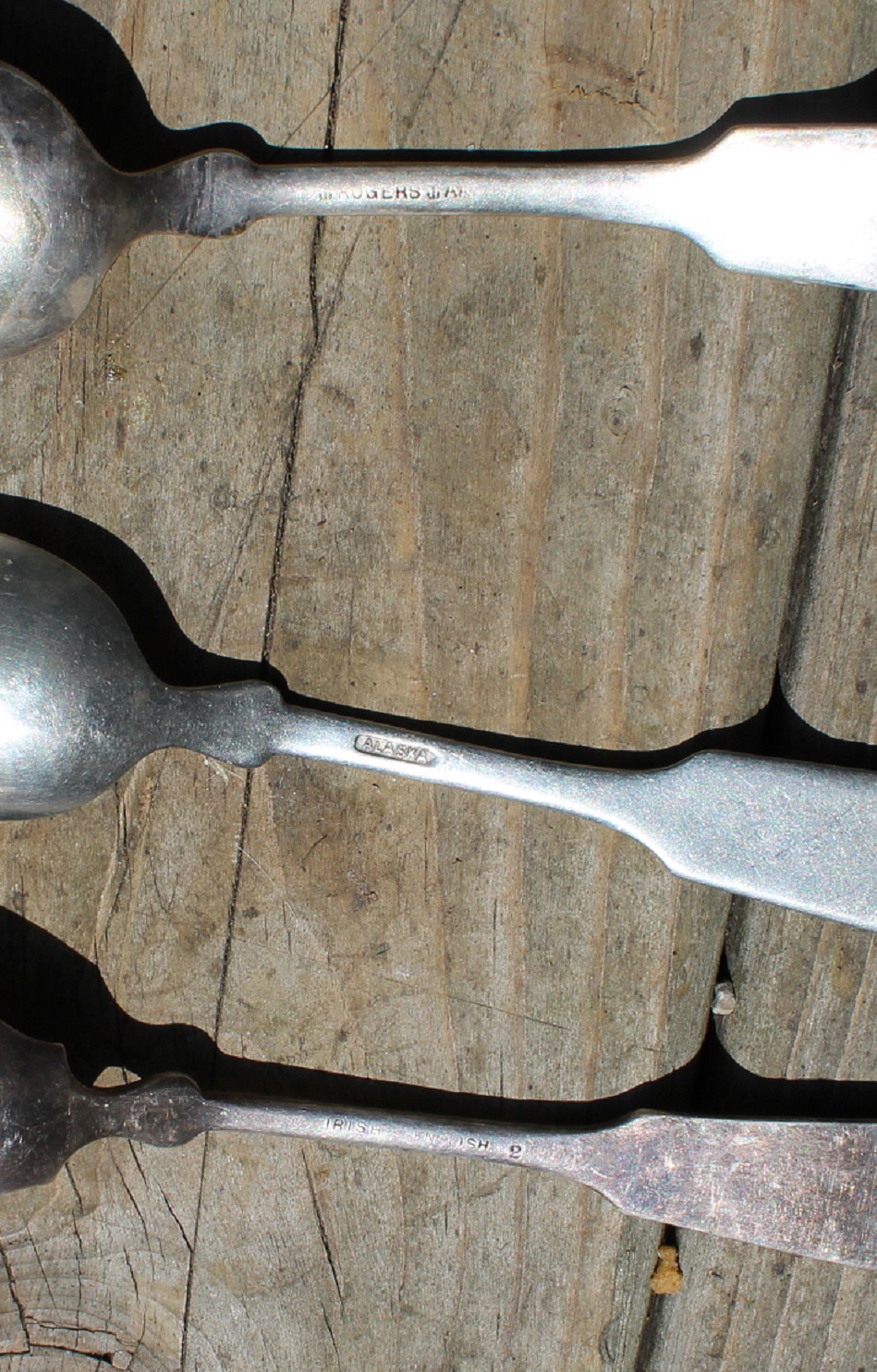
---------------------------------------------------------------------------------------------------------------------------------------------------------
NEW AND HOT OFF THE PRESSES !!!!
Here we have the 2nd Edition of CIVIL WAR HARD IMAGES Volume 2- UNION by Ben L. Pauley and Christopher Anderson with Foreword by Ted Caldwell (yours truly!) I was thrilled to be asked to write the foreword for this truly fascinating research book by these two fine young men! This book is an extensive study of the photographs within. All are hard images and teaches us how to grade them with each image study getting an Image score. The vast array of different images is outstanding showing different types of Union uniforms, accoutrements and weapons! The authors went to painstaking efforts to identify the many different weapons shown in these images. The book is in large format being hardbound with dust jacket and utilizing 215 glossy pages with color photographs! The many photographs are enlarged to show details. This is the companion book to their first edition entitled CIVIL WAR HARD IMAGES Volume 1-CONFEDERATE. These Volumes are truly outstanding and definitely belong in every Civil War Collectors or Student's Library! $65.00 each volume!
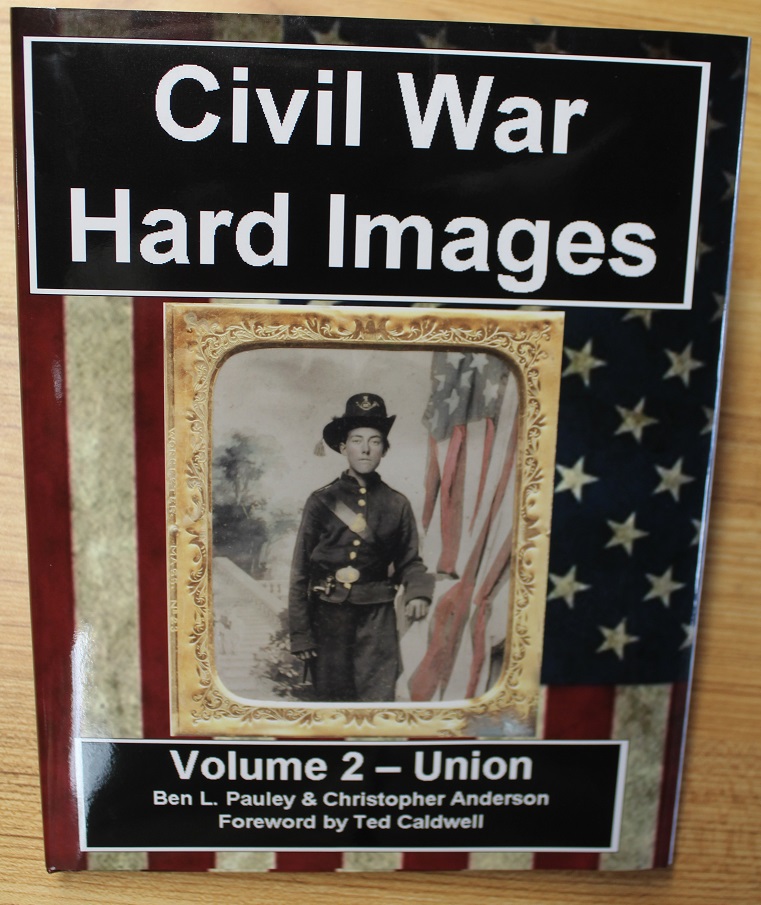
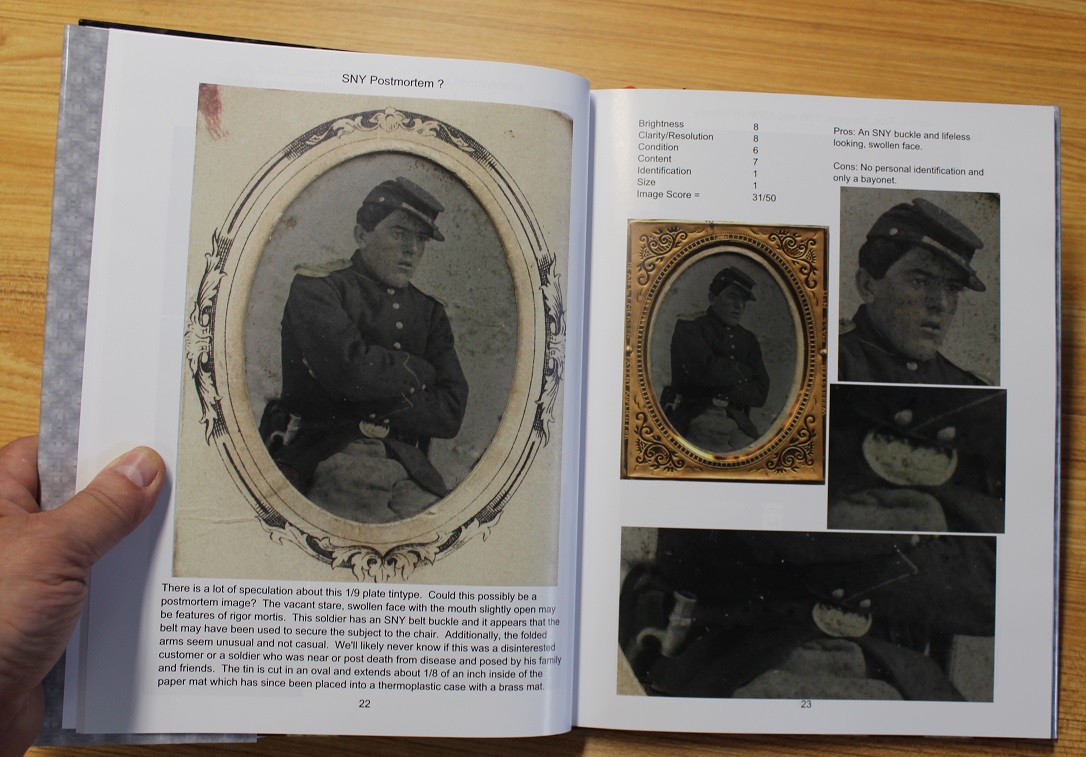
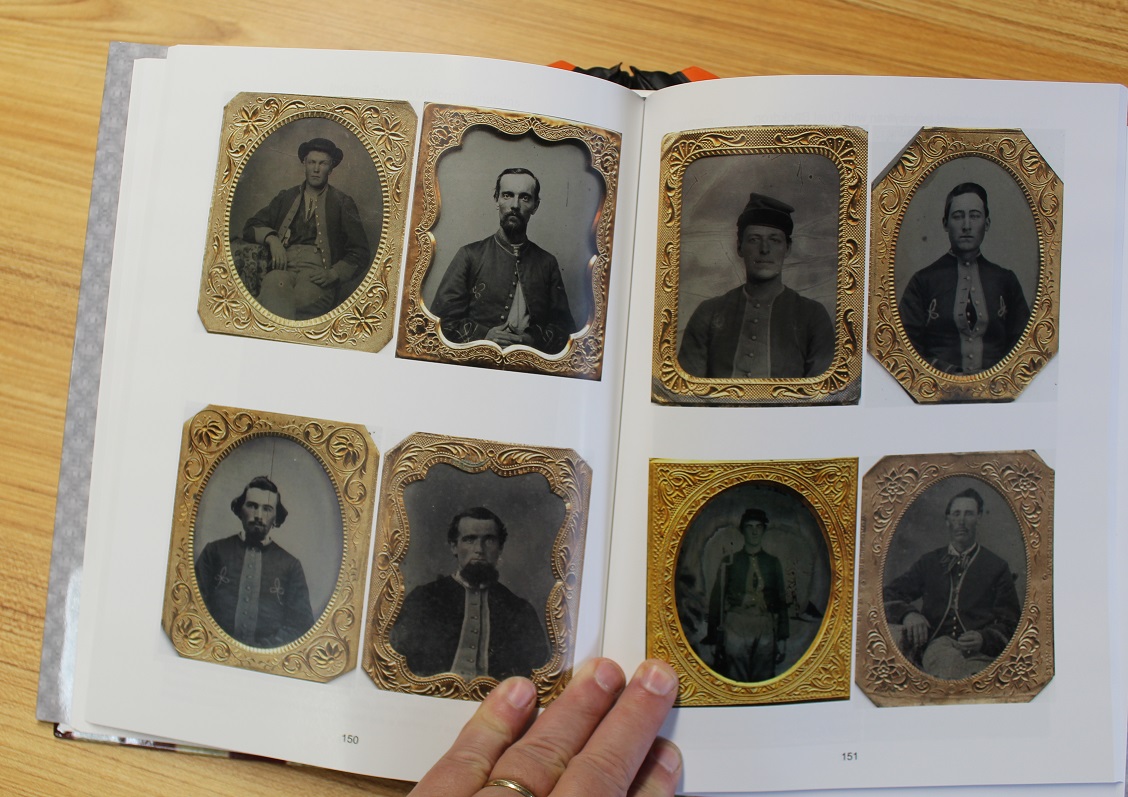
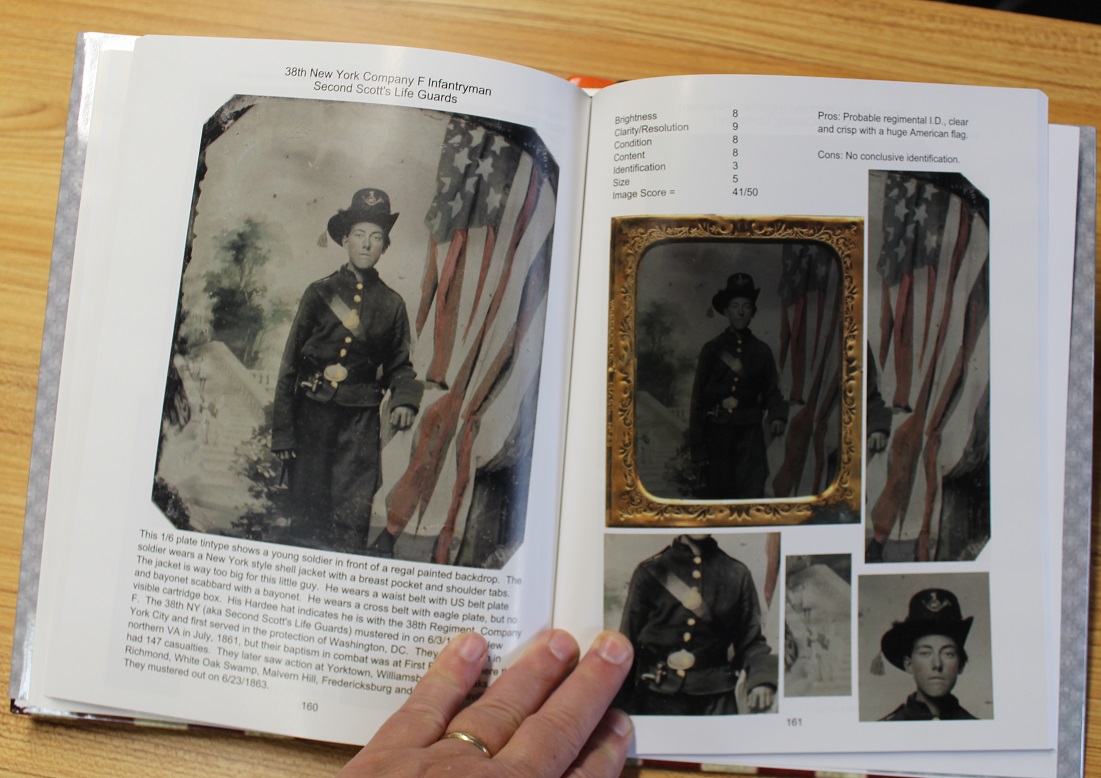
---------------------------------------------------------------------------------------------------------------------------------------------------------
---------------------------------------------------------------------------------------------------------------------------------------------------------
More stuff 164
Here we have two hand held round bullet molds. They both appear to be .28 caliber and both are iron. On the left is a single cavity scissors mold and has a sprue cutter between the handles. Also the marking 180 is there. Don’t know what that is suppose to indicate. The mold operates freely and has a great old attic patina to it! $30.00
This other mold is a little heavier but has no sprue cutter. It also is iron and operates freely. No markings on this one. $30.00 Check out the pics!
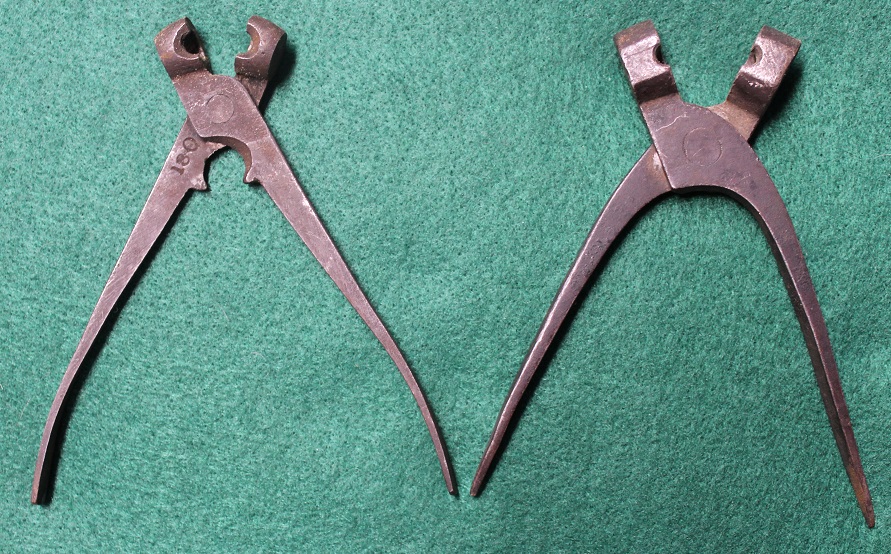
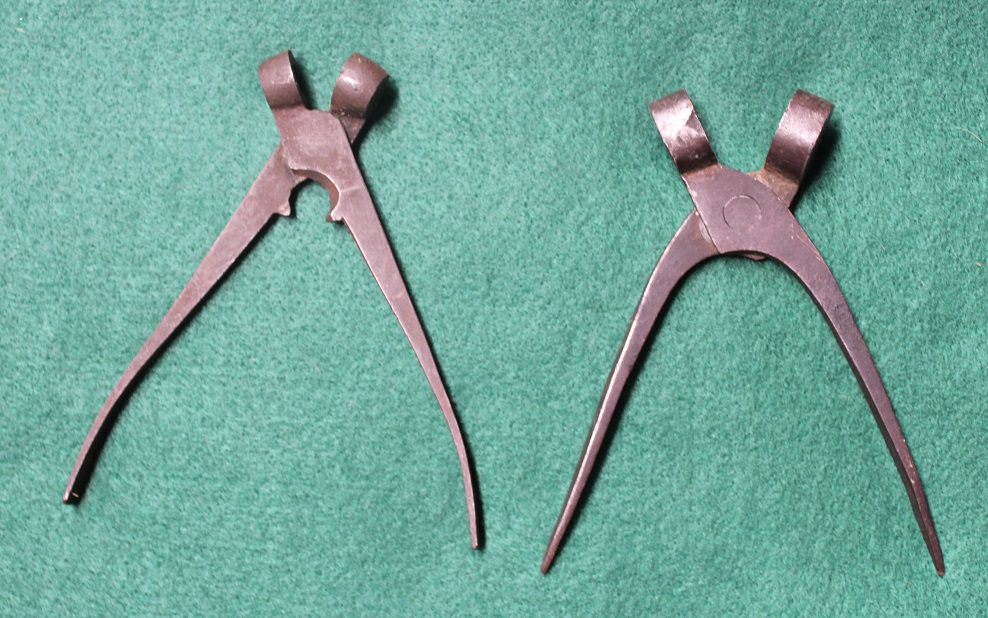
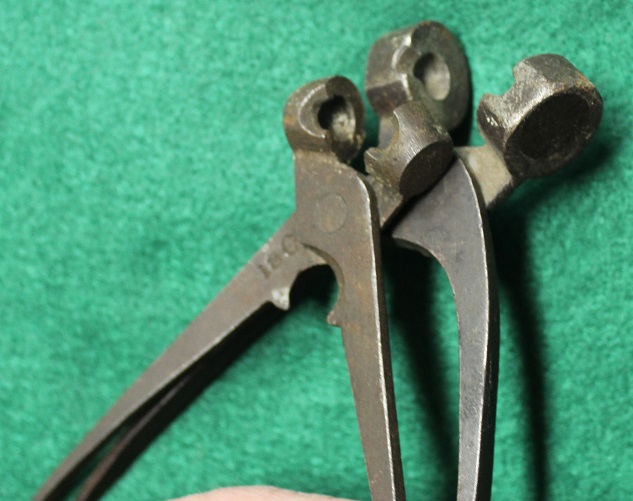
---------------------------------------------------------------------------------------------------------------------------------------------------------
More stuff 157
Here we have an old leather shot pouch and an antler power flash pan measurer. The old leather pouch is for a shotgun as it has lead shot in it. Take a look at the pics. The leather is in great condition and the flask has a wooden stopper. I believe this piece to be handmade and very old. The pouch measures 6 ½ inches long to the stopper and 2 ¾ inches wide. For this old handmade pouch $45.00
The antler powder measure is over 3 inches long with a little string attached to it. This little pan measure was probably tied to a possibles bag or powder horn. This would have been used with a flintlock musket or shotgun more than likely. $25.00

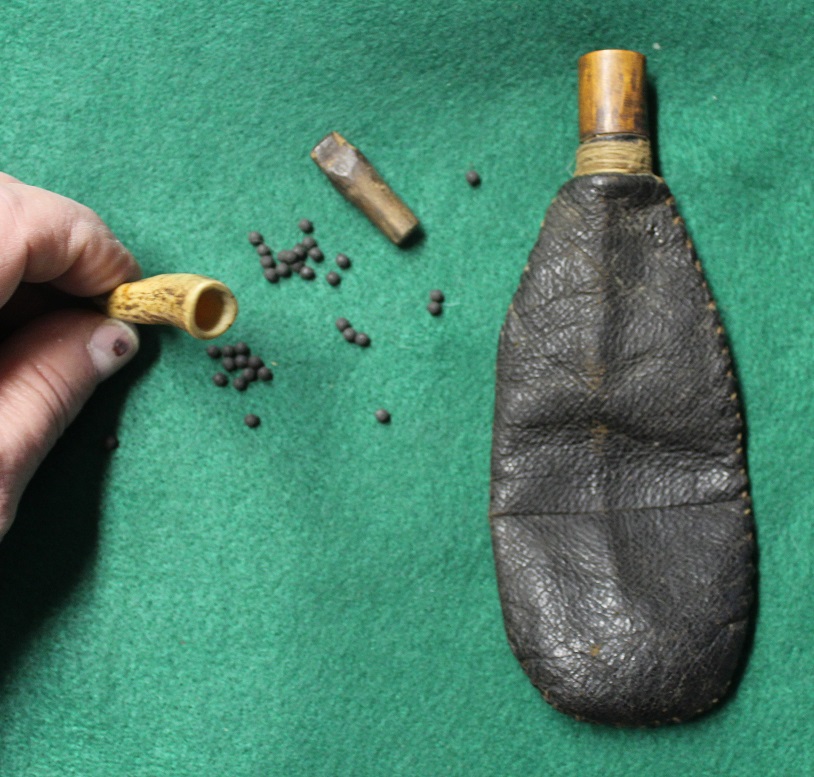
--------------------------------------------------------------------------------------------------------------------------------------------------------
More stuff 155
Here we have a Grand Army of the Republic Ribbon from 1931. I don’t believe it was ever used. Usually a straight pin was used to pin it to a lapel. For this nice 6 inch long ribbon $15.00
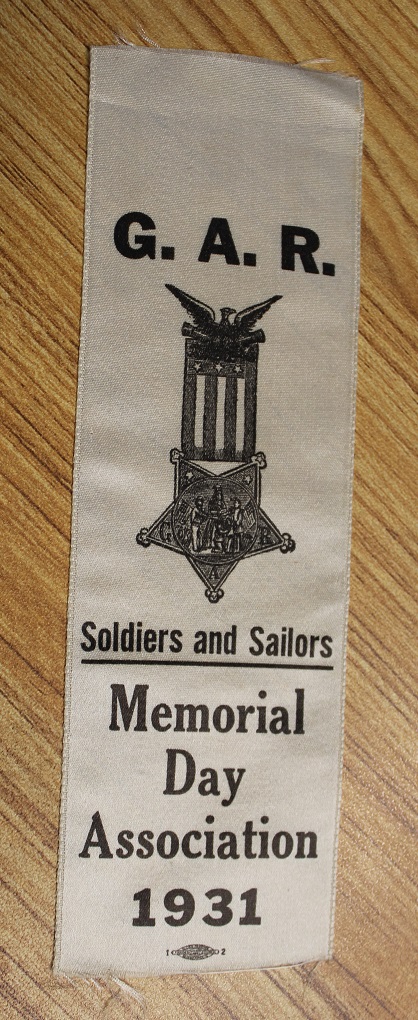

--------------------------------------------------------------------------------------------------------------------------------------------------------- ---------------------------------------------------------------------------------------------------------------------------------------------------------
More stuff 150
Hee we have a nice letter from Richmond, VA on July 12, 1864 concerning Cotton purchases by See Company of Jonesville, VA and is written thusly:
Commercial Agency of Virginia
Richmond July 12, 1864
M D Richmond, Esq
Agt for See Co.
Jonesville, VA
Sir, In reply to your **** I would say that I hpe to be able to supply Lee County with the full amouth of your order-not all at once however. If you will forward funds a once you may get in-in time for next distribution which will be made as soon as the Danville road is completed in 10 or 15 days. I can let you have the cards now-Cotton $45-wool $43 per yard. You will get from this distribution 11000 yards cotton say at $3.72 ? per yard about 343 pads cotton yarns ? at $45 per pad. You will by calculation ascertain the amouth of money needed. The money can be sent by express and the goods will be forwarded by your direction. The cards are going off rapidly. Respy, T. Bassett French C.A. of VA.
Cotton was King!!! For this letter on Cotton $125.00 Nice dark ink and mostly legible. Check out the pics!

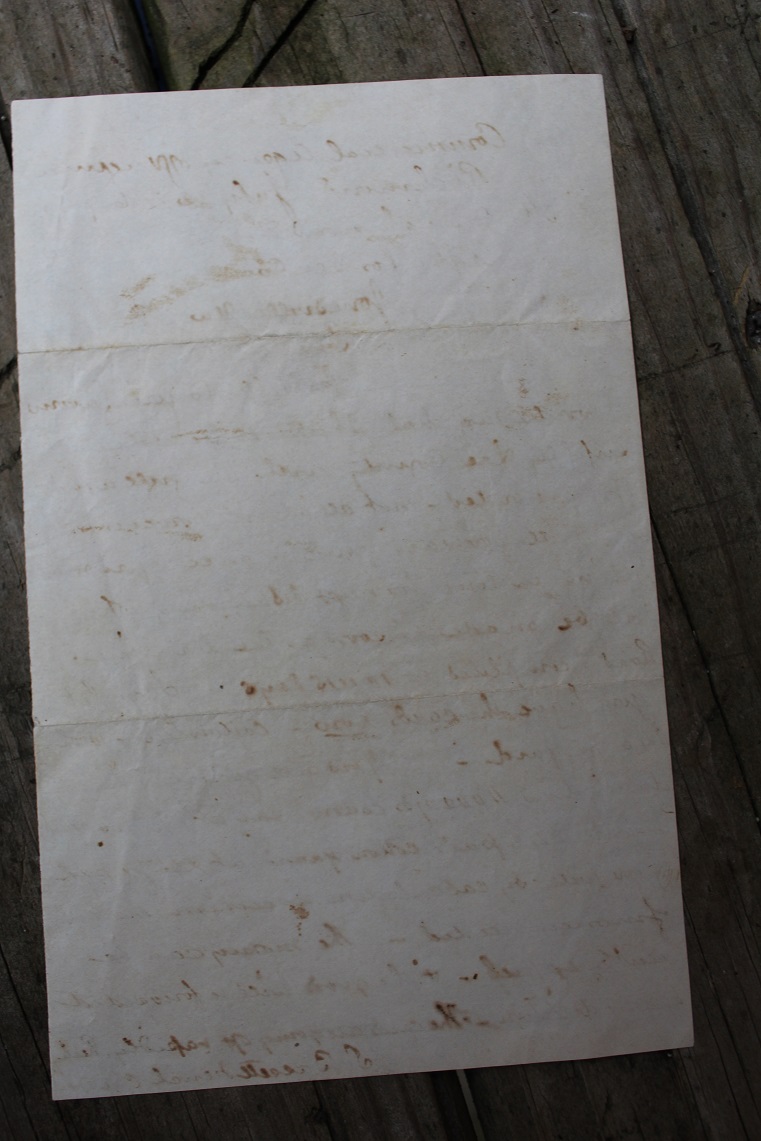
More stuff 149
SOLD
Here is a very rate letter of Sue Betty Campbell-Wife of Colonel Given Campbell C.S.A. who was Jefferson Davis's Chief Escourt when captured at Irwinville, GA. I have been told that this letter has been published in THE LAST CONFEDERATE SCOUT! ( I have not been able to secure a copy) Here's what the letter written in pencil states:
Geneva May 24, 1866 My dear Mr. Campbell, I now sit down by my window to have my usual afternoon chat with you which I believe is the pleasantest part of the day to me. I did not get any letter from you last night which was a great disappointment although I know you worthe then and the letter will doubtless be here tonight. Cal Christy is very good about sending things out since Father is away. Annie Lou has left today wo we have had his company. I health is still improving, slowly however but of course I can not expect it to be otherwise and I am truly thankgul to God that I am as well as I am. I enclose you a picture for you to see how much you think I have improved. I do so earnestly hope it is not war in New Orleans. You must be careful darling to change your clothes with the weather and if you get the least bit sick chill give up your business and come right to me, to your own little wife and I will nurse you and cure you right away-after supper. I got your letter of te 19th this evening-a sweet precious letter. I am tired tonight but darling but I will wrie you a long letter tomorrow. I hope you won't send me the pine apples as I have never gotten the banannas. Good Night my own darling, Yours lovingly Bess.
What a sweet letter ! A GREAT PIECE OF HISTORY! For this published piece $
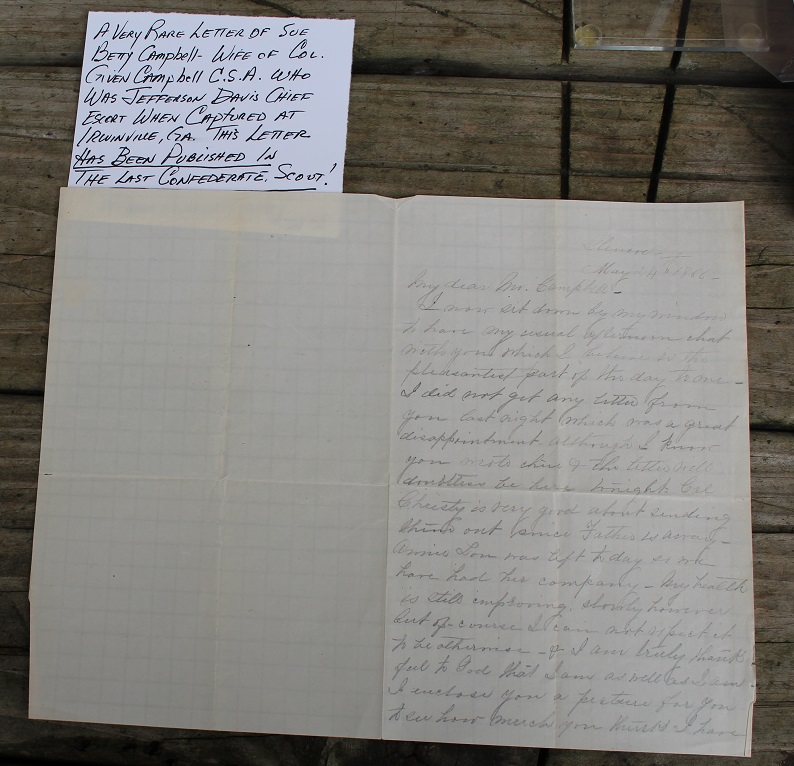
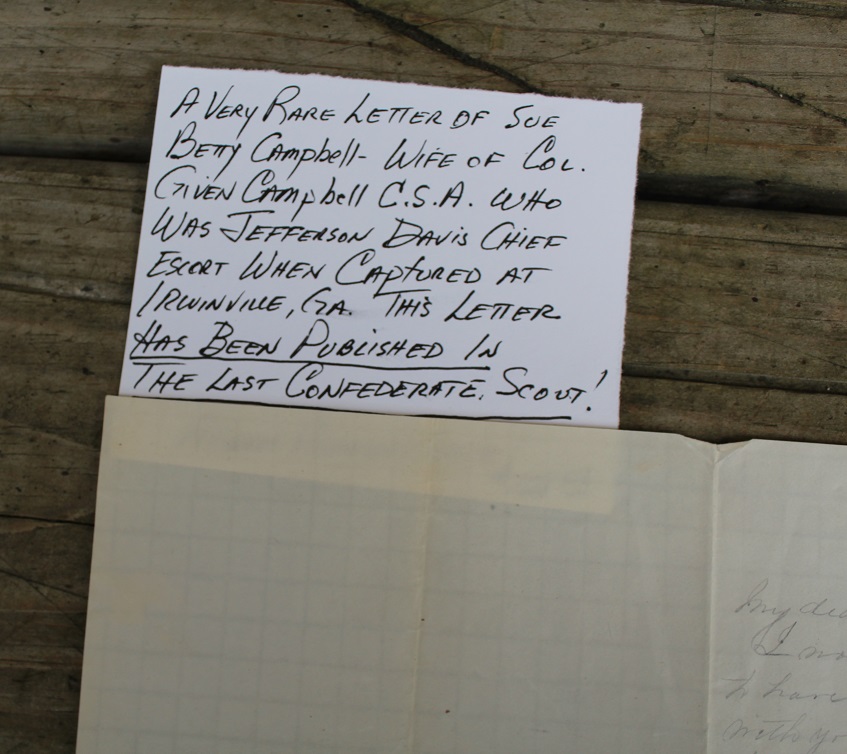

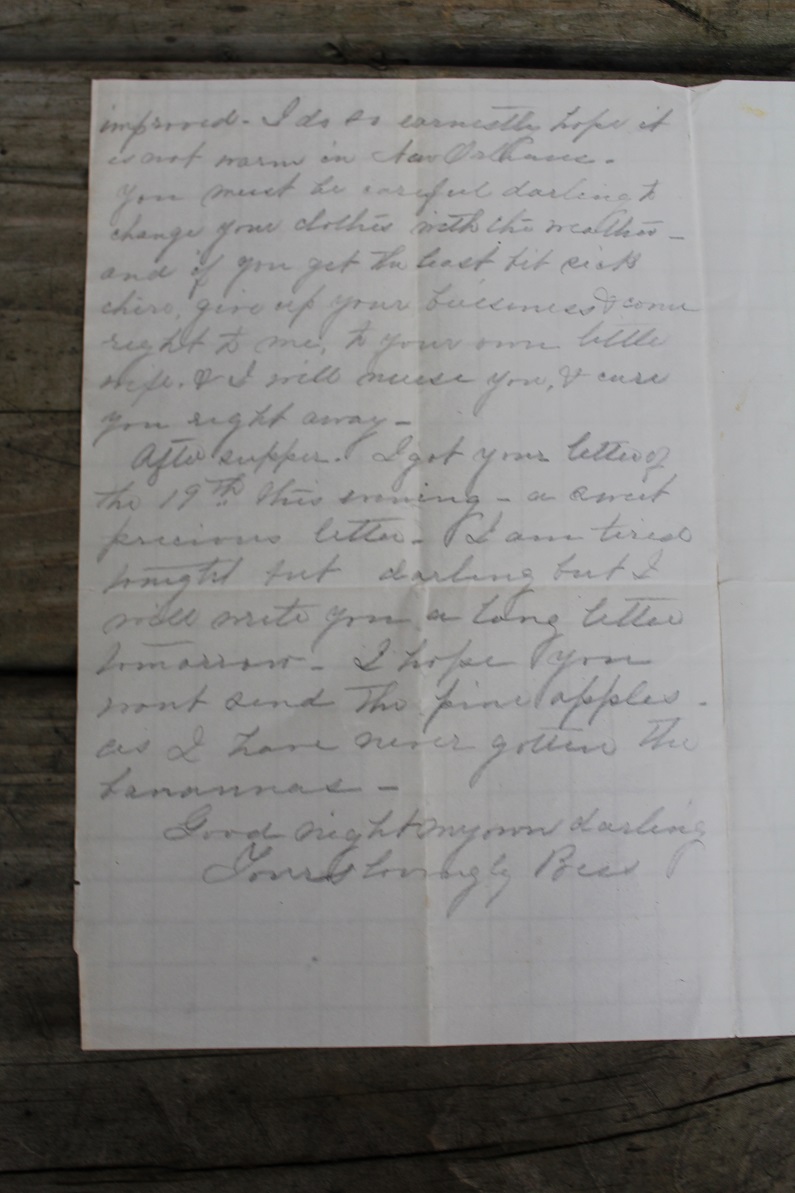
More stuff 148
Here we have a letter and cover from Vicksburg, Mississippi from a Mary (?) and she asks for correspondence to go back in care of Col. Sam Thomas at Davis Bend, Miss. In June 1863, Capt. Samuel Thomas was appointed Assistant Superintendent of contrabands, under Colonel Eaton, for the Department in the area of Helena. Eaton’s position and title was eventually changed to General Superintendent of freedmen, and Thomas became the Assistant Superintendent of freedmen. When Colonel Thomas assumed supervisory responsibilities for the provost marshal in various districts and posts, his title was changed to provost marshal of freedmen. The positions of both Eaton and Thomas, coupled with the office of the medical director, inspector of freedmen, and several freedmen’s hospitals and homes, constituted the Freedmen’s Department of the Department of the Tennessee. In November 1864, the Freedmen’s Department became part of the Department of the Mississippi. By summer 1865, the functions and activities of the Freedmen’s Department were assumed by the recently formed Freedmen’s Bureau, so that the Department was the precursor the Bureau’s Office of the Assistant Commissioner for Mississippi.
The letter consists of this text:
Davis Bend, June 18th, 1864
My dear Maggie, Again I seat myself for the purpose of writing to you and to tell ou that at last wehave decided to remain here all summer. It will be quqite unsafe to go up the rifle for sime time yet and by the time the Blockade is removed it will be as late in the season it will be be worth while to go. The part of our corps that left two weeks ago arrived safely in Cairo but advised us to stay where we are. We feel a little disappointed but I hope we wil soon get over that. The rest ofour family have gone across the river today onan excursion but I prefered remaining at home. So here I am, with no company but the mosquitoes and a headache which I would be willing to dispense with if possible. Once in a while a contaband puts her head in at the door to see how I am getting along. They are verykind and are willing to do any thing they can for us. A bridal party has just arrived. They came in great state riding in a cart drawn by an old mule. The bride is dressed in white with a white veil overher face. The bridgroom has a blue coat with brass buttons and white trousers and while cotton gloves. I just wish you could see them, it would do you good to see some sights among the contrabands. I wish you could make me a visit one of these days. Has Lydia Worth given up here. I thing she has forgotten me altogether, she has not written to me for a long time. I received a letter from Aggie last week she said she had received your picture. Why don't you send me one, but I know you will pretty soon. Now Maggie I must close for my head aches to badly to wrie anymore. I will enclose two dollars to pay for those nets? and ****? and if not too much trouble I would like you to semd me about net just like the others. If you see any of Uncle Roberts thell them I am not going home now. Give my love to all yourself in particular. Yours most Affectionately, Mary ***** Davis Bend Via Box 2 Vicksburg Miss Care Col. Sam. Thomas.
This is an interesting letter and comes with the cover marked VICKSBURG and addressed to Miss Maggie R. Thompson, Oxford, Chester Co. Penna with a 3 cent Washington Stamp. Nice Quality! Good paper then! For this fine interesting letter and cover $125.00
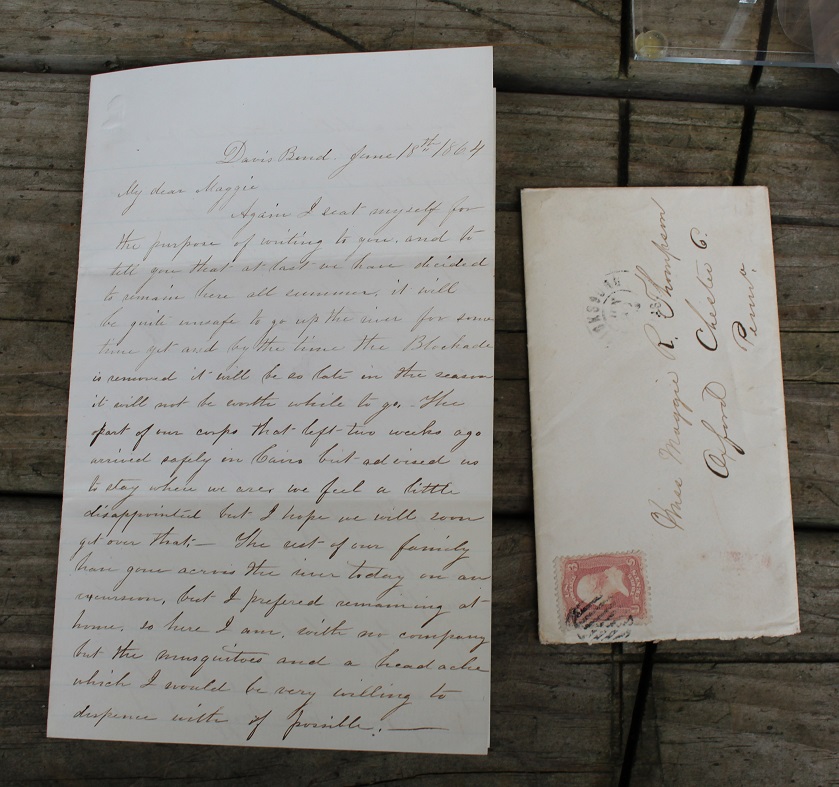
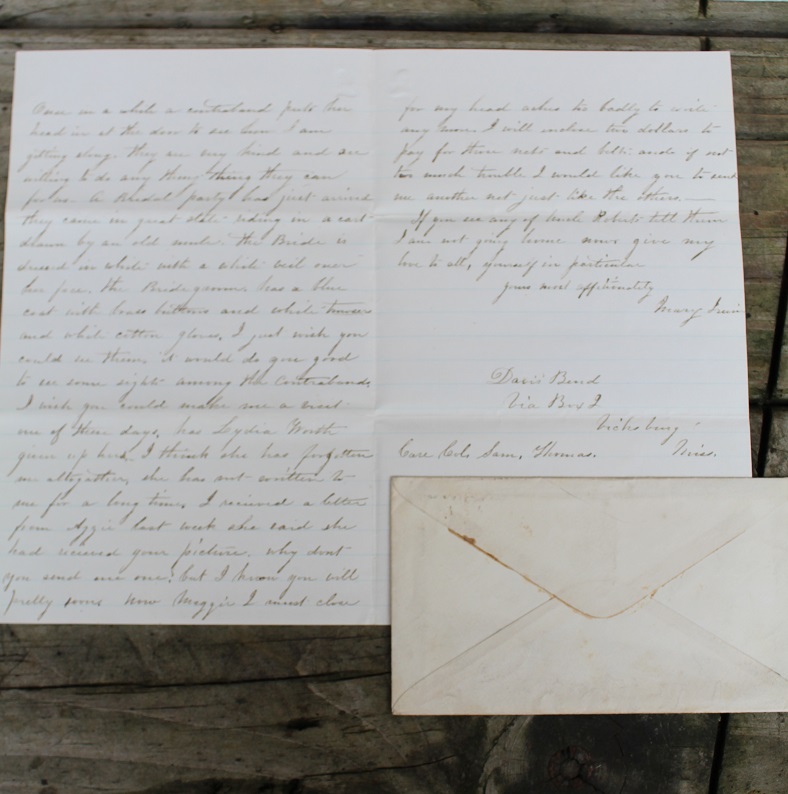
More stuff 145
Here we have a Confederate Railroad Document in Acrylic frame. This document measures about 7 3/4 X 6 1/4 inches and is partially printed and partially filled out in ink on blue paper that has one fold in the middle. The Document is headed 'MISSISSIPPI CENTRAL RAILROAD COMPANY' and signed in two places Henry Vaughan and H. Vaughn for 45 cords 4 foot wood @ 2 ($2) (total) $90. The document goes on to have on it 'I certify the abo ve is correct. Feby 21st, 1863 R. S. Mackin, Feby 24, 1863, Approved E. D. Trask Supt. and under that H. Hall $90.-- Received May 14, 1863 of-------, Treasurer of Mississippi Central Railroad Co., Ninety Dollars, in full of above account H. Vaughan. Check out the pics and the back of the Document. There is a small amount of browning on the paper that does not touch any of the Printing or Ink. For this piece of Civil War Railroad memoribillia $125.00
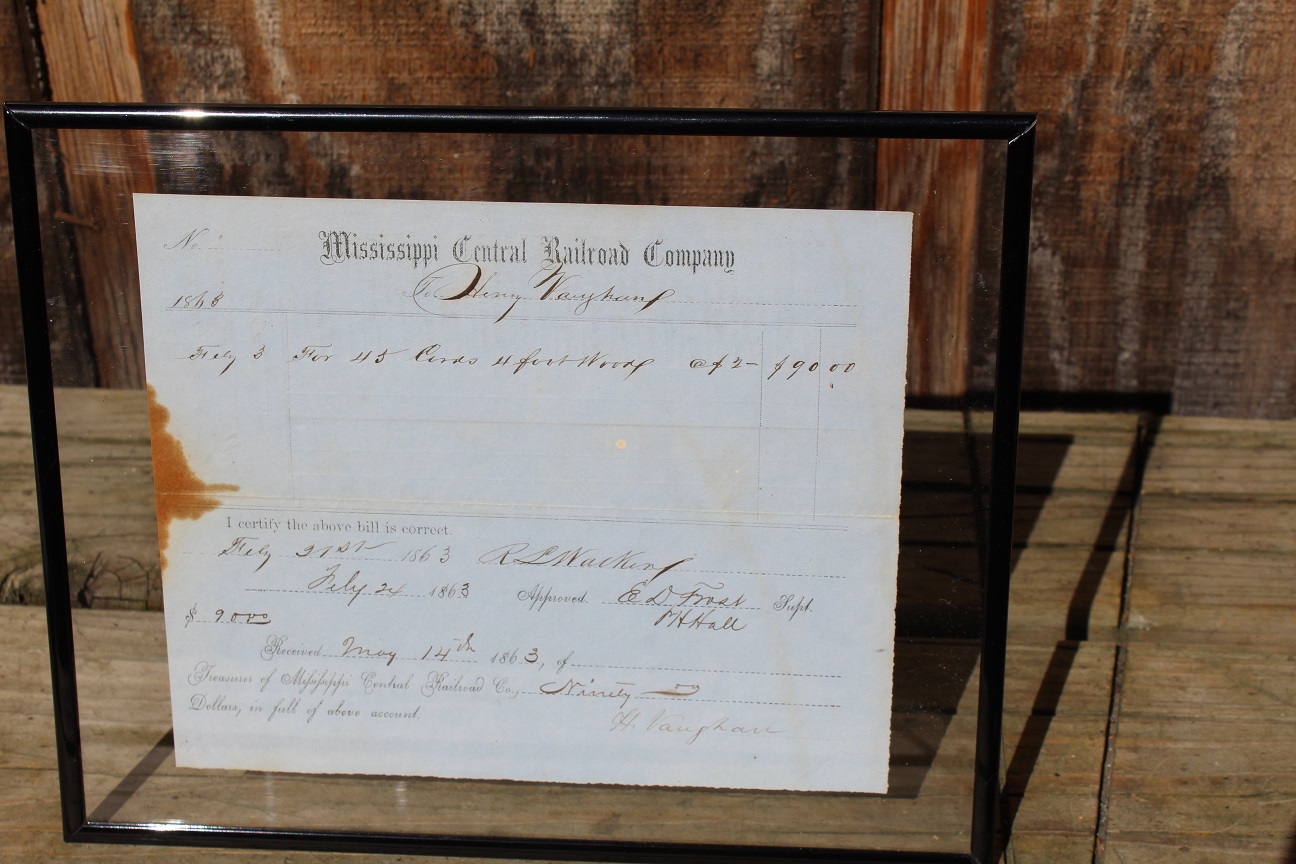
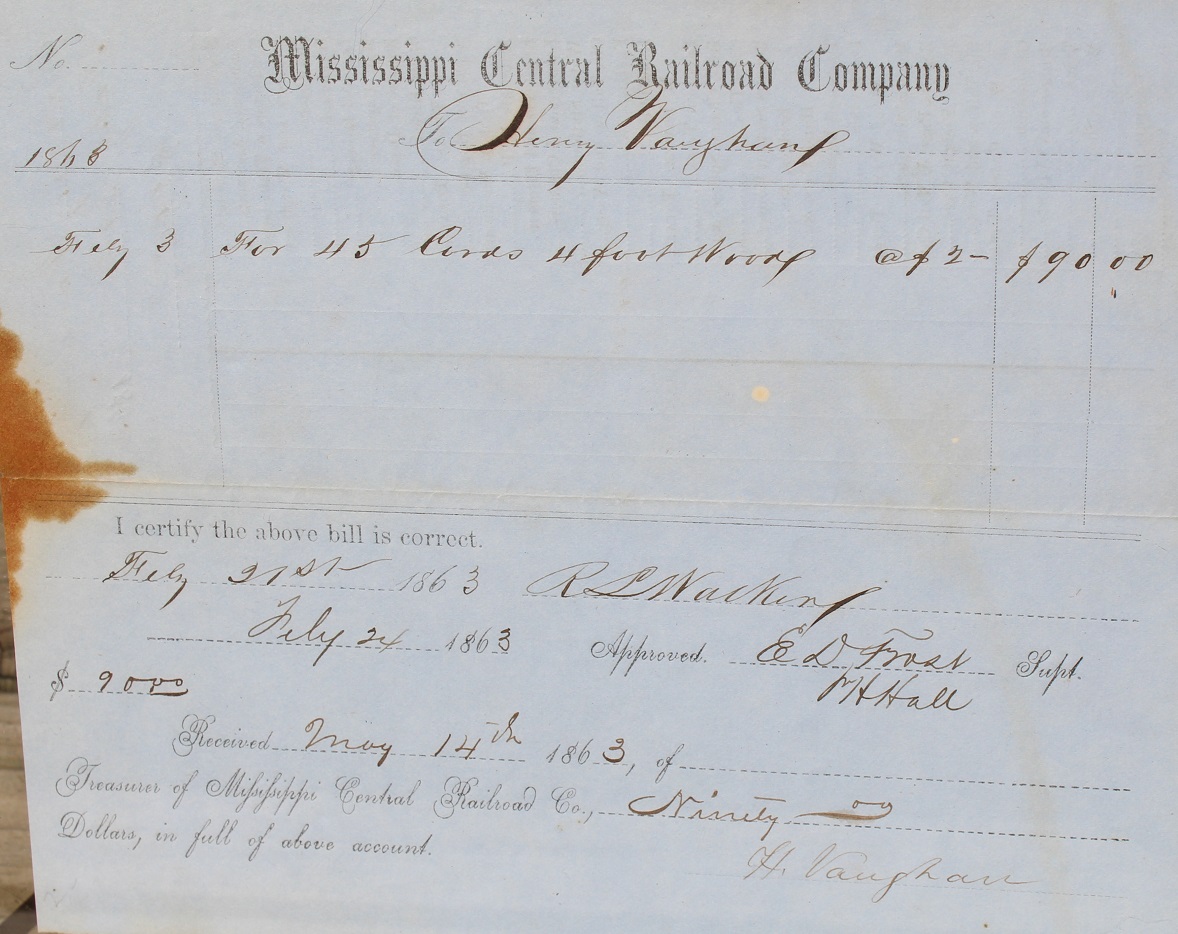
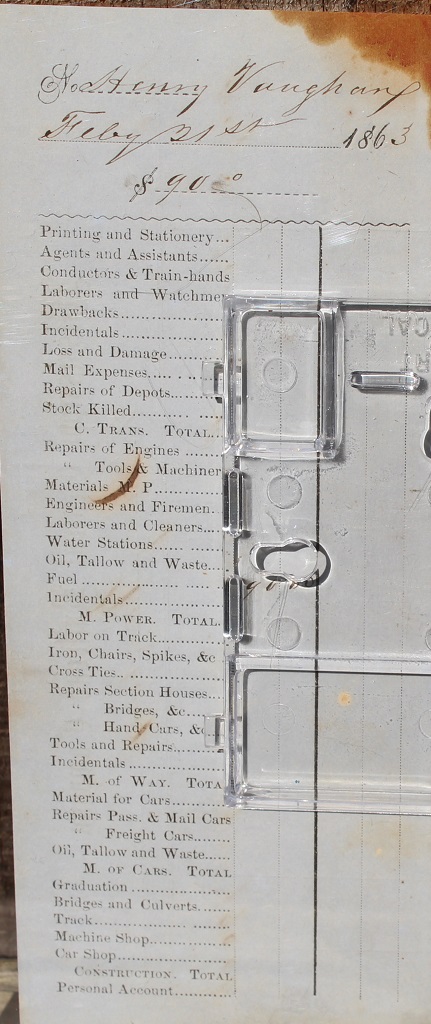

More stuff 137
Here we have a US bridle with iron bit. This bridle is complete with the bronze US Rosettes of the National Seal type. They are the thin bronze rosettes with the offset staple. The leather is all supple and only seems to have any weak spot where the reins are sewn together. I believe this to be the Model 1909. The bit is not the military bit of that time frame and may be earlier. This bit and the rosettes have been on this bridle for a very long time! For this historic piece of history $195.00

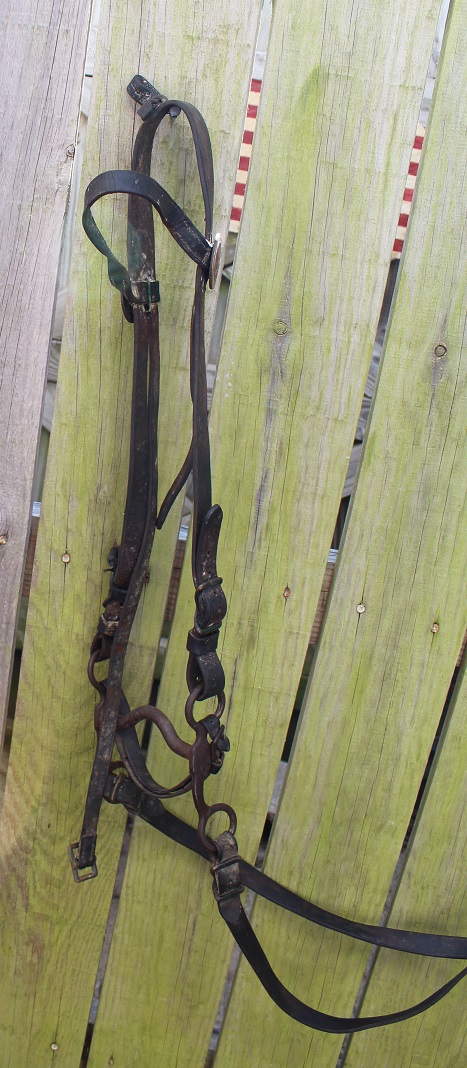
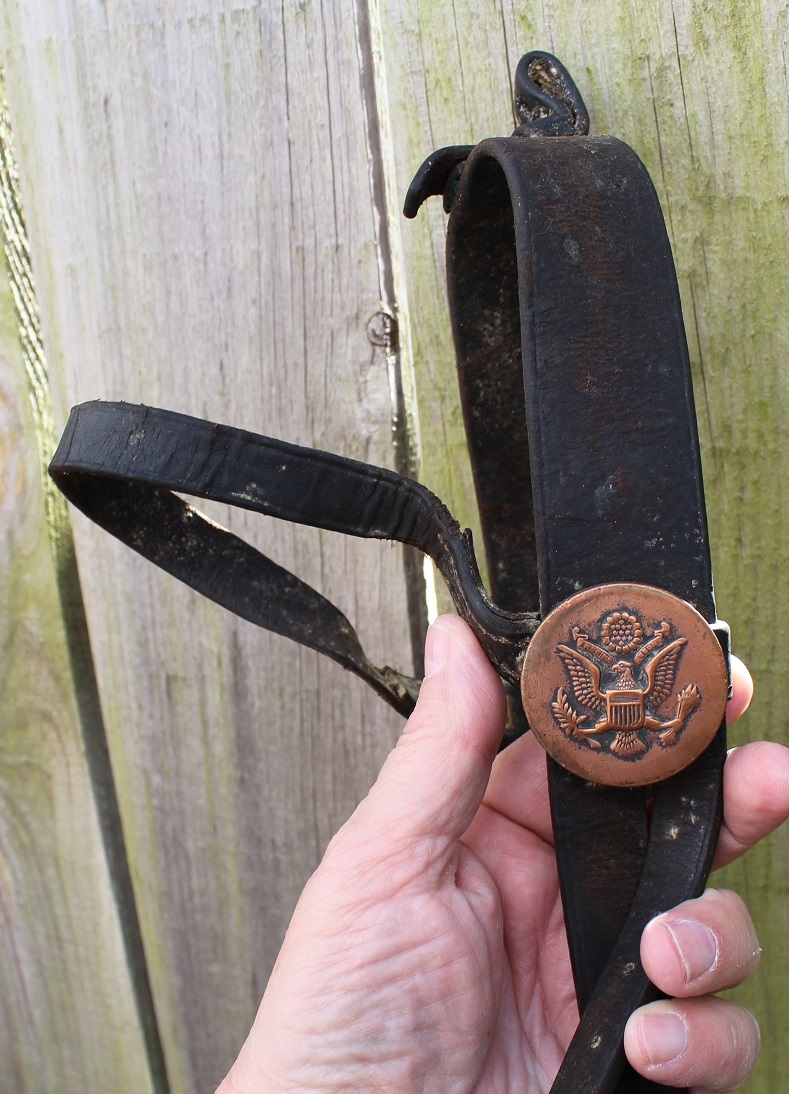
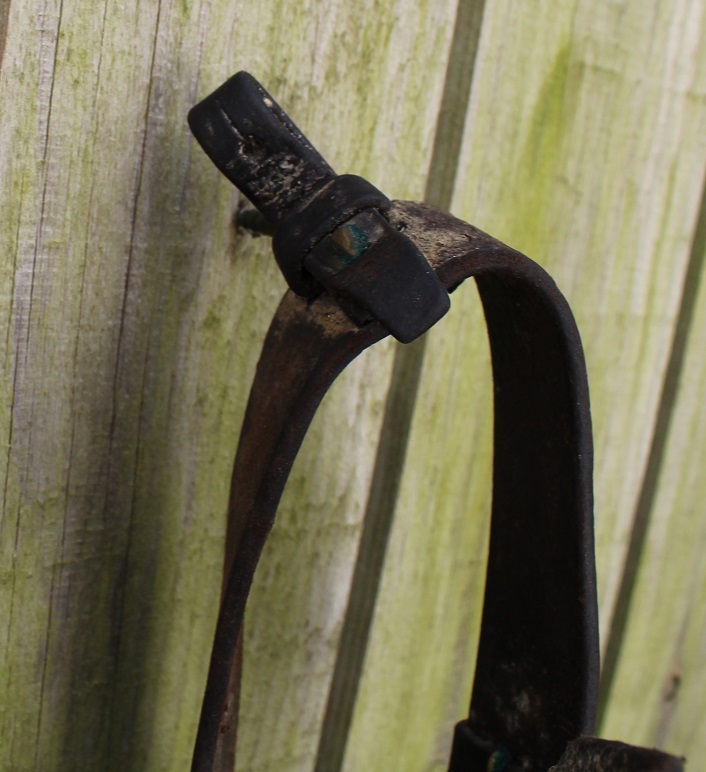
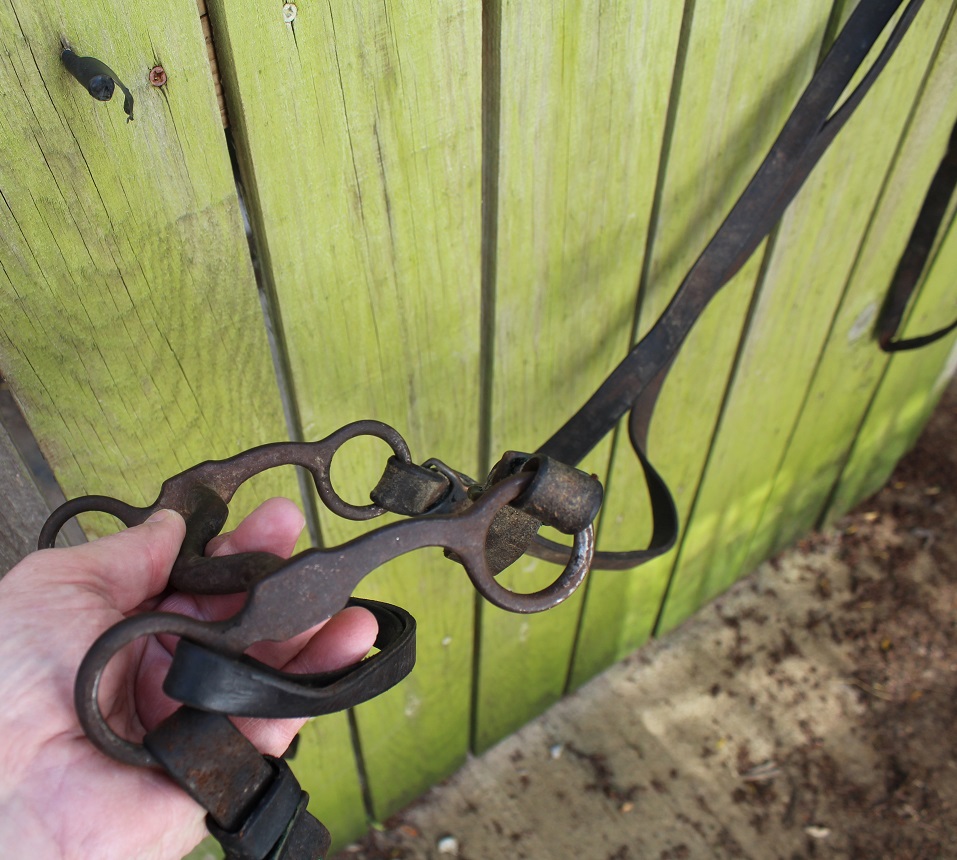
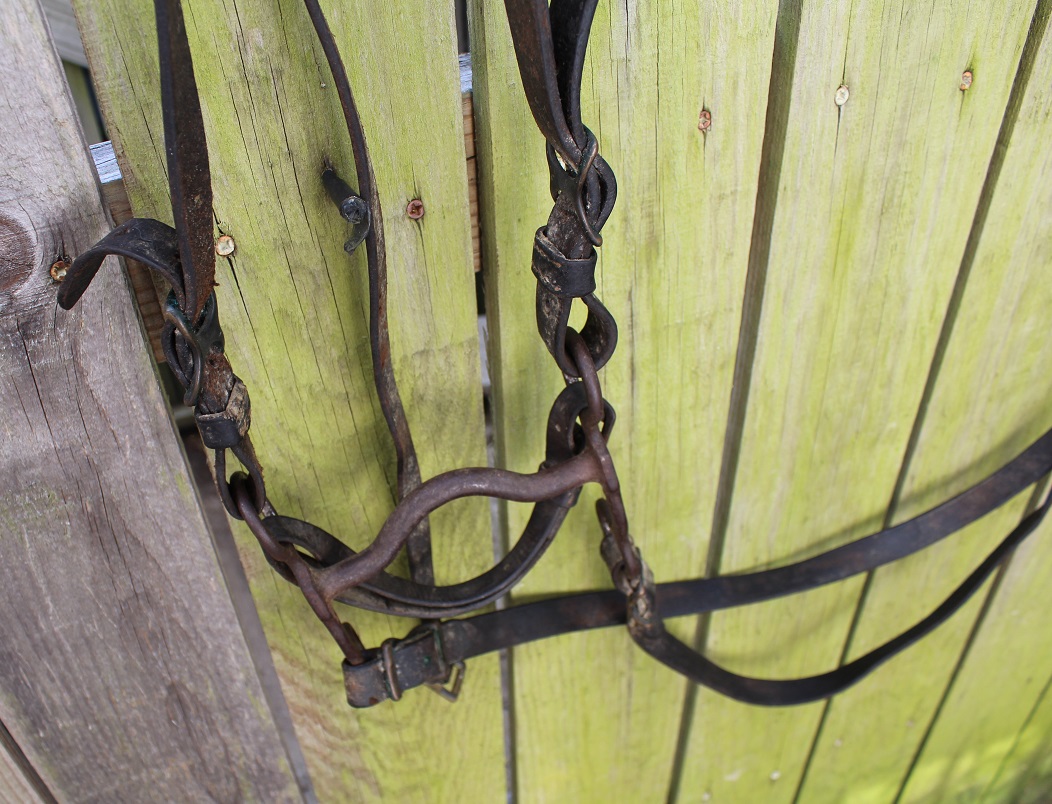
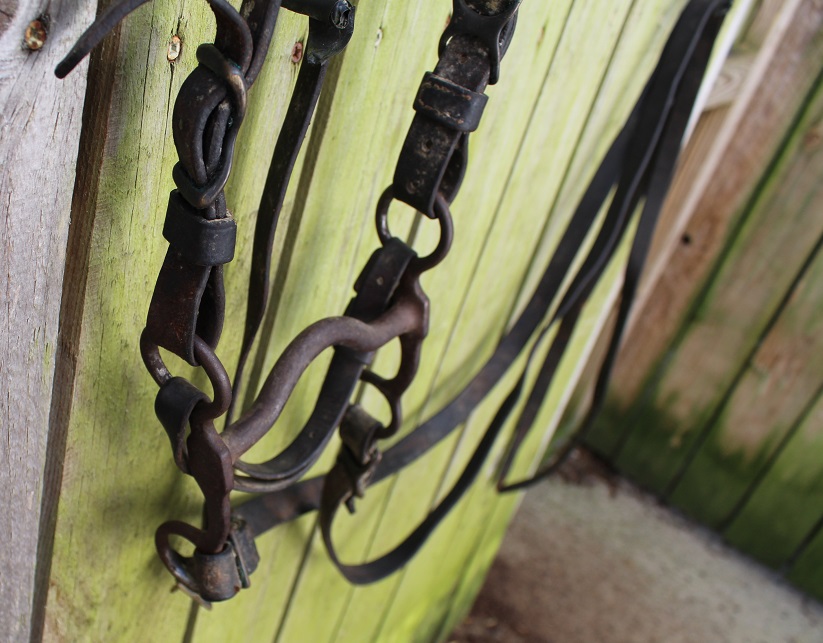
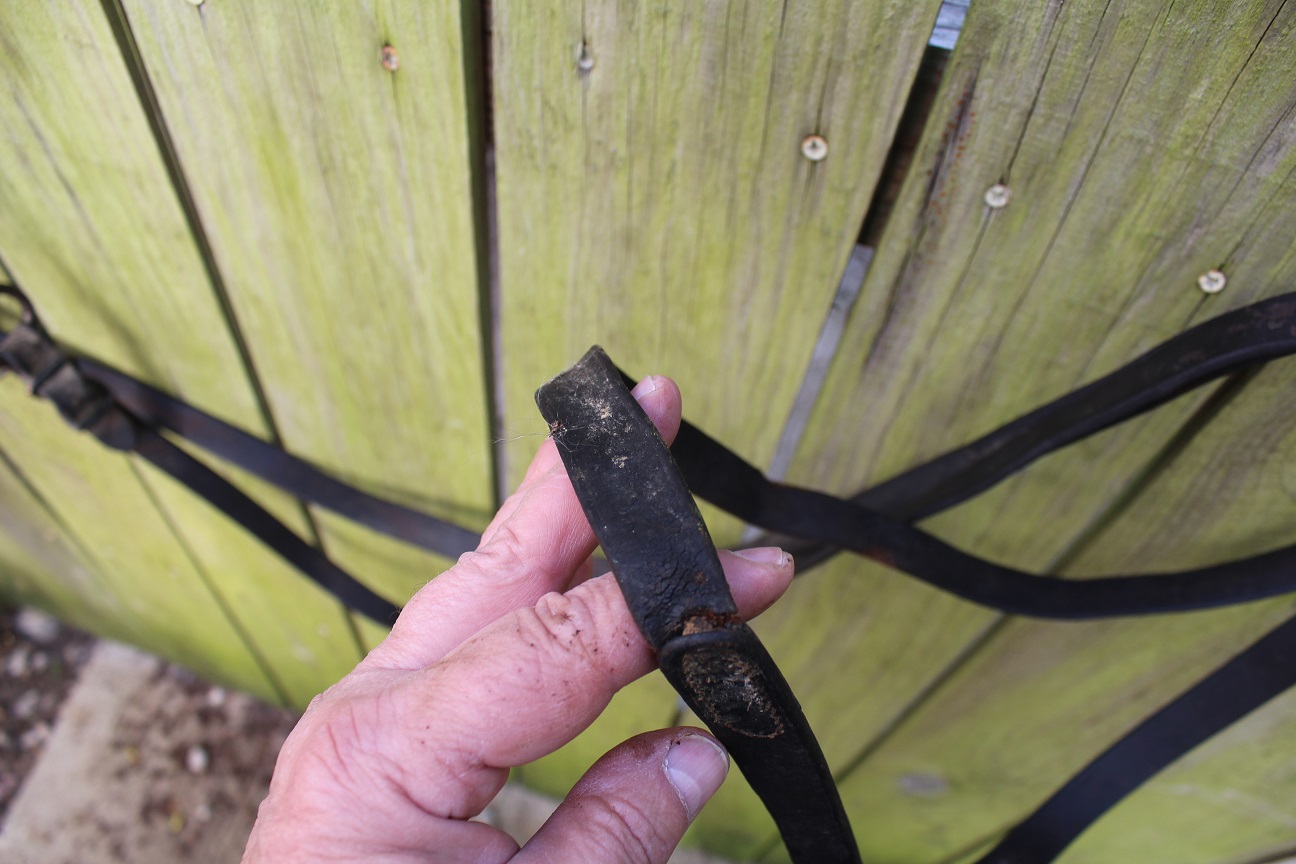
More stuff 134
Here we have a wonderful Black McClellan Saddle from the 1800's. This may be a civilian saddle although it follows the military style. I did find the same style stirrups in CONFEDERATE SADDLES & HORSE EQUIPMENT by Ken R. Knopp which is an excellent book and eveyone that is interested in these saddles should pick up a copy. The text describing these stirrups are listed for you to view. The saddle also has the squared off Sweat leathers or fenders and you can see that in a drawing of saddle parts on page 11 of the book. The saddle is a full size saddle and is complete just missing the Girth and/or Surcingle. The leather is in generally good condition with the usual cracks and is missing a few screws. Although the saddle follows the military pattern the strap mortise plate brass pieces on the saddle themselves are pretty thin and where the pommel ornament front plate was it is missing although the telltale signs of nails are left showing that it was there at one time. There also is no ring staples or foot staples present and looks to never have been. The underneath tree is leather covered as well and shows signs of use. The center of the saddle which is usally open is covered with a ventilated leather cover. A lot of the 19th centurn horses were thin and a full covered saddle would hurt the horses spine so the spline are was left open. This one is still open there just covered with a piece of ventilation type leather. The stirrup is covered with leather and NOT marked with the US that you see on Union Saddles. This saddle displays very well and although it could well be a Military Saddle used by Officers on either side it could very well be a civilian saddle from the period. Take a look at the pics! $695.00

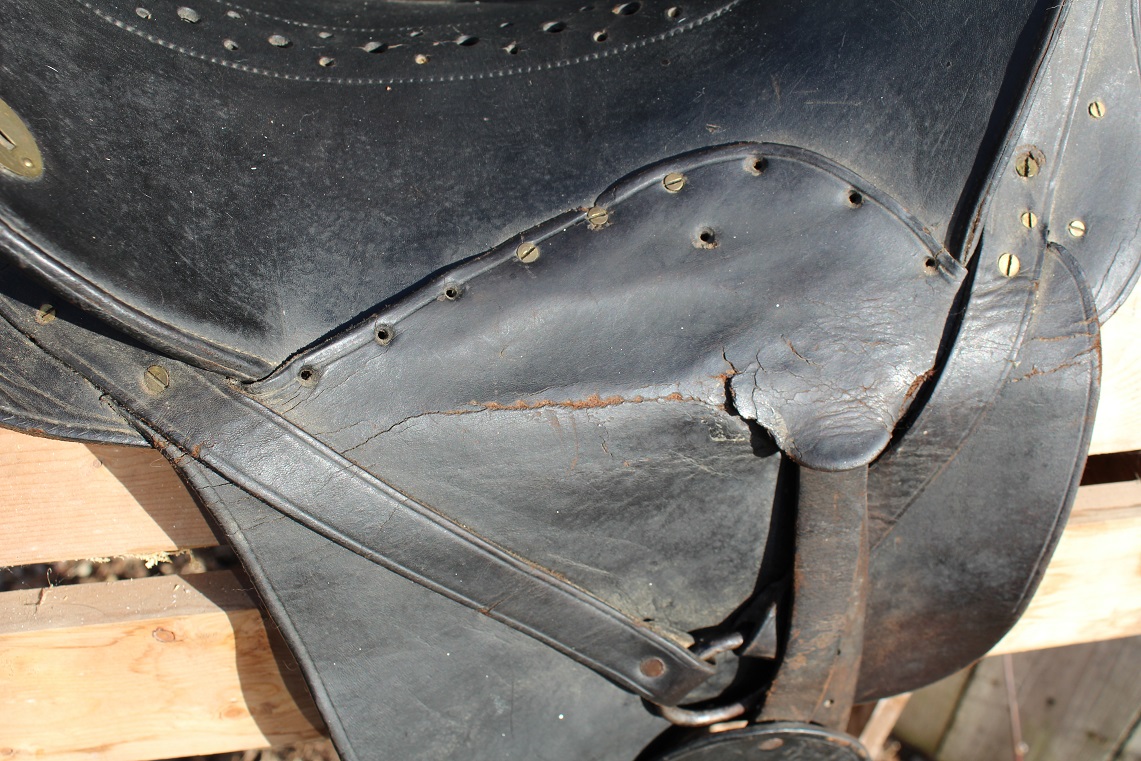

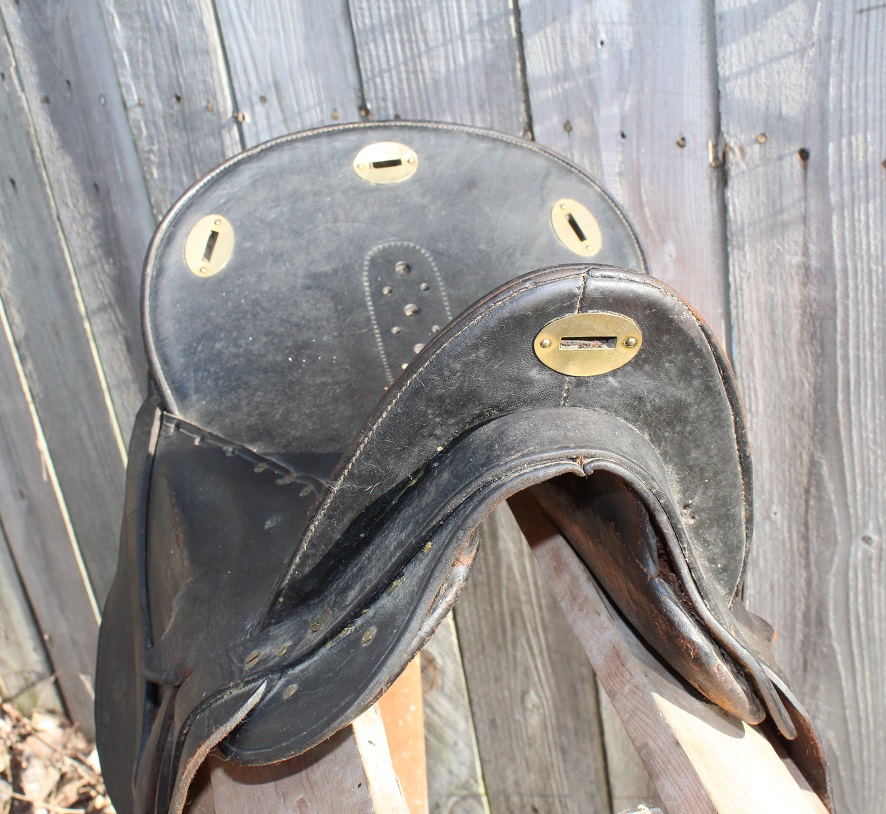

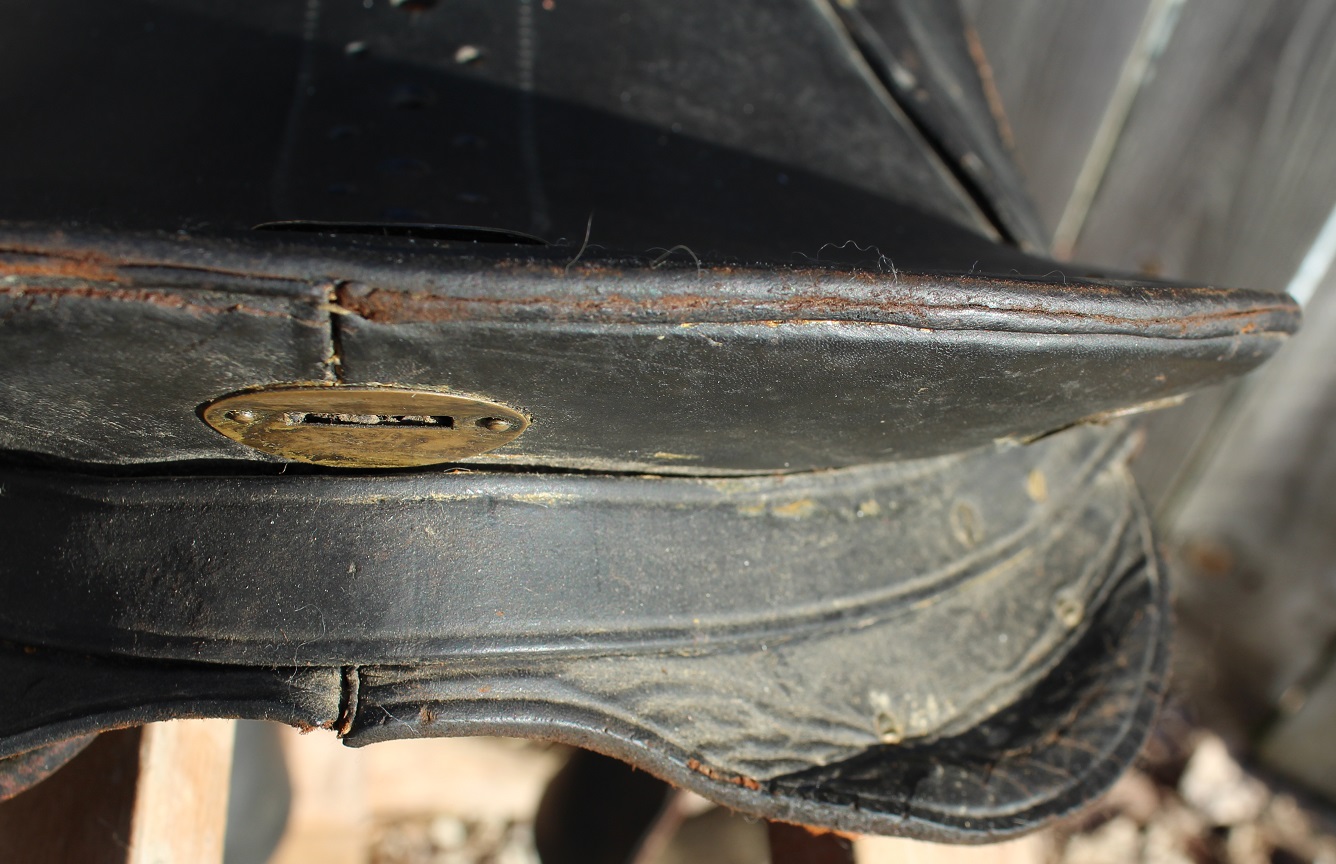
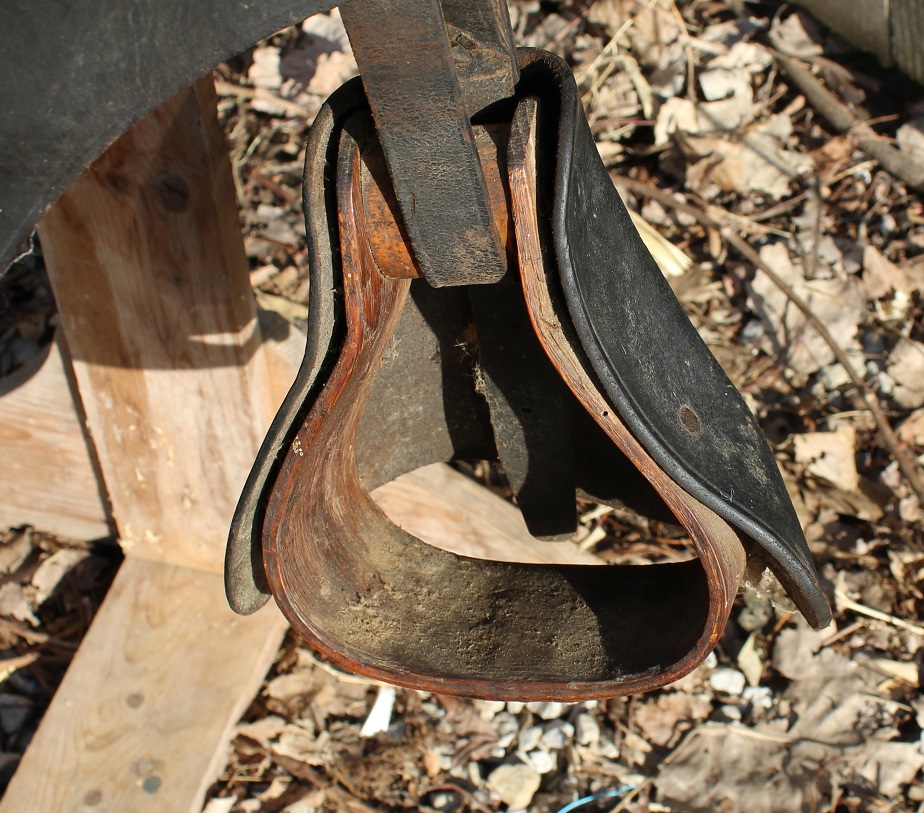
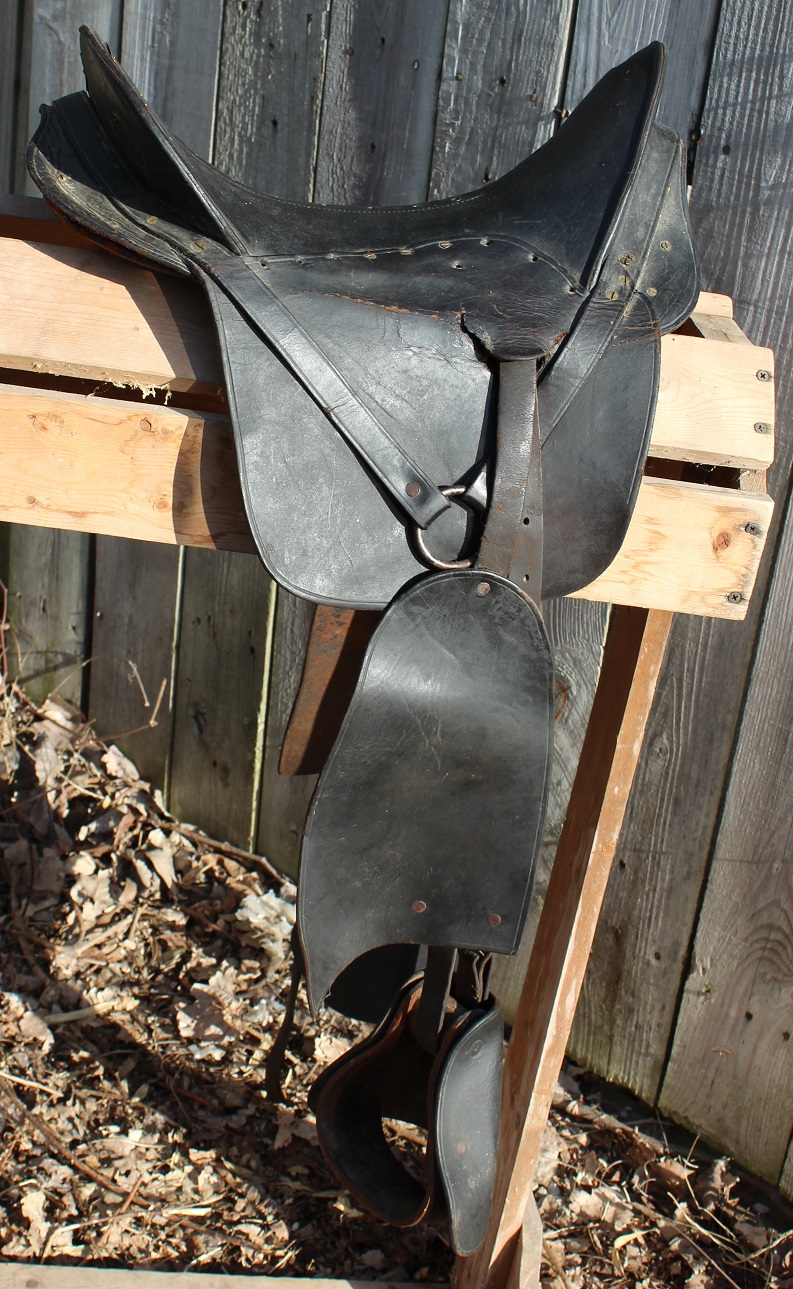

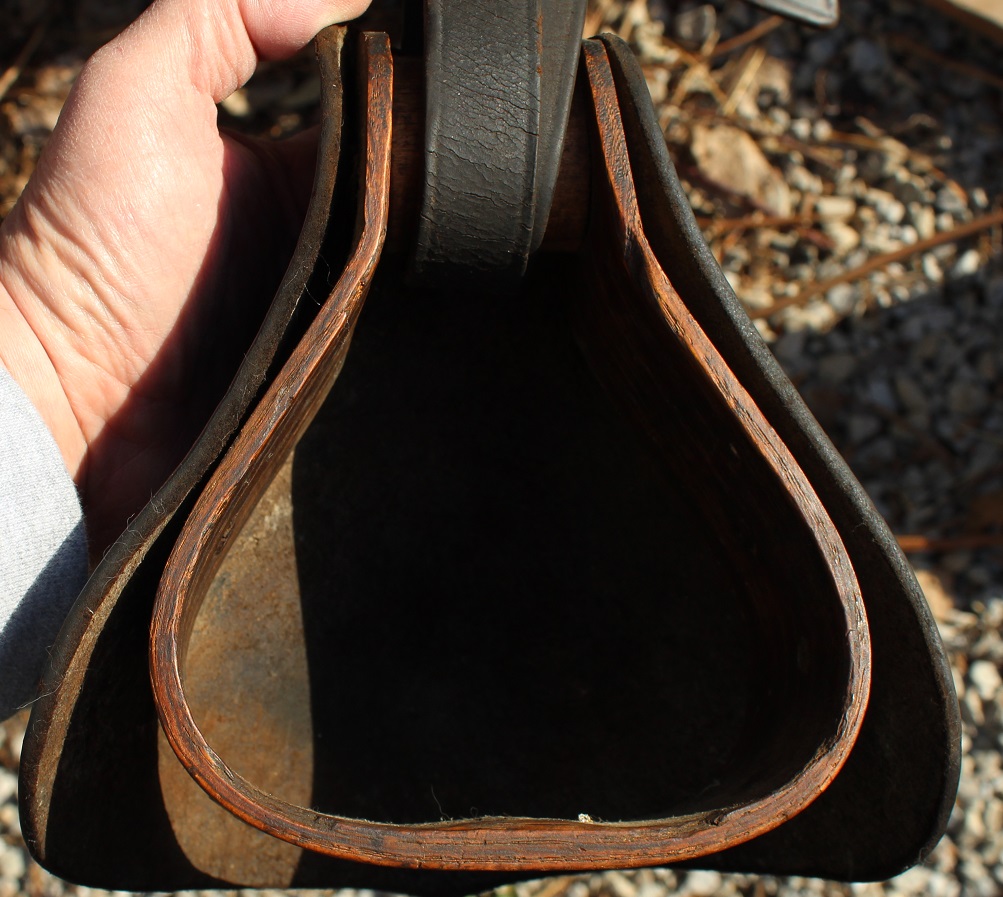
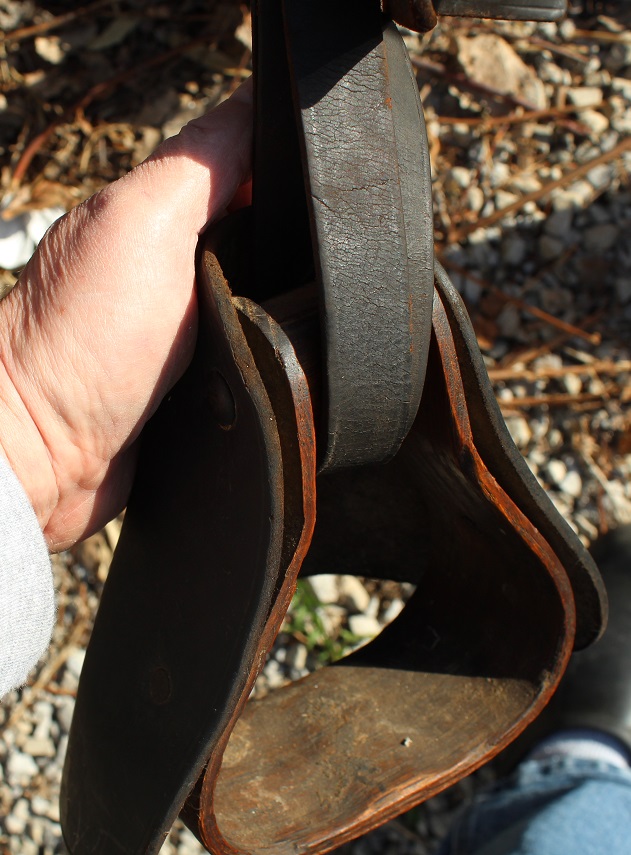
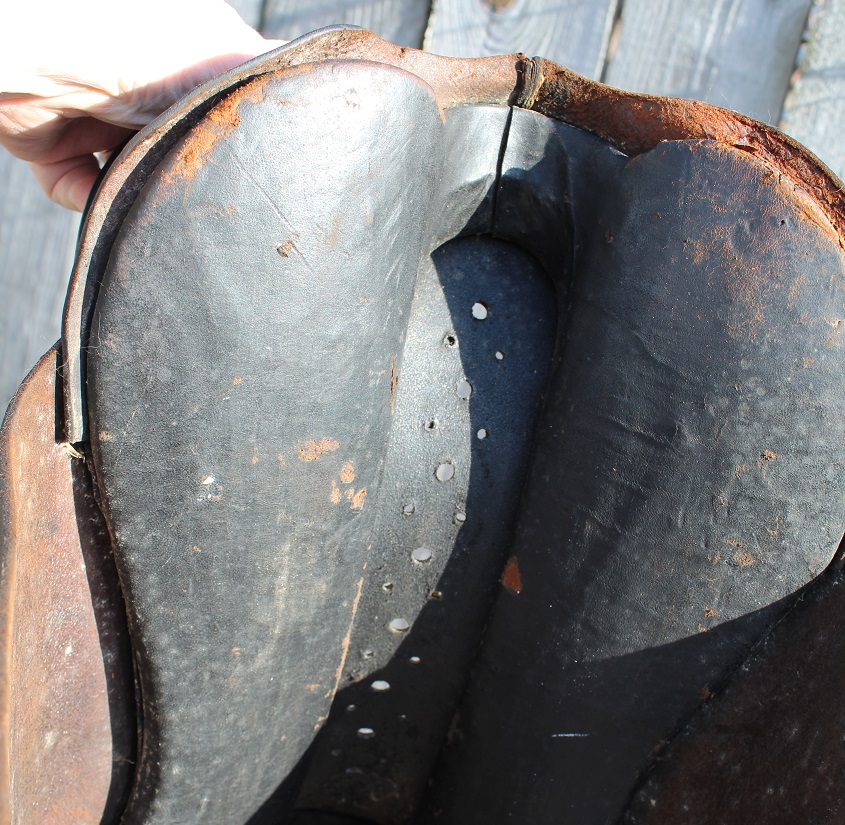
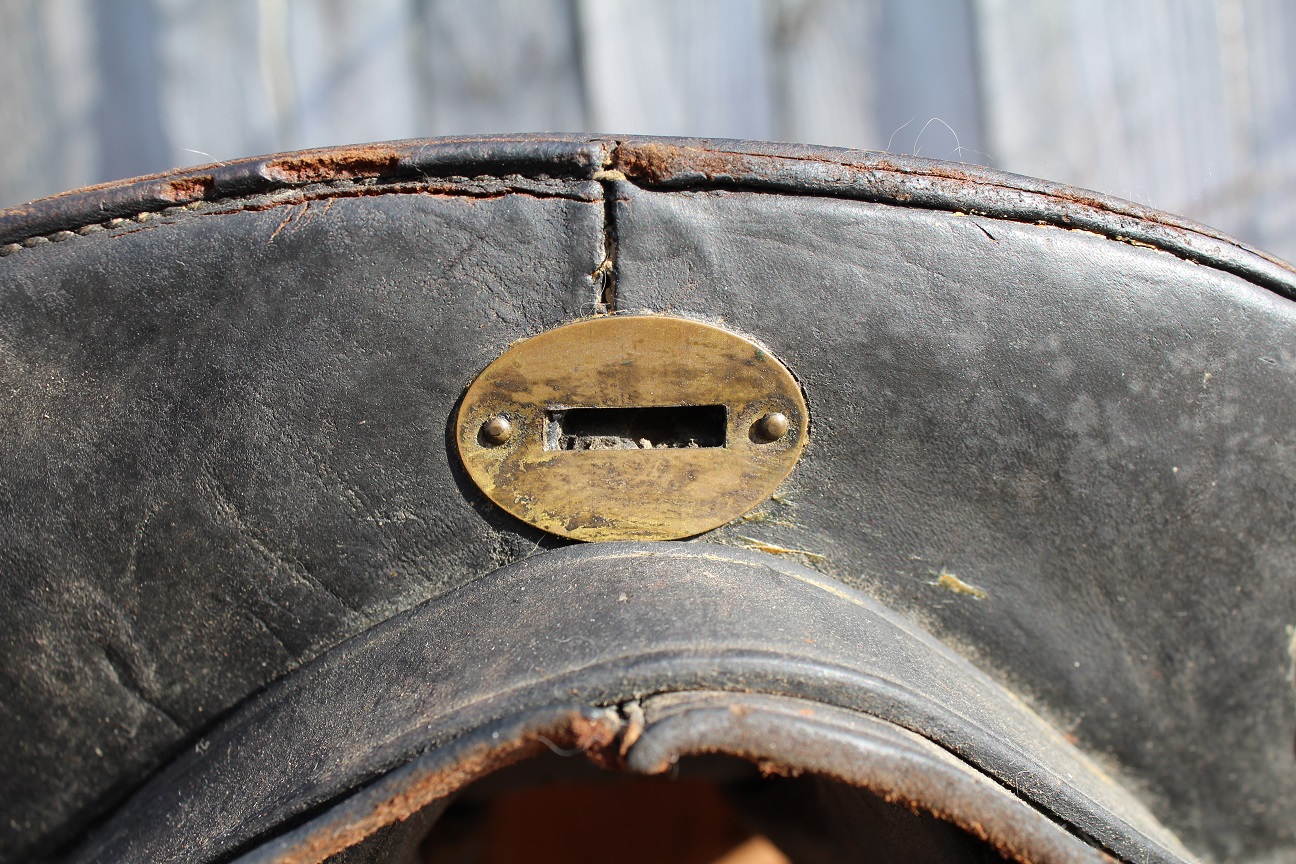
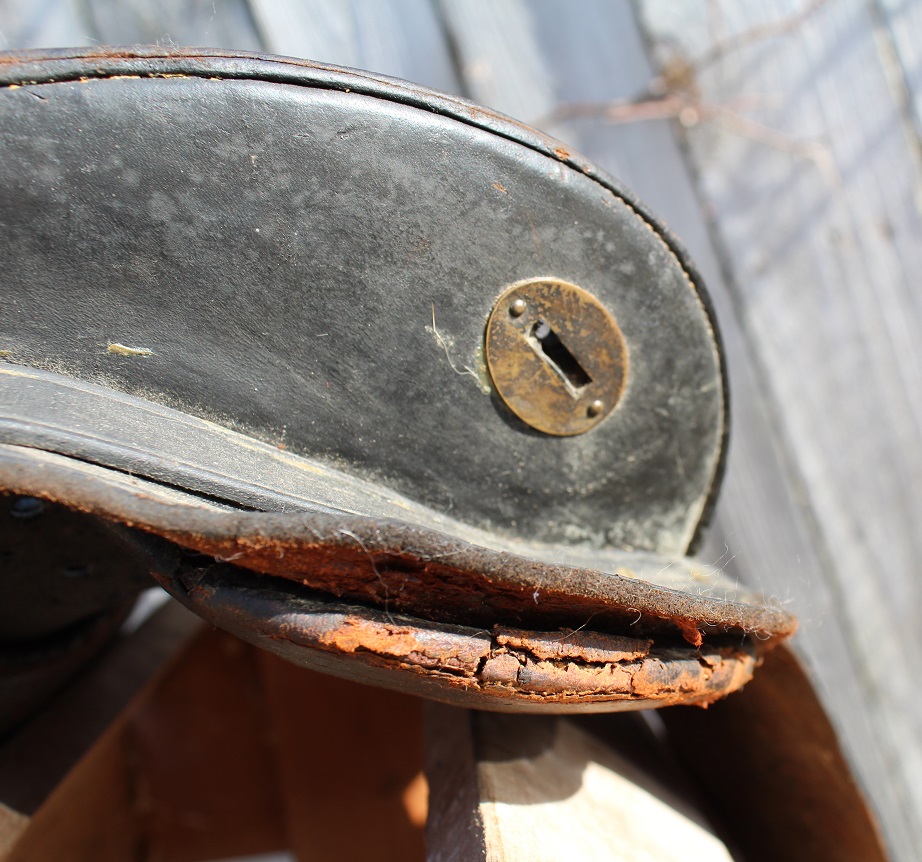


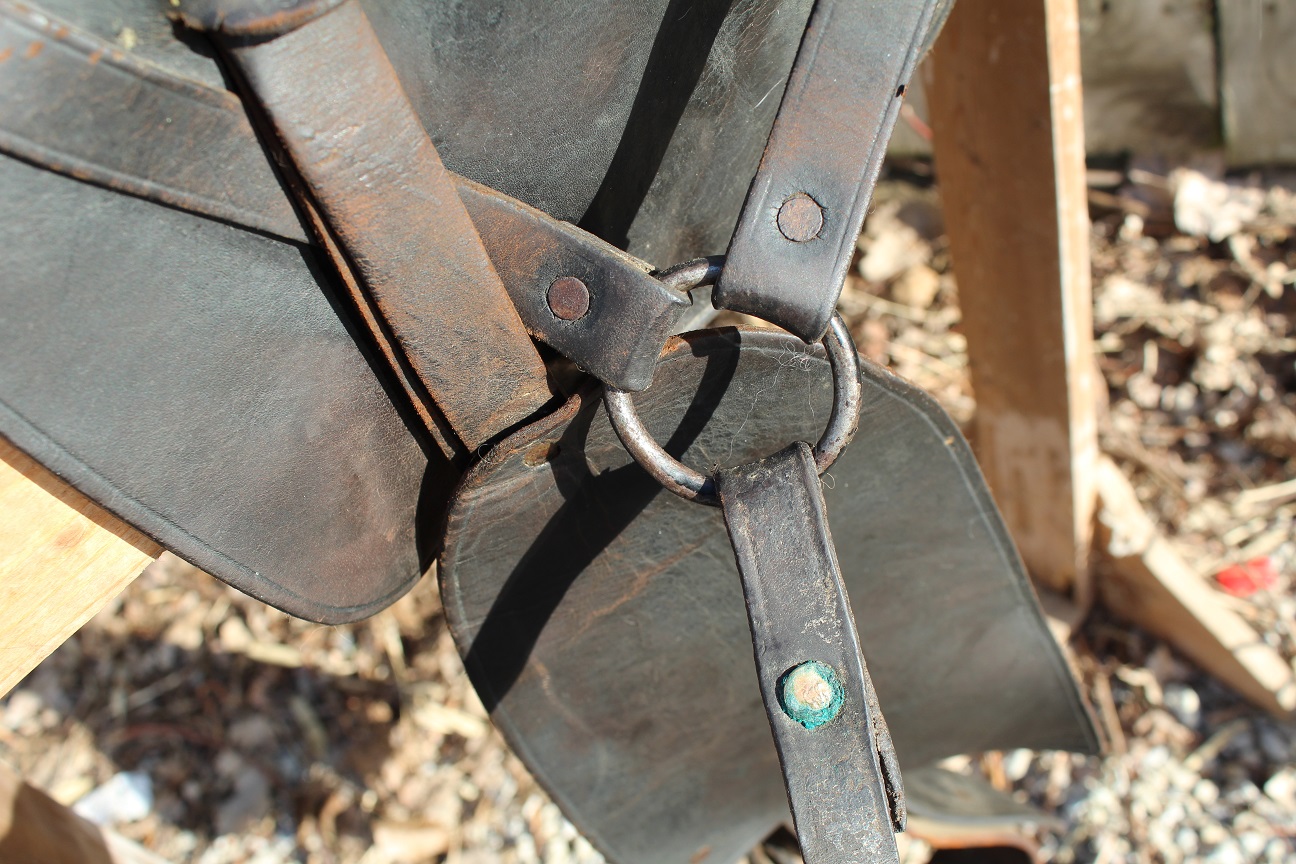

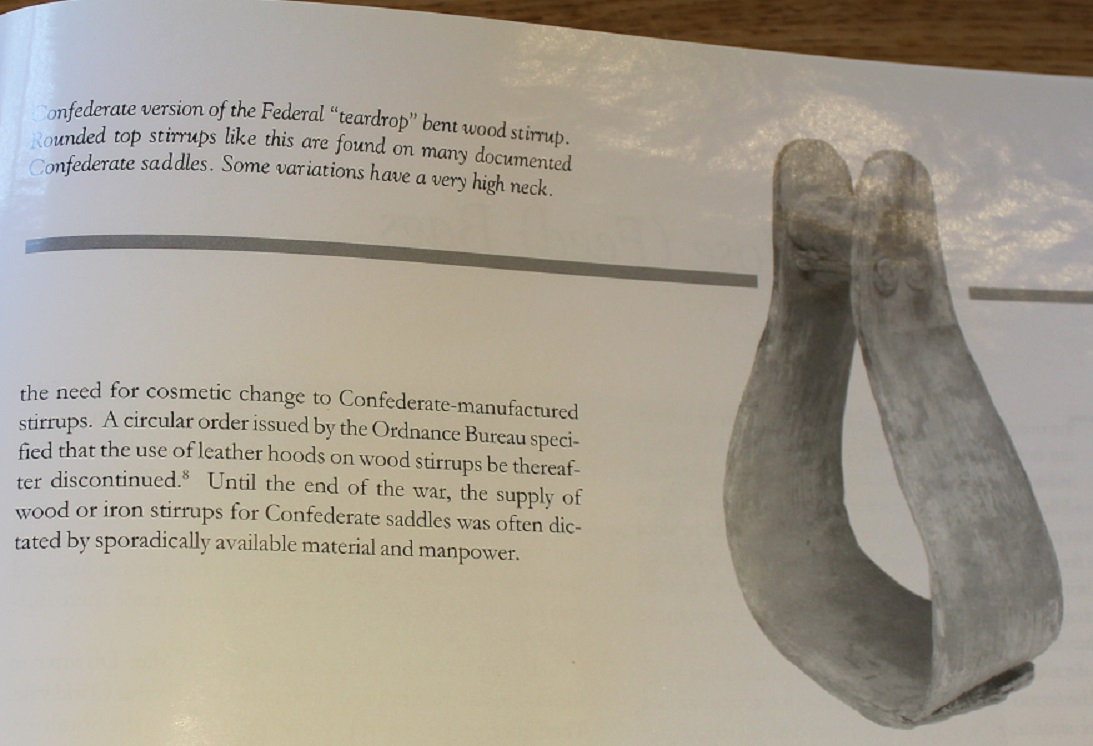
More stuff 133
Here we have a group of medals with most being GAR but some being Sons of Union Vets and some being Women's Relief Corp (GAR Auxillary) and at least 1 Daughters of Union Vets. Here they are from left to right starting at the top:
1. Washington 1892 w/ Bust of General Sheridan. Full ribbon no attachment $65.00
2. 1896 Washington and Alaska celluloid large button with Delegate attachment and red/ white and blue ribbon with 1896 imprinted on it. $65.00
3. Women's Relief Corp (GAR auxillary) three piece ribbon and medals being extra nice with a Buffalo hanging from the suspension ring. $25.00
4. Dept of West Virginia large 7 inch ribbon with flag ribbon attached to the top. This one is from 1899. There are tears to the middle of the ribbon but it's reinforced on the reverse. $40.00
5. 19th Annual Indiana GAR Encampment 3 piece ribbon with celluloid drop 1898 Columbus, IN. Still decent shape. $30.00
6. Delegate GAR medal with celluloid drop in metal ring. Shows the WRC medal in the Center so probably mostly Women's Relief Corps. Shows Normal School on Front. $30.00
7. SOLD!!! 1900 GAR West VA medal being 3 pieces with celluloid drop that shows the Marion County Court House, Fairmont on the front . State of West Virginia state Seal on the back in Color. Entitled SOCIETY OF THE ARMY OF WEST VIRGINA. $45.00
8. Medal and ribbon with drop showing spinning wheel entitled LADIES OF G.A.R. STATE G.A.R. ENCAMPMENT 1910 HOLLAND MICH. Nice! $25.00
9. Regular Daughters of Union Veterans 2 piece metal including the ribbon. $25.00
10. 3 piece Crawfordsville GAR medal missing ribbon for 1909 with Lew Wallace bust on the bottom and 3 Indiana Heros busts on the middle bar. For this piece $75.00
11. Here's an early Sons of Veterans two piece medal with ribbon. Nice patina! $35.00
12. Here's a medal that was used by both the Masons and Civil War Veterans to honor a fallen comrade. It has a black ribbon with the Maltese cross. $10.00
13. SOLD!!! 1897 West Virgina GAR medal. 3 Pieces with brass top bar, middle ribbon and bottom celluloid drop in metal ring showing the Commander Romeo Freer. Dated 1897 $45.00
14. 1897 NY GAR Souvenir 2 piece all brass medal. Nice! $20.00
15. 1898 GAR Cincinnati Medal with top attachment missing and frayed ribbon. The bottom drop is really nice however. $30.00
16. Here's another early type of Sons of Veterans Medal that shows the 3rd type of Eagle used on the Grand Army of the Republic Membership medals. This is a nice 2 piece medal with ribbon. $35.00
17. Here's an outstanding Denver 1905 National Encampment Medal. Cowboy riding Bronco!! $65.00
18. Des Moines, 1931 Celluloid GAR National Encampment button. Nice quality $12.00
19. 1899 GAR Cincinnatti 2 piece brass medal. Souvenir National Encampment Nice! $35.00
If you have any questions about any piece let me know! Thanks!
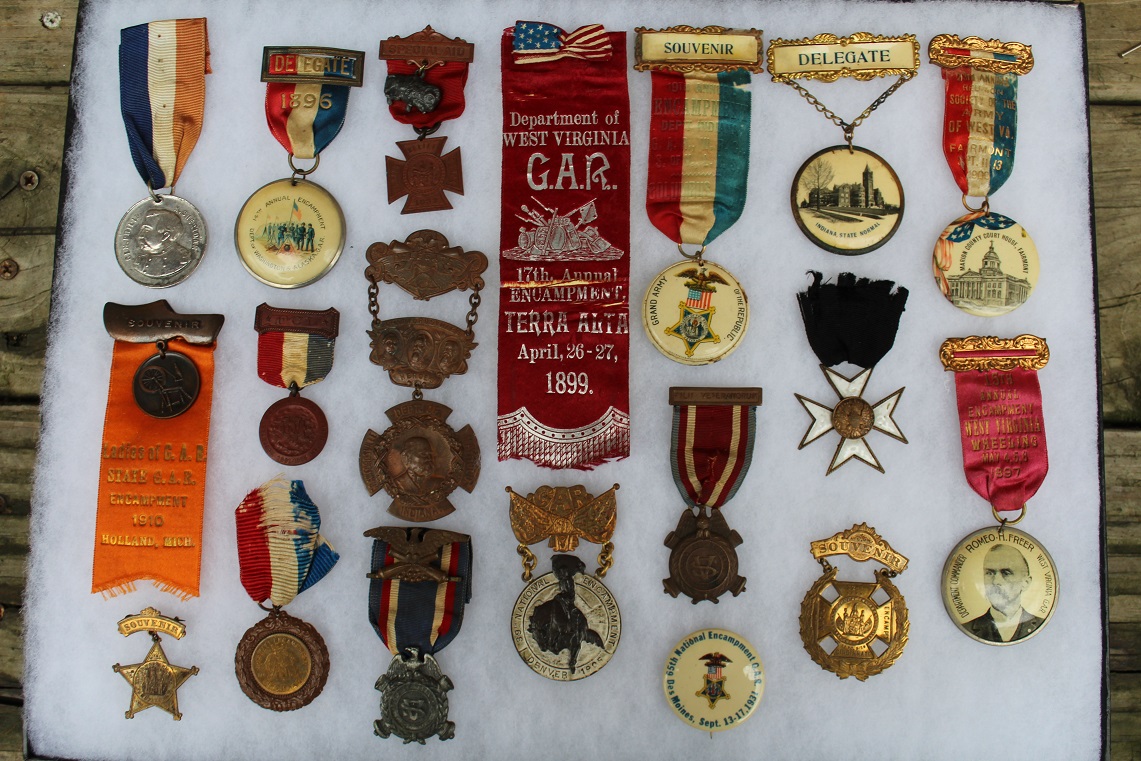
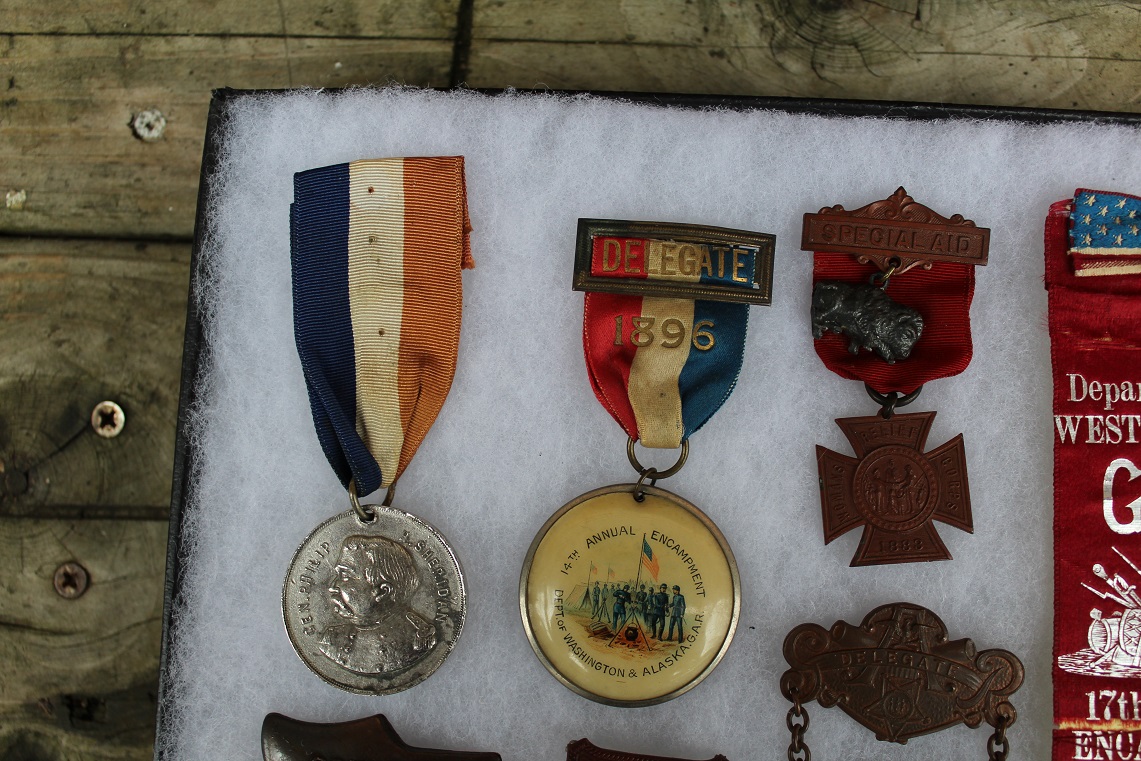
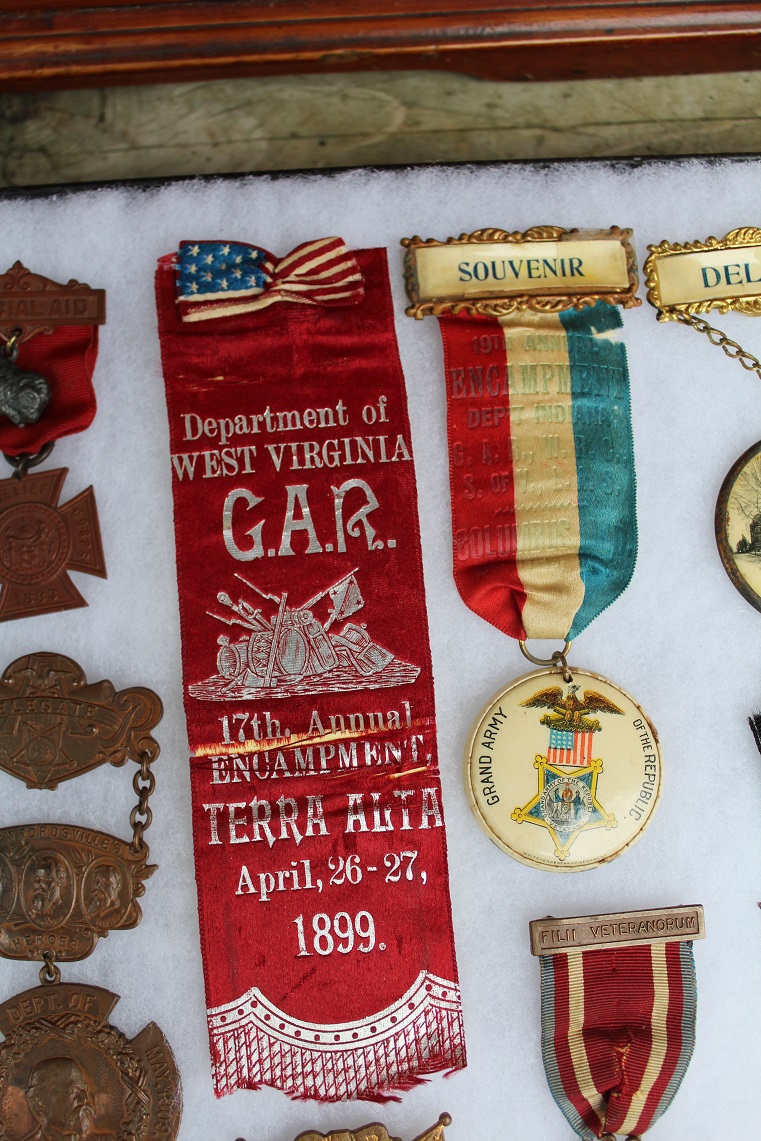
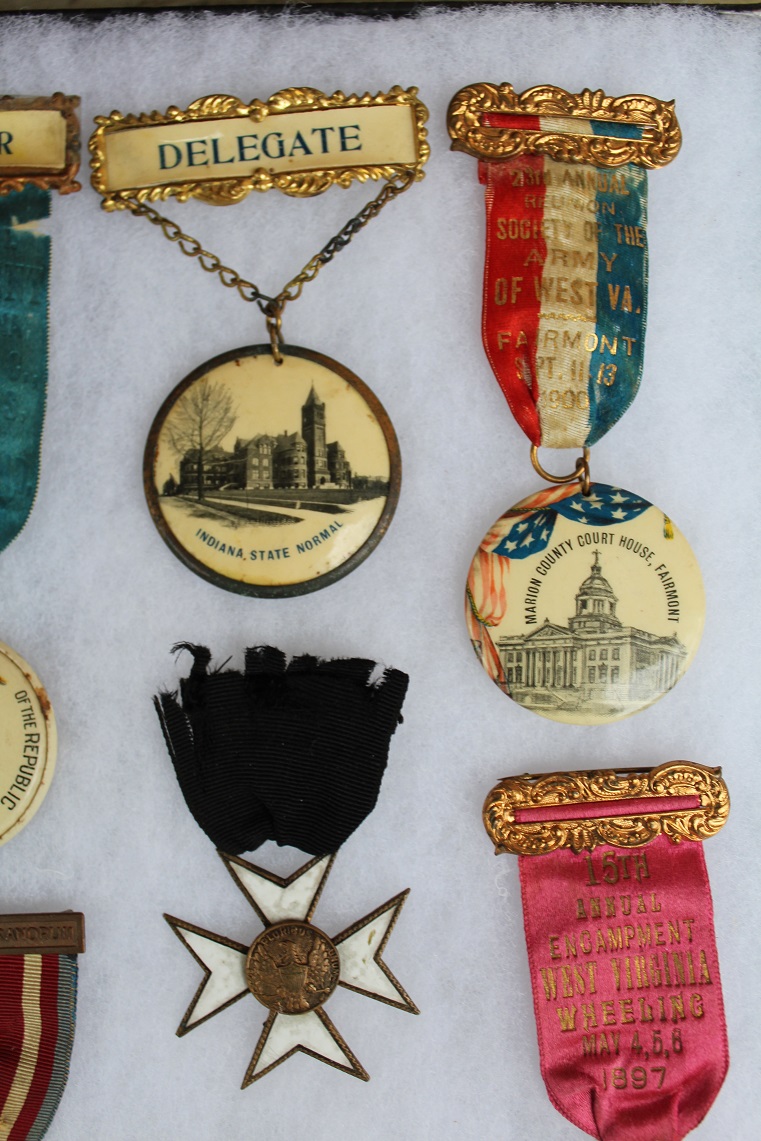
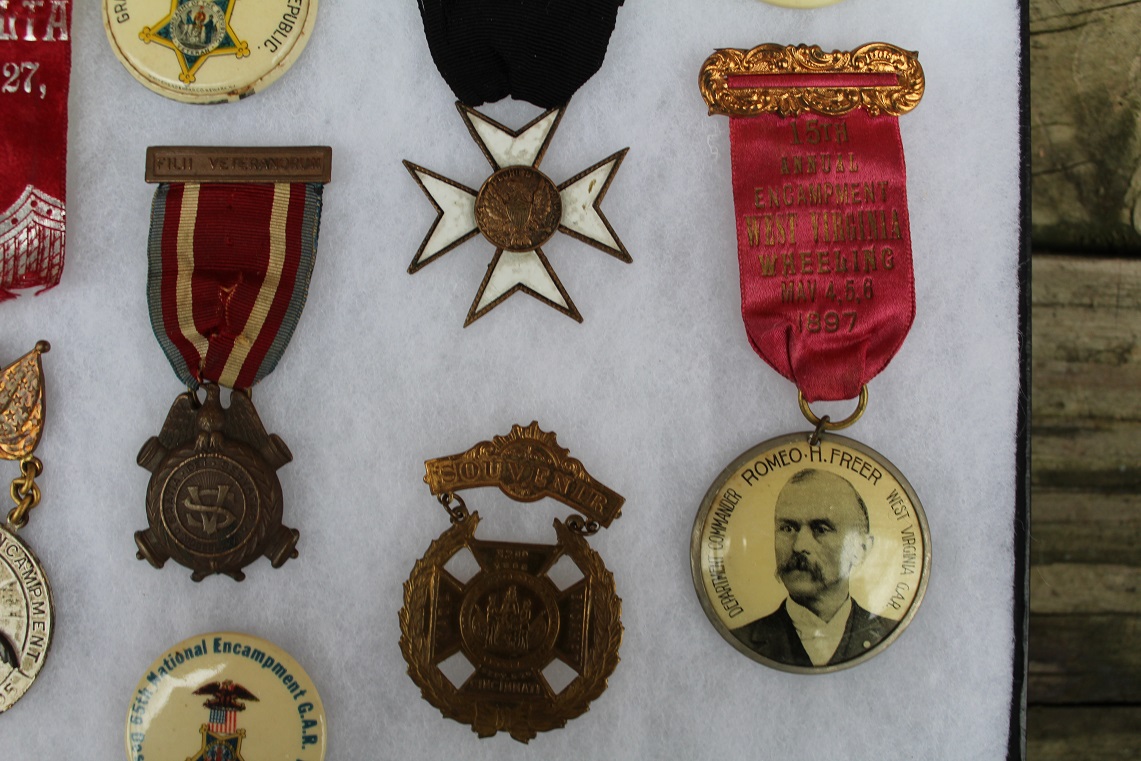
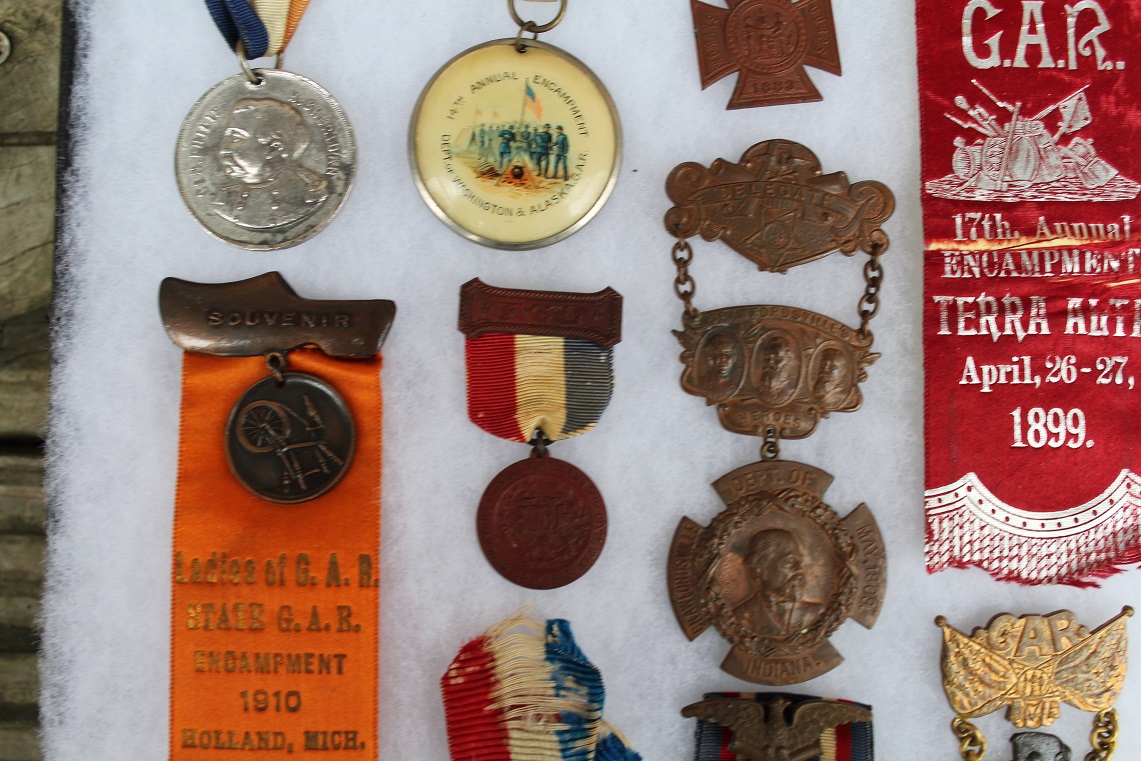
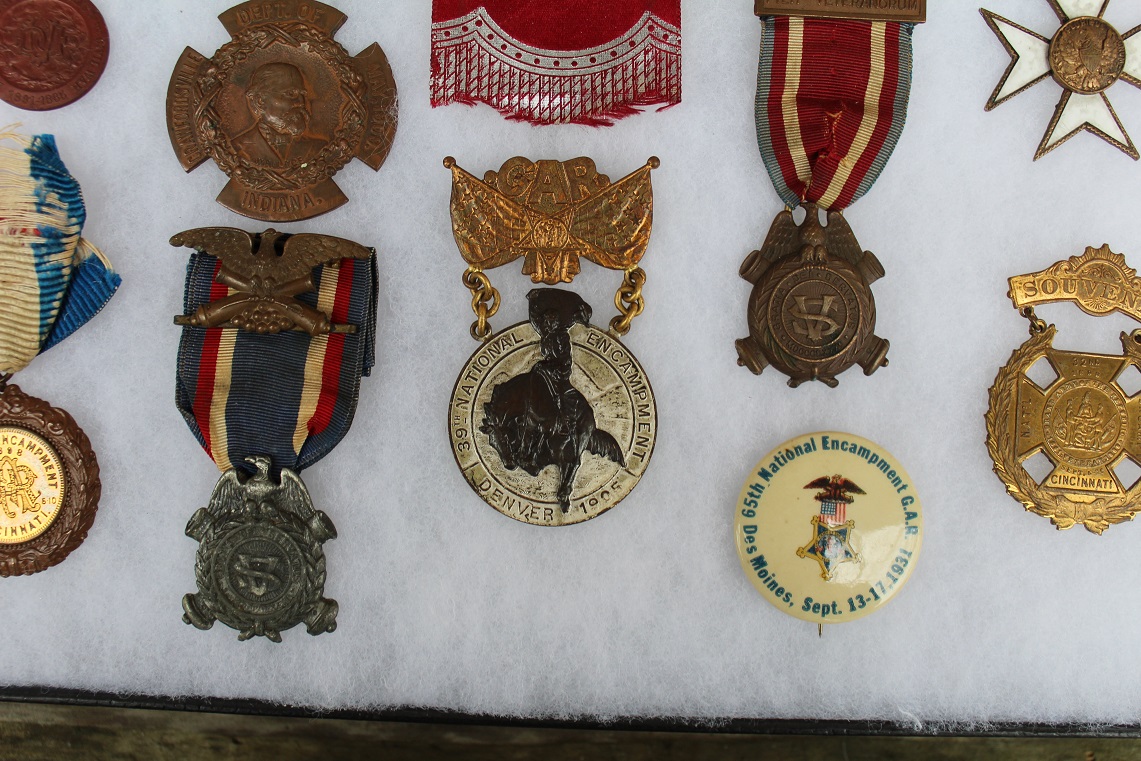
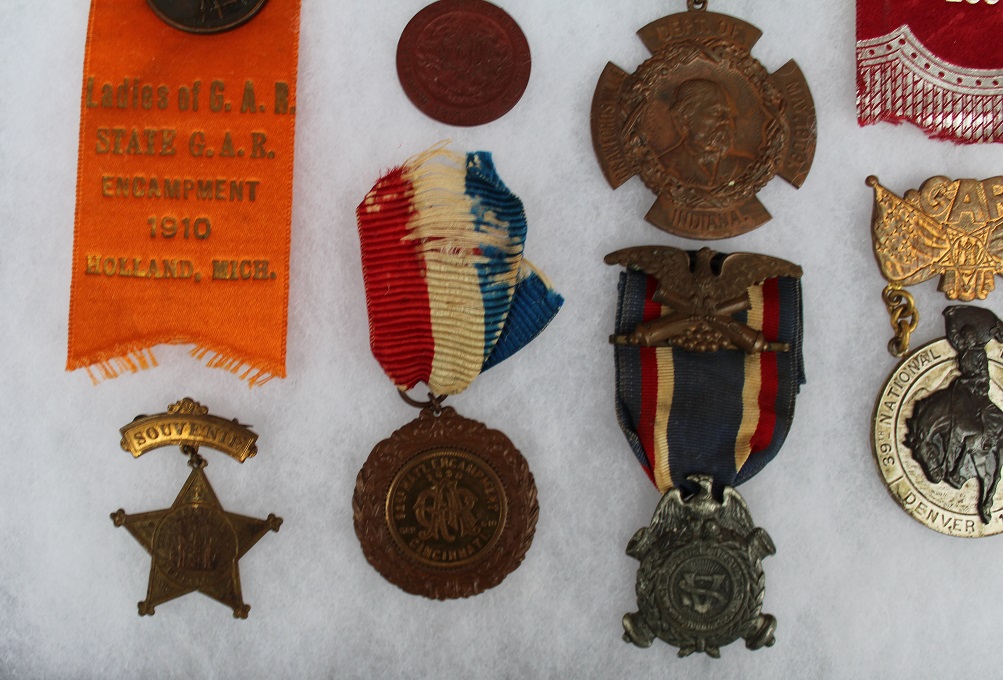
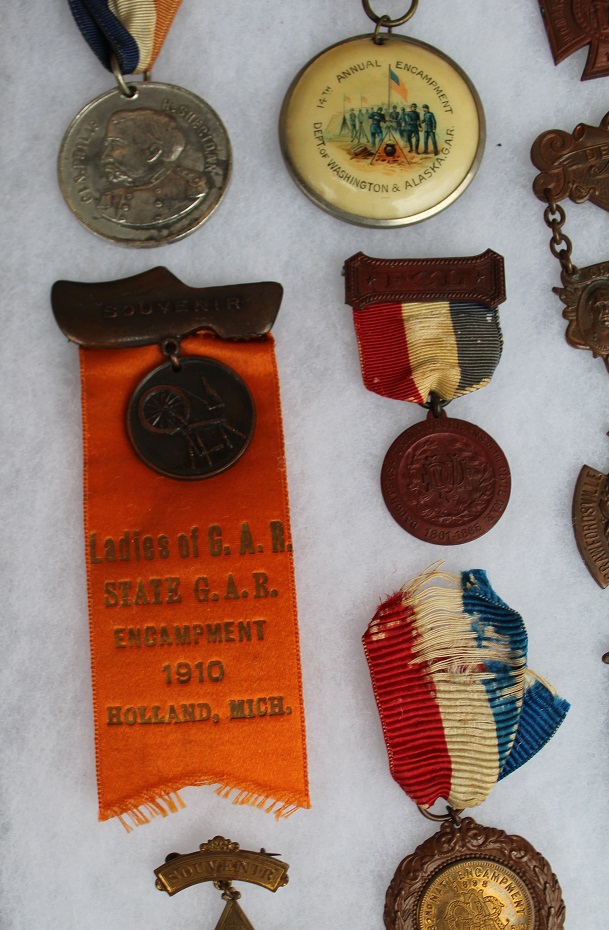
<
More stuff 119
SOLD!!!
Here we have a Harrington & Richardson Saw-Handled frame spur trigger revolver made from 1878 to 1883. This revolver is .32 caliber single action model with 5 shot capacity. This revolver is the Model 1 ½ rimfire revolver with a 2 ½ inch octagonal barrel. This is a nickel plated model with about 90% of the nickel remaining. The barrel markings are quite nics as well as the serial number of 3596. There were about 10,000 of this model made. The actions works very well on this revolver. The checkered hard rubber grips are in excellent condition as well. All in all it’s a well above condition example of this firearm. For this nice revolver $250.00 ANTIQUE SO NO FFL NEEDED


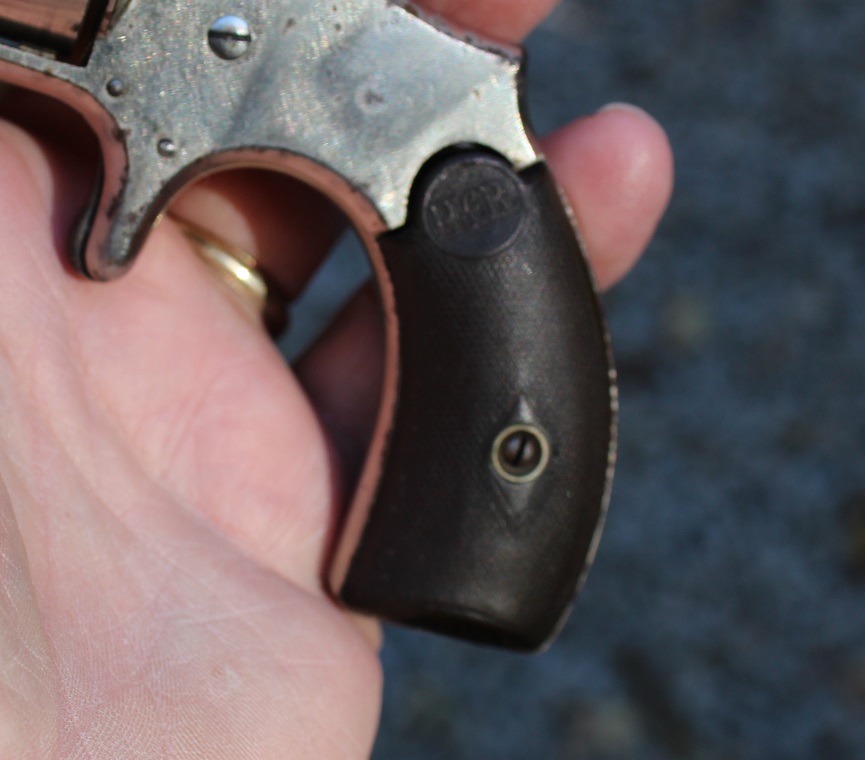
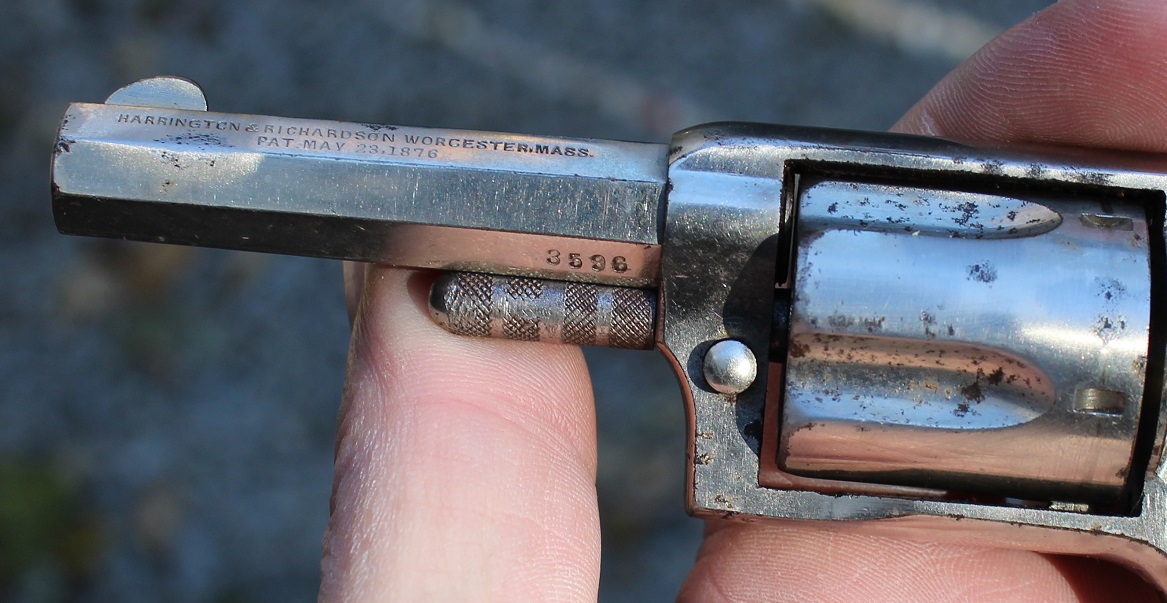

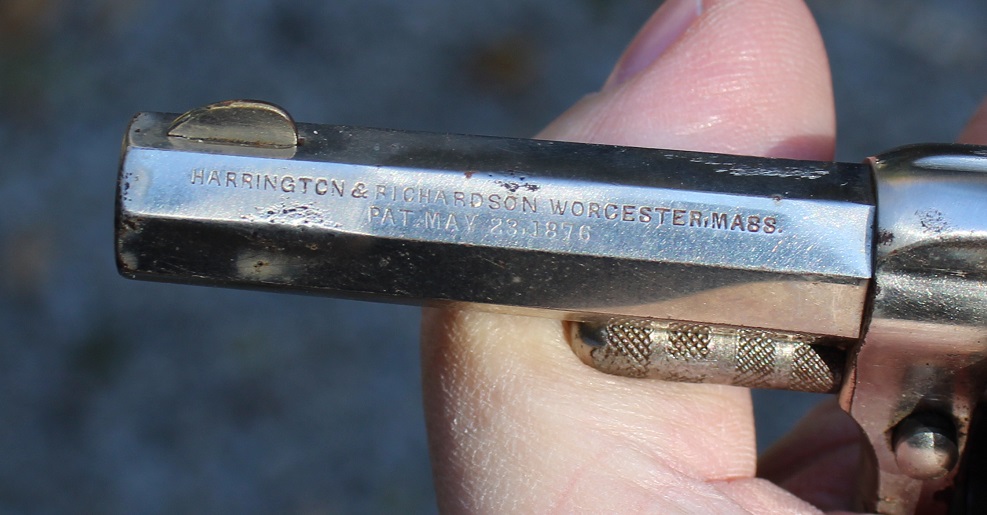
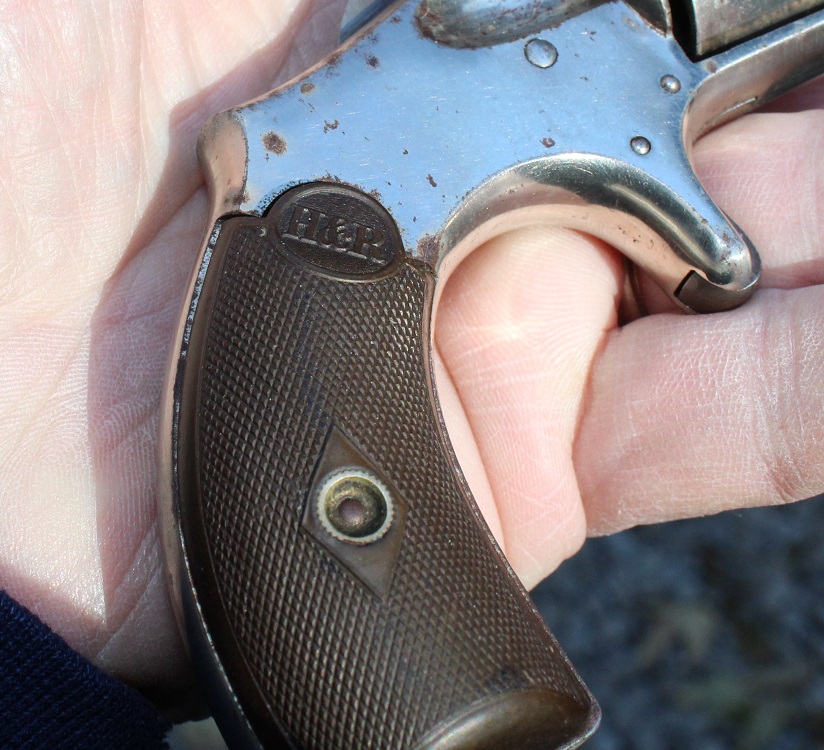
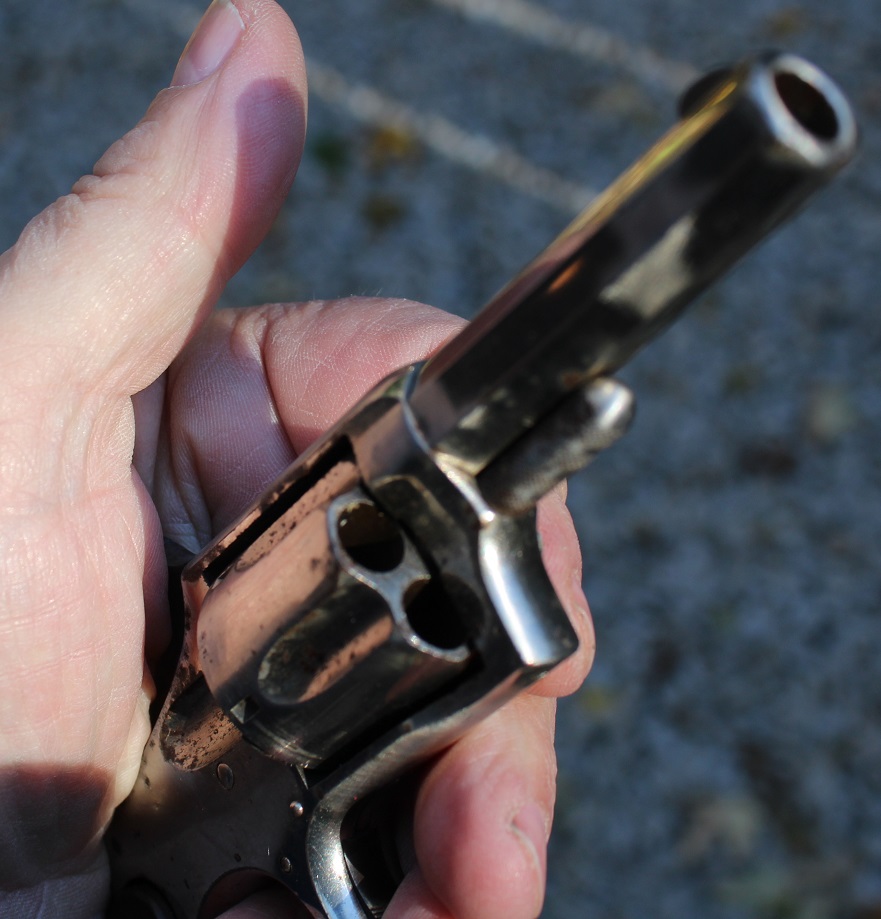

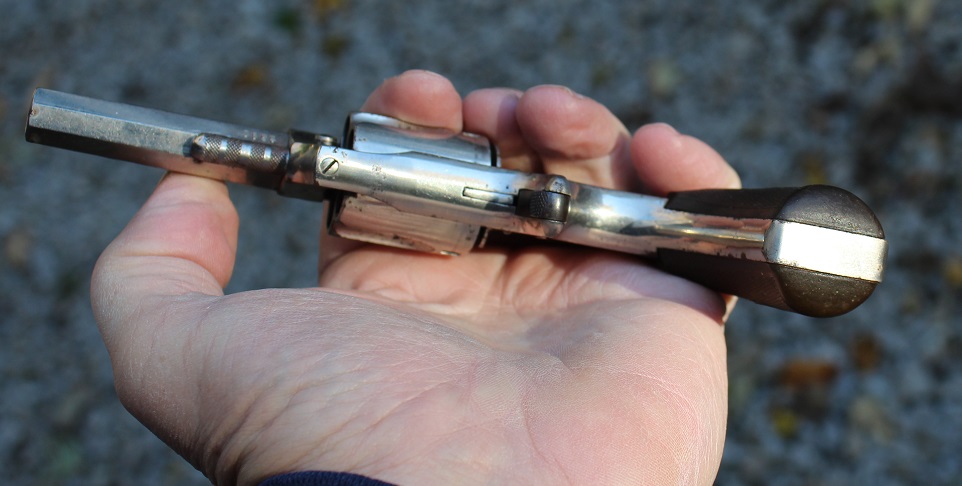
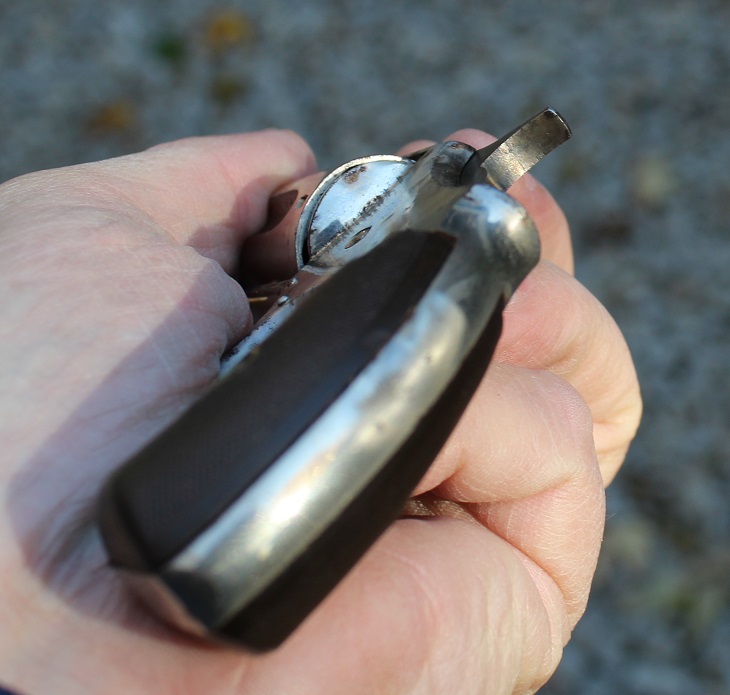
More stuff 118
Here we have a Whitney birdshead .32 caliber single action 5 shot revolver in nickel. This is a brass framed model. The barrel is a rare 2 ½ inch long octagonal barrel with the makers markings on the top. This is the original barrel and not a cutdown so it’s RARE! The Whitneyville markings are weak and some letters impossible to see but the PAT MAY 23, 1871 are clear and quite sharp. The nickel is about 85% left and bright. The serial number on this piece is 687 B. These little revolvers were made from 1871-1879 with a total of all models being approximately 30,000. The action works perfectly in this little revolver and the birdshead grips, which are wood, are in great condition. This is listed at a Model No. 1 ½ and being Whitneyville marked. There were 5 different models made. For this one $375.00 ANTIQUE SO NO FFL NEEDED

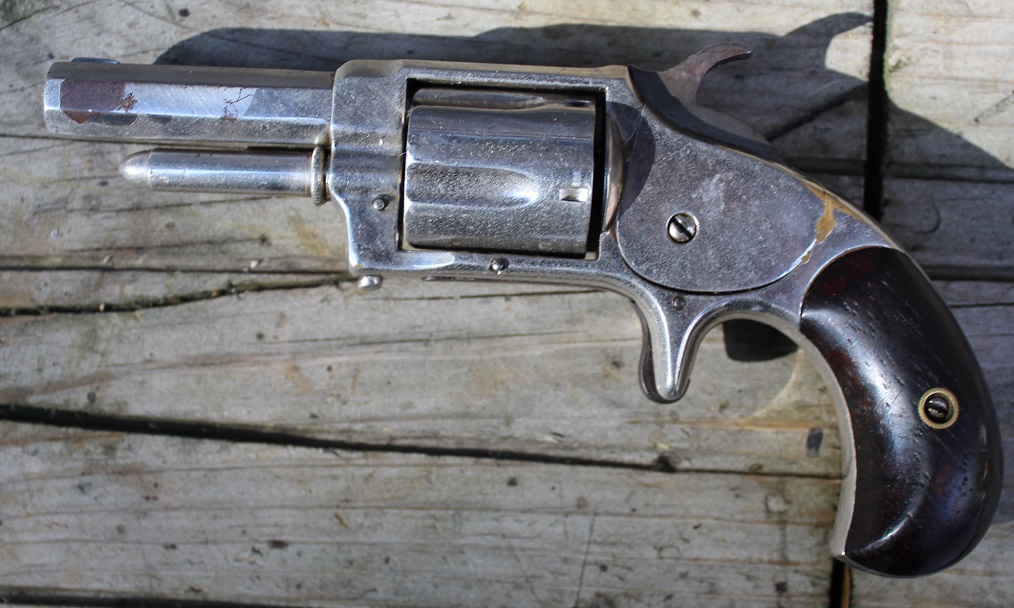


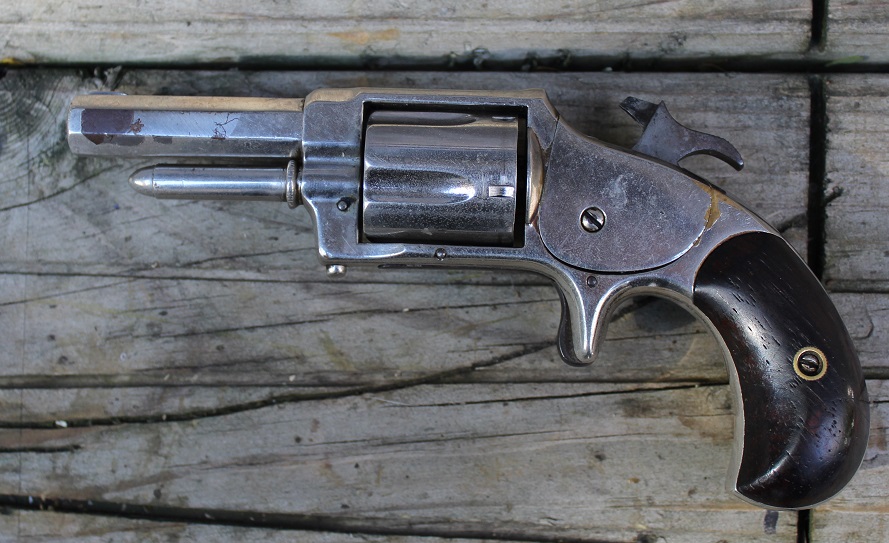

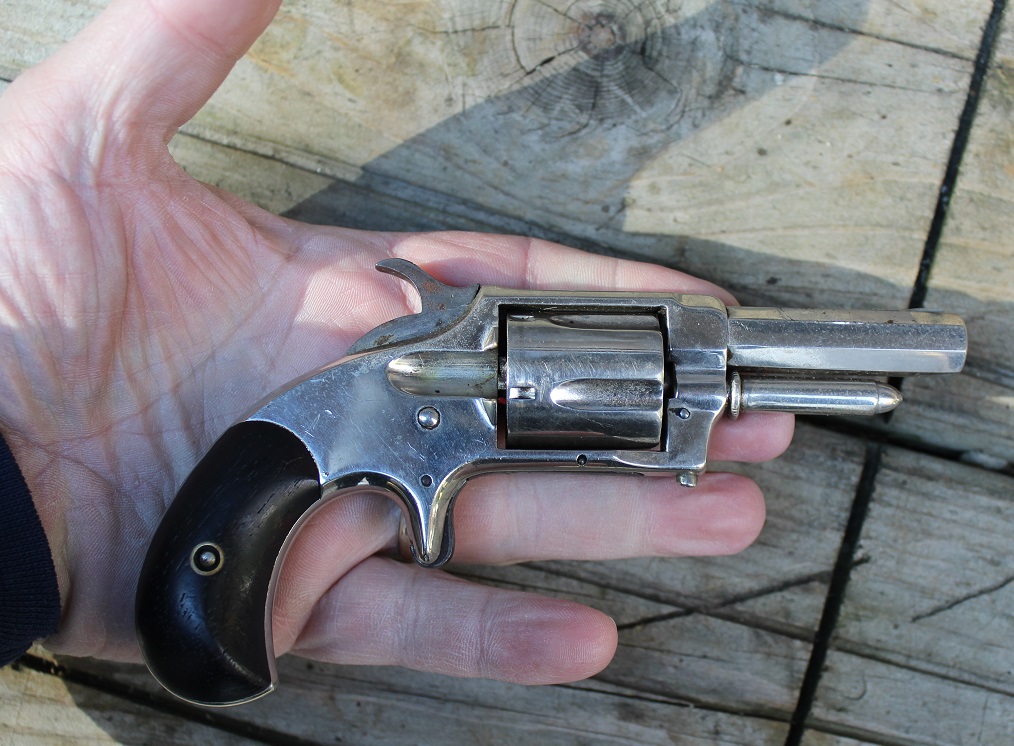
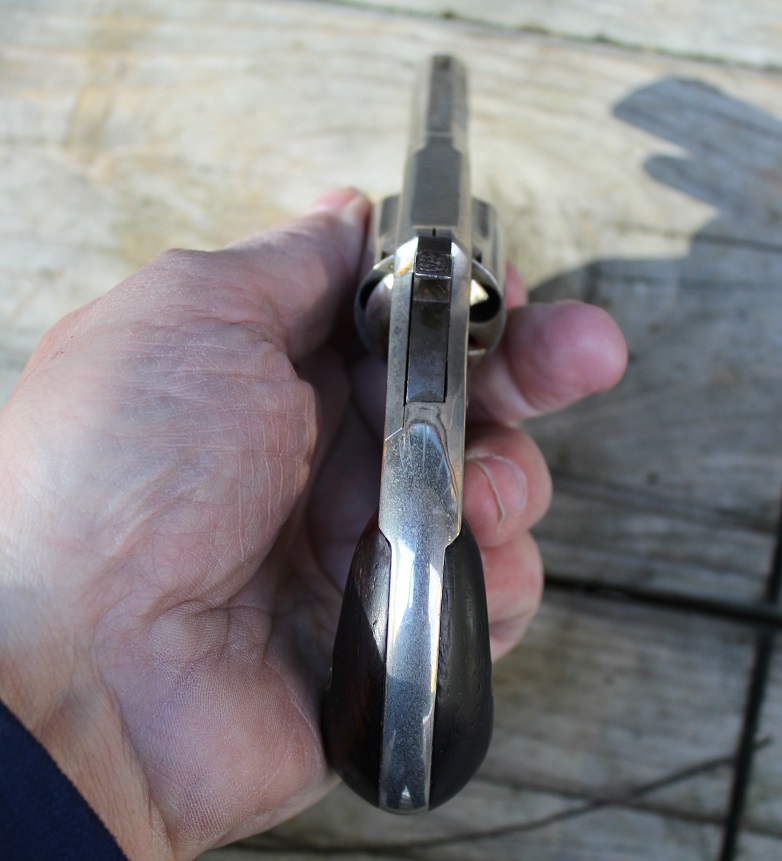


More stuff 100
Here are a few Civil War Dug items that I just got from a Friend of mine. He received these from a friend more than 30 years ago. They were aquired legally in Virginia from private land but he cannot remember where they were dug. First we have two US Box Plates. The one on the left is complete with all back lead and both hooks albeit they are rusty as you can see in the pics. For this one $120.00 Note: This one is SOLD!!!
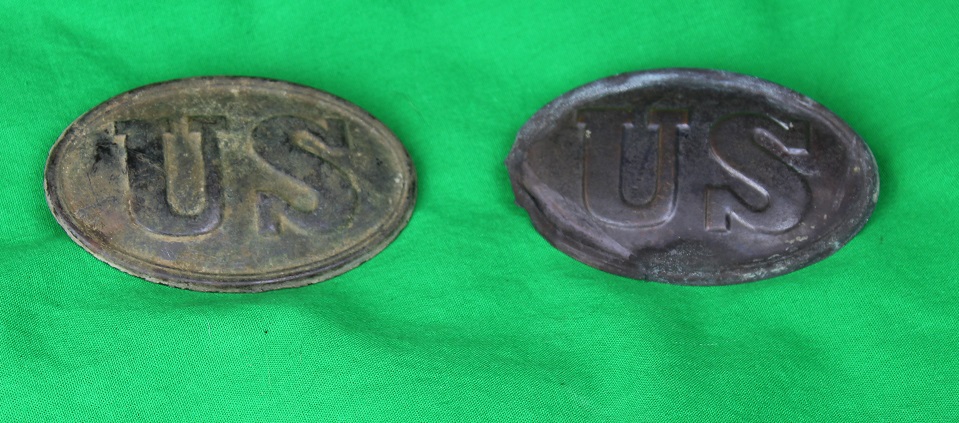
more stuff 99
The second one on the right looks better from the front than the rear. It has a wrinkle on the left side bottom as looking at it straight on. On the reverse a bit of the lead is lacking in that area but both rusty hooks remain. For this one $95.00 P>

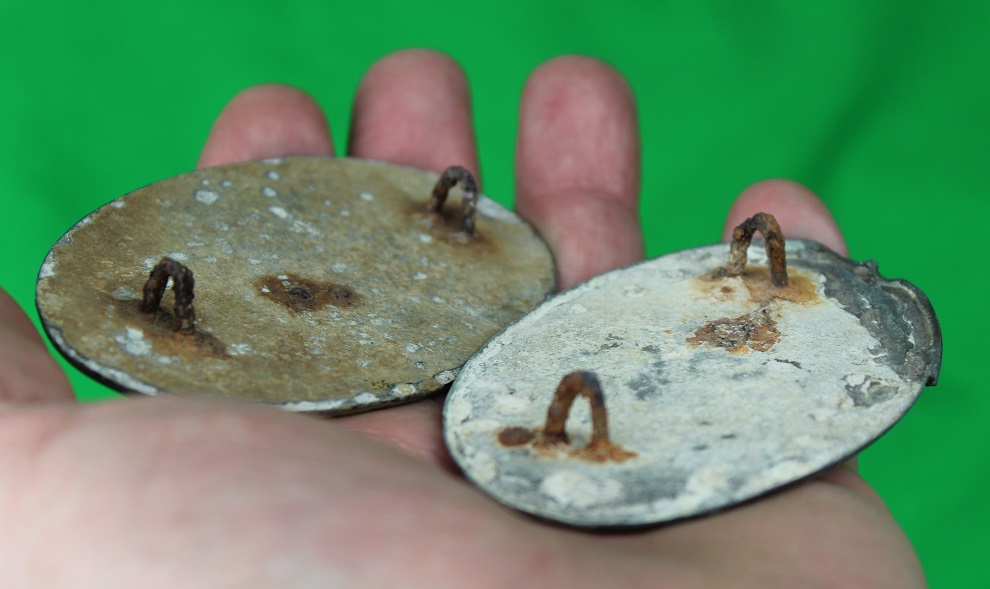
More stuff 98
Next is the puppy paw hooks and tounge from a belt plate-probably US as well. It's dug but in excellent condition. Some Soldiers just used this part instead of the entire belt plate. For this one $45.00
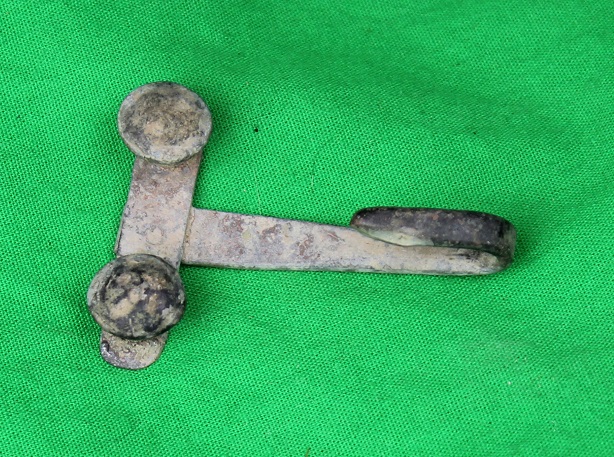


More stuff 97
This last item(s) is a group of .69 caliber round balls which could be either North or South early on and basically just Southern later on in the war. They are in good dug condition and show the white on the lead that one expects to see. Nice shape! There are 12 of them. For the 11 round musket balls $35.00

RARE! RARE! RARE!!!
More Stuff 94
This is a Civil War era patent model of a pocket writing desk. The patent was applied for on December 25, 1861 and granted on July 1, 1862. Andrew J. Ritter of Rahway, New Jersey not only had a good idea but an idea for the times. With the Civil War just started, there would be a great need for such a device on both sides. Ultimately, Civil War soldiers became known for their letter writing and this little device helped to make that happen. I have seen ads for these desks in the Harper's Weekly newspapers of the day so I know 100% that they were produced and sold.
The pocket desk was made of wood and pasteboard and designed to hold stationary, (this model has 2 pieces of stationary in it) pencil or pen, a checker boad and checkers (lacking in the model) and other necessities such as sewing needles and threads and other toiletries. There is still one needle on cloth swatch inside. This piece is exceedling rare and this is the first one ever made!!!! This desk comes with the original Government tag as well as the original lables on the desk that the ones manufactured for use did not have. I can see that this is a fragile item and probably did not stand up to the rigors of marching and camp life. How many of these little desks have you ever seen? I have been in the business for many years and this is the first one that I have ever seen let alone owned! I am sure that many of these little Ritter desks went to war.
The desk comes in a lucite display case with modern copies of the Patent documents. For this rare piece $1,250.00


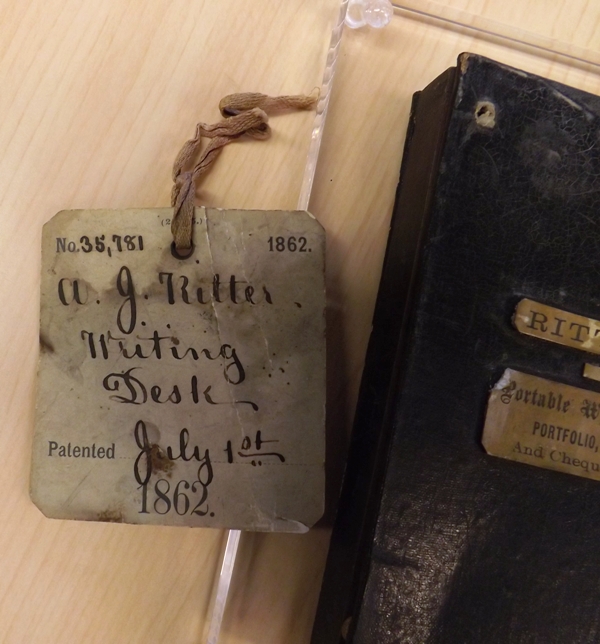
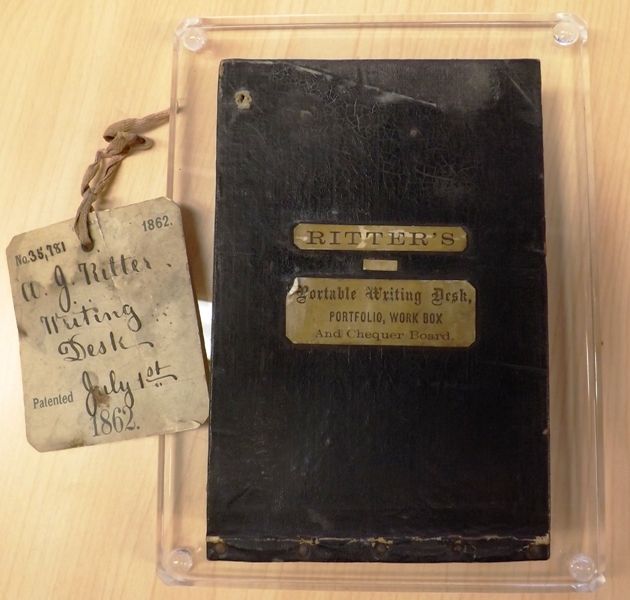
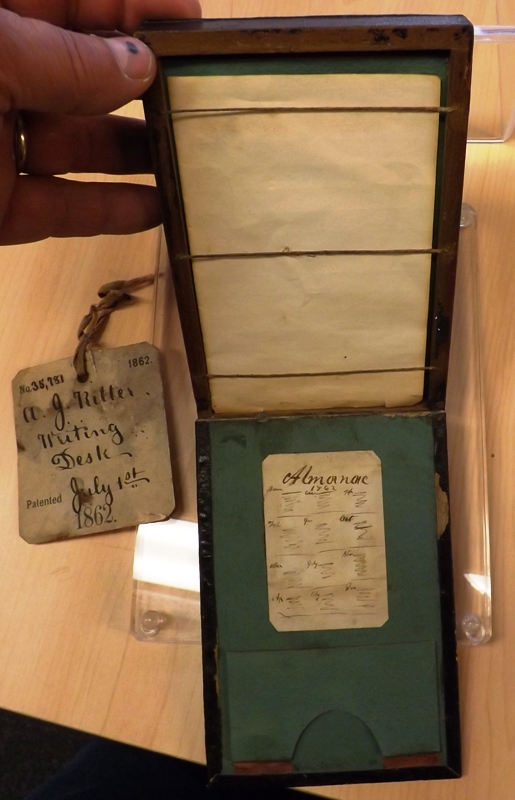
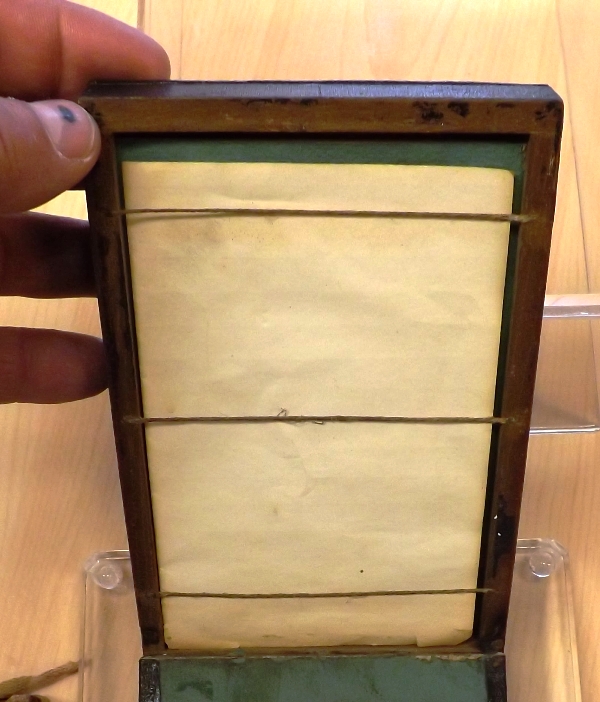
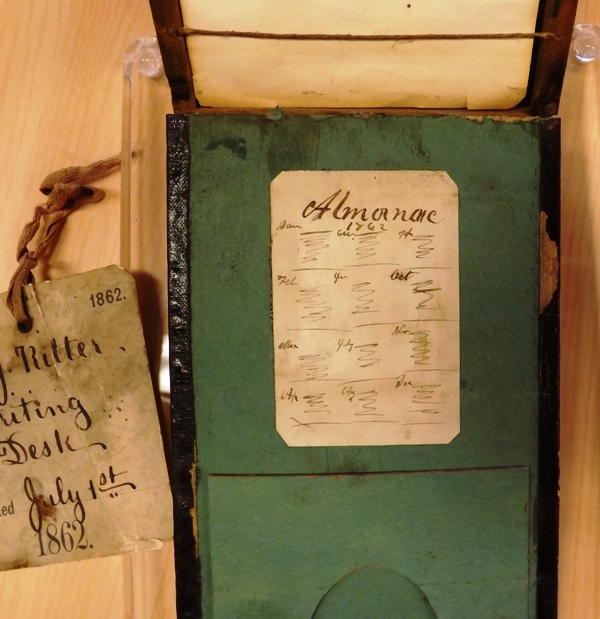
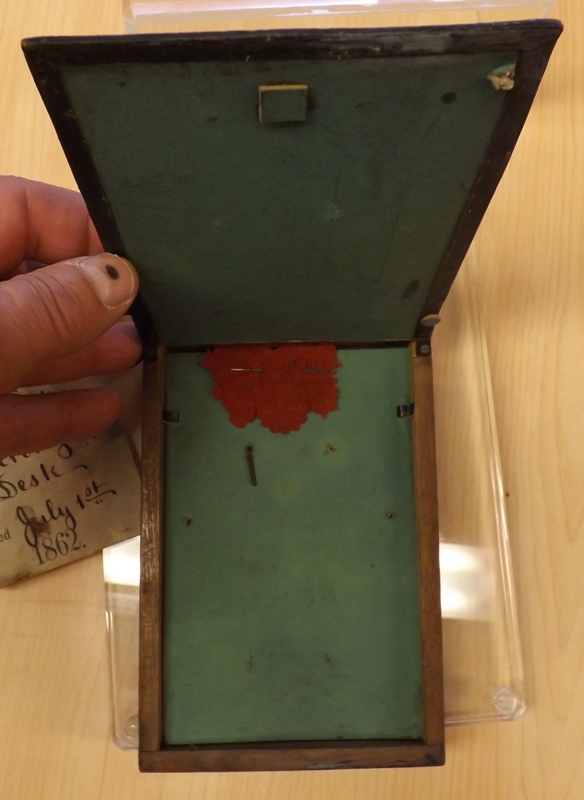
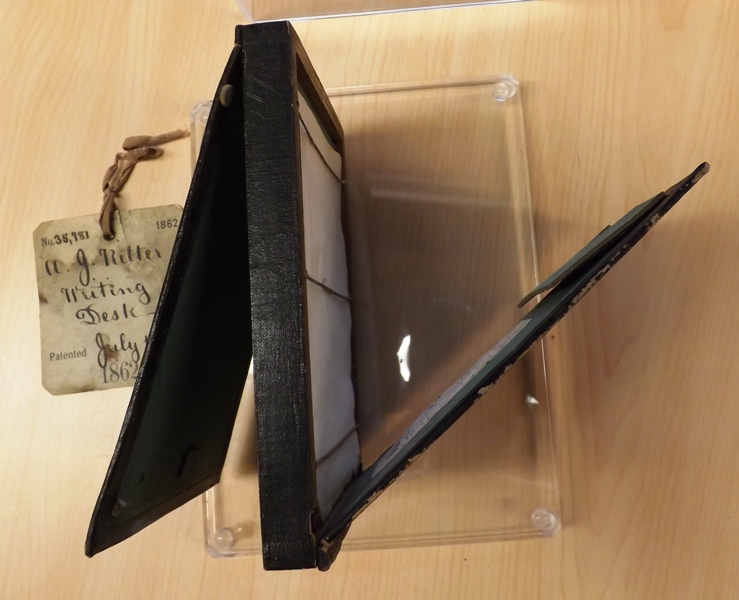
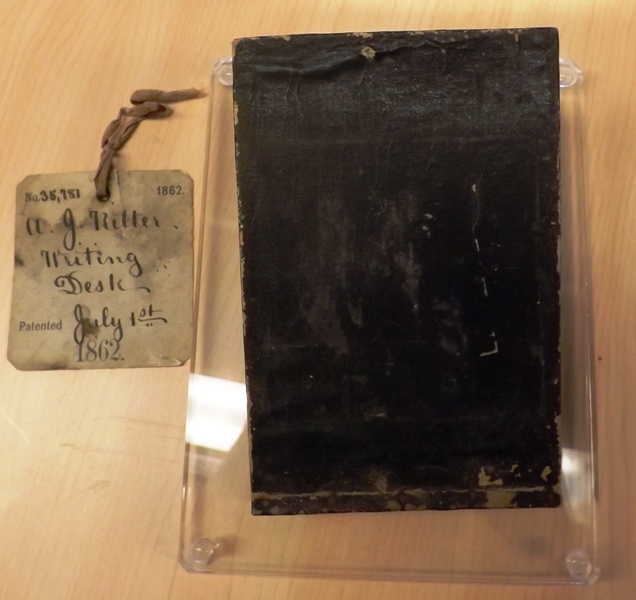
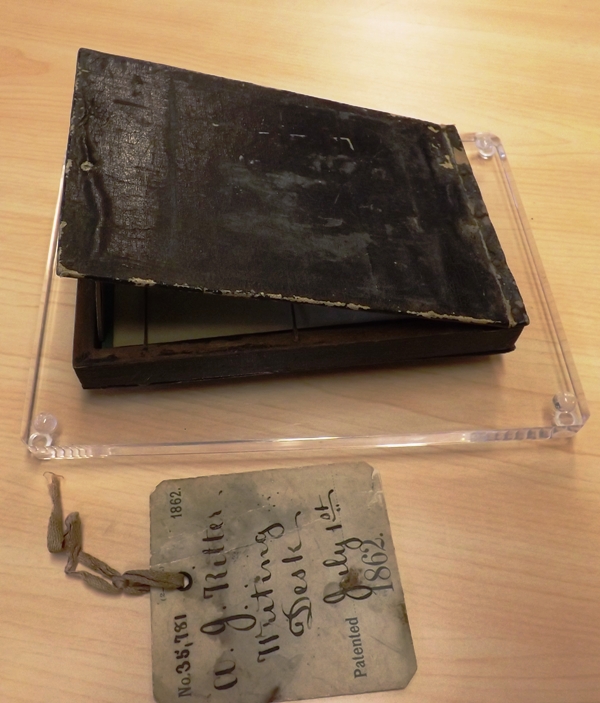
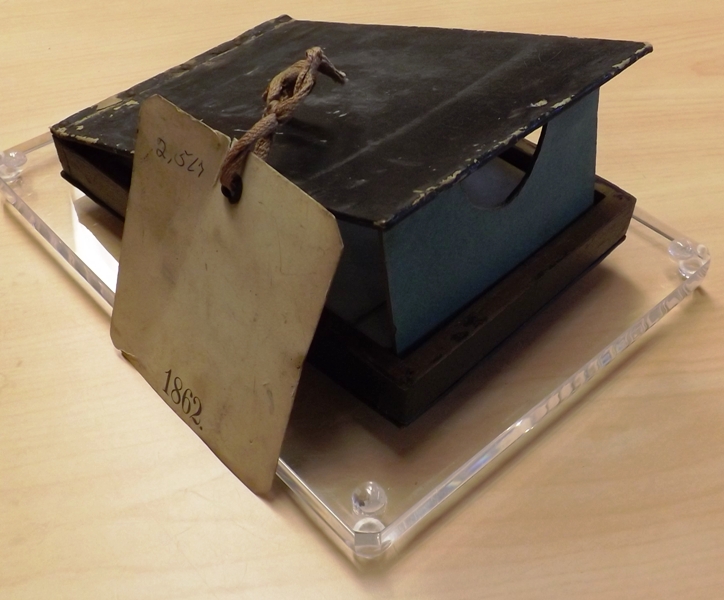
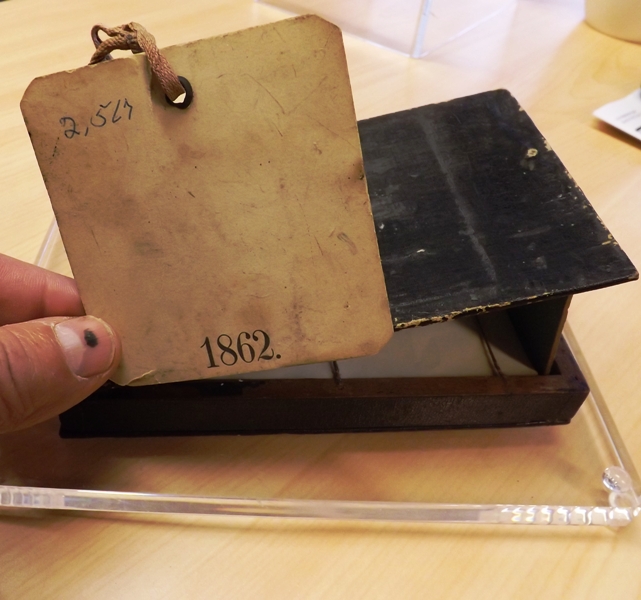

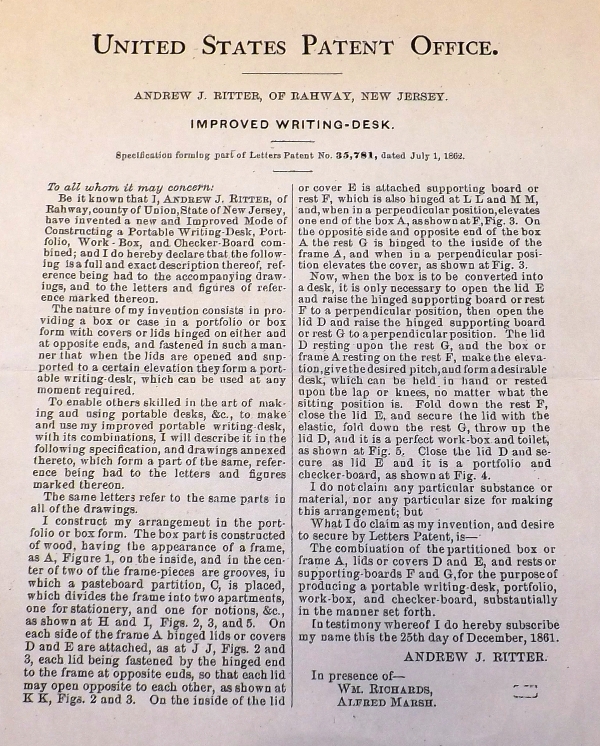
More Stuff 93
Here we have an old set of 19th century Police "Nippers". The Patent says Shackles but these are better known in the collecting field as nippers. This set of old nippers comes with a copy of both the Patent papers showing the drawing of the item and the text describing the item which describes them as Police-Nippers. I know of at least 3 types of thise W. G. Phillips nippers that were patented on Aug. 10, 1869 and this is the second type which was an improvement over the first type due to the spring which set into a notch that made them adjustable. The first earlier ones only had one setting and that was a stud that was set in a hole. The inventor was W. Gray Phillips of Brooklyn, Kings county, New York. These Nippers were not intented for the most violent of criminals as only one arm/wrist was secured by this method. They still work fine and the spring is strong. There is about 70% of the original nickle remaining. This fine old nippers came out of a Lyndonville, Vermont collection. Take a look at the pics! $195.00
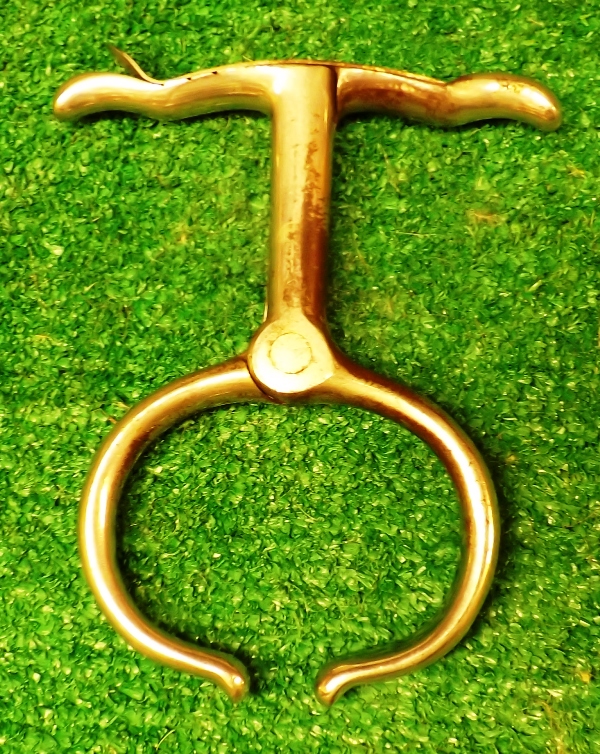
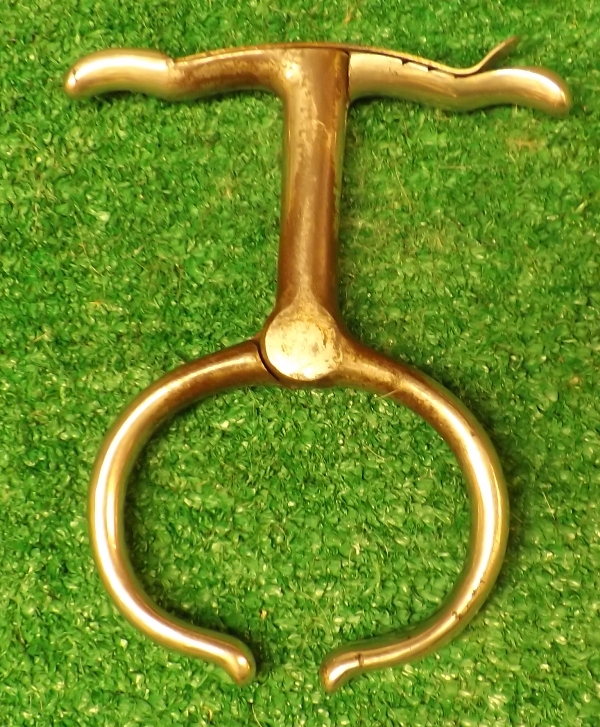
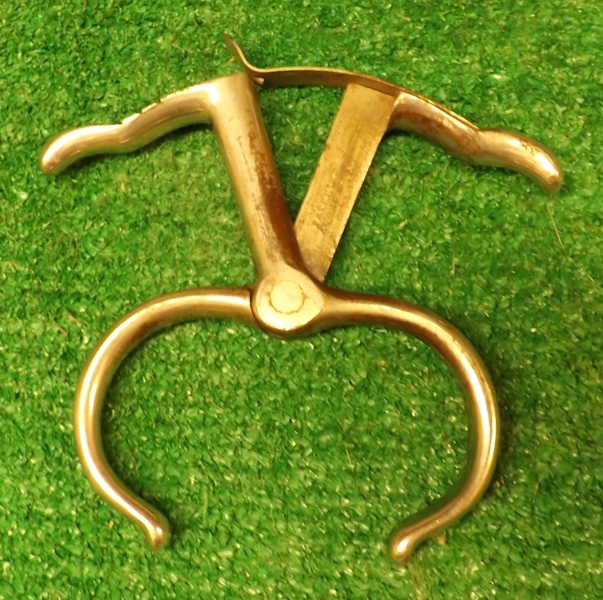


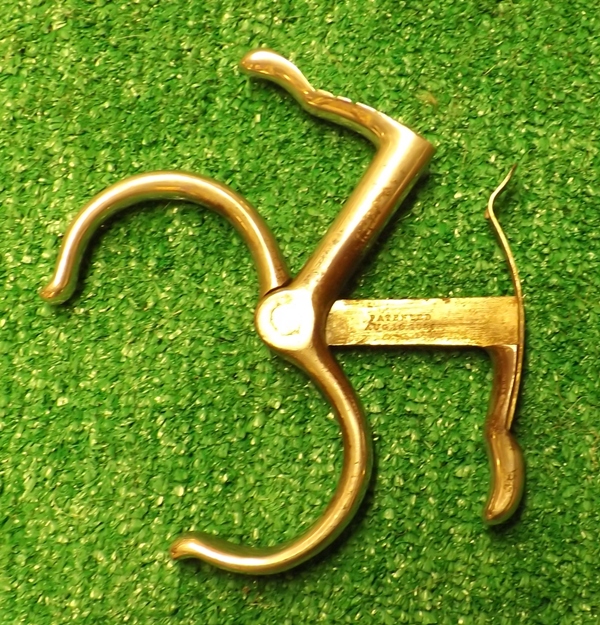
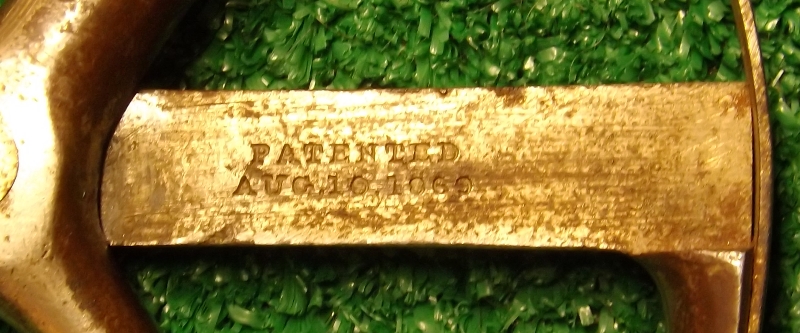

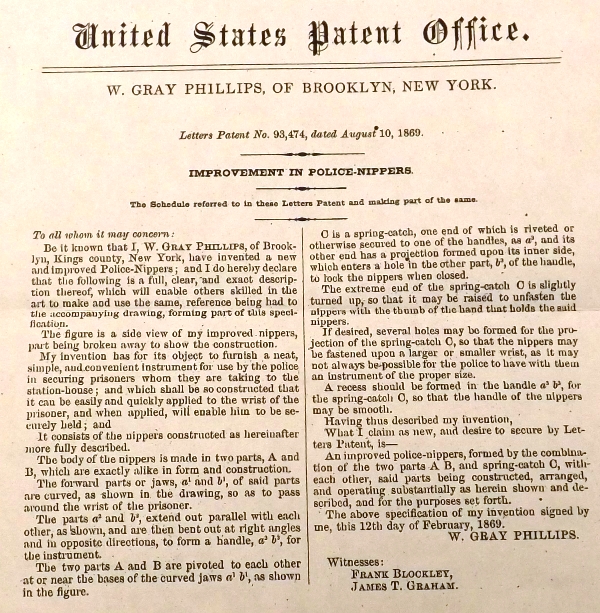
More Stuff 92
This single brass stirrups here is a heavy cast brass stirrup in good original condition. Referred to as the Model 1904 artillery stirrup and each it measures 5¼” high by 4¾” wide and there is a bend to it that you can see in the pics. It is believed that these type of equestrian accoutrements were issued with the M1904 McClellan artillery harness saddles. This stirrup had a ½” thick tread (now lacking) that features an iron top plate inset into the brass surface at the time of casting. The tread surfaces exhibit a sharp front and rear edge on the stirrup and a center ridge down the iron insert. The stirrup exhibits a very fine, mellow bronze patina overall with normal dings from age and use. A good representative of early 20th century brass artillery stirrup. $45.00
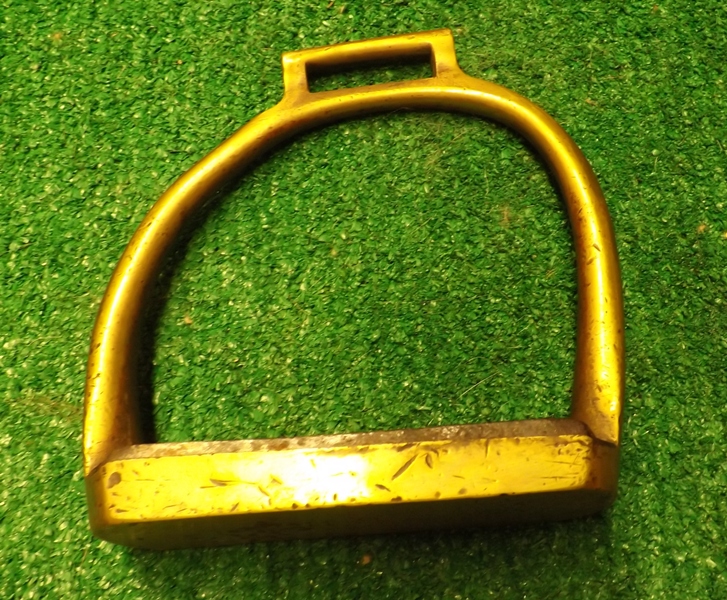
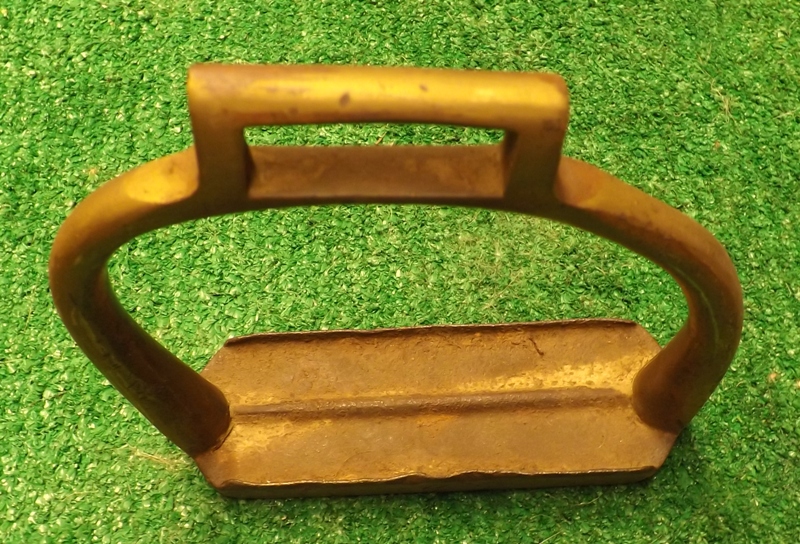

More Stuff 91
Here we have a YOUNG AMERICA BACHELLERS SUBLIME QUALITY SEWING SILK & TWIST FOR SEWING MACHINES box. This is an early one I believe being from the 19th through early 20th century. The box measures about 8 1/4 X 4 1/4 and is in pretty good condition. There is an excellent looking spread winged Eagle on the lid and a waterstain. Someone has written a price on the bottom of the box in ink. Small but there. $20.00

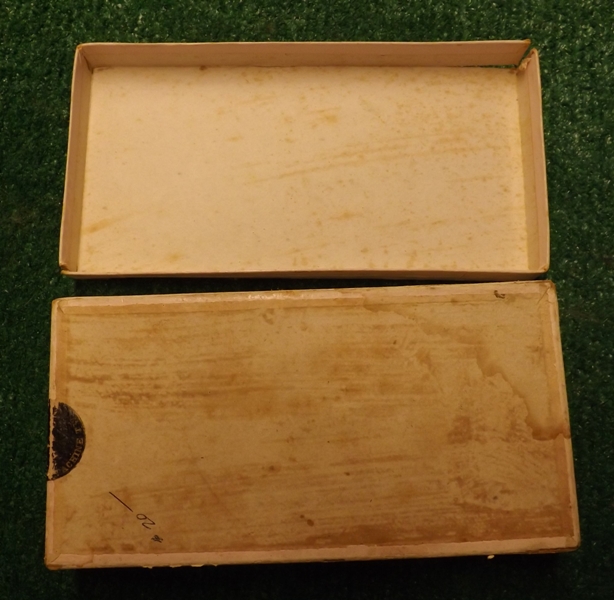
Here are three needle cases with needles.
More Stuff 90
The first one is a small brass one measuring about 1 7/8 inches long. The cap pulls off to reveal a couple of needles inside. Nice patina! $10.00
More Stuff 89
The second one is another brass one with decorations around the body that may indicate Naval use. It just looks nautical to me. This one measures 2 3/4 inches long and is full of needles. $15.00
More Stuff 88
The third one is steel with brass end caps and has on the stamped on the cylinder HENRY CLARRE & CO. 17 GRACE STREET LONDON--FAVORITE NEEDLE PERSERVER--AGENT FOR UNITED STATES-H.F.OSBORNE, NEWARK, N.J. PATENT. This one is also full of needles.
More Stuff 87
The needle safe dates to the turn of the century (1890-1905) when the H F Osborne firm was making all sorts of saddlers and harness makers tools (harness, trunk, trimmers and saddlers tools)out of their Newark NJ plant. They had a huge workforce by this time and a strong line of a variety of products so their tools today are seen throughout the antique markets. For this fine piece $45.00
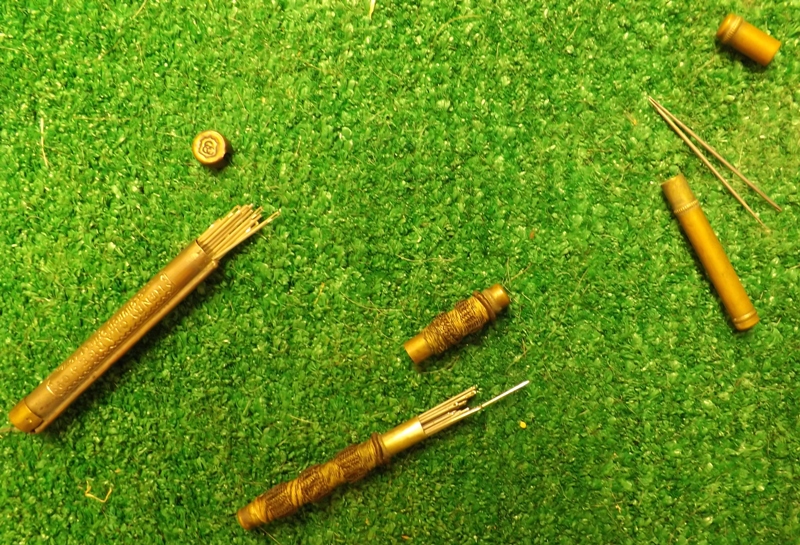
More Stuff 86
Here we have a group of harness needles in original packaging. This group is all post Civil War and has MADE IN ENGLAND or MADE IN GREAT BRITIAN on them or close. The makers are John James & Sons, Redditch , England: W.Crowley & Sons, England: Glover's Needles, England for C.S. Osborne, New Jersey: Jas. Smith Sons, Great Britian: & the Shrimpton Need Co. England. For each pack $10.00

More Stuff 85
I believe these harness needles to be much earlier because no country of original is listed on the packages. There are three packs of harness needles that are marked E PLURIBUS UNUM BEST QUALITY HARNESS NEEDLES C. SCHLEICHER, BELLE VALLEE. That company was in Canada but obviously these needles were made for the American market. The best package has no needles in it and the other two have 1 needle each in them. For each $10.00 The other pack shown is SUPERIOR CAST STEEL DRILL'D EY'D HARNESS 8 MANUFACTURED BY J. RIMMER & SON, ALCESTER. John Rimmer flourished 1800 to 1840 and Son Thomas from 1802 - 1870 as needlemakers. This one is full of needles. $25.00
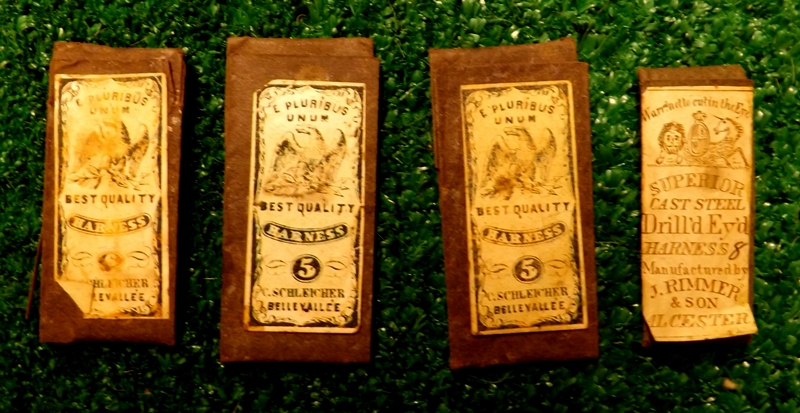
More Stuff 75
Many a man made out a will during the early 1860's thinking he would have to go off to war. This is one such will written for a Hendricks County, Indiana, man, Daniel Brown who was married to Poly and had 4 children. Daniel states in his will that he leaves everthing to Poly but if she gets remarried or dies then she will have to give everything to the 4 kids! Try to get away with that today! This will was written on April 26th, 1862 and I'm sure Daniel though he would have to go off to war one way or another. Daniel did sign up with the 103rd Indiana Co.B for one week on July 10, 1863 to July 18th to run Confederate General John H. Morgan and his soldiers out of Indiana. Here is the bio of the 103rd:
Minute Men. -- Word being received at Indianapolis on the evening of July 8, 1863, that a force of 6,000 cavalry under Morgan had crossed the Ohio River near Mauckport and was moving on Corydon, a call was issued for citizens to organize for defense. Within 48 hours 65,000 men had tendered their services. From this number regiments 102 to 114 inclusive, and one battalion were organized, the battalion being assigned to the 107th. One Hundred and Third Infantry. -- Col., Lawrence S. Shuler, Lieut.Col., Virgil H. Lyon, Maj., Samuel J. Banta. This regiment was organized as minute men and was composed of seven companies from Hendricks, two from Marion and one from Wayne Counties, all belonging to the Legion. It was organized July 10 1863, with 681 rank and file, and moved by rail on the 11th from Indianapolis to Vernon. Securing horses for 146 men from his and Gregory's command, Col. Shuler pushed on and joined a pursuing column, his detachment taking the advance. Coming in sight of Morgan's rear-guard on the afternoon of the 13th the troops engaged in several skirmishes with detachments of the enemy near Harrison, Ohio, and entered there soon after Morgan's rear-guard had departed. The pursuit continued as far as Batavia, Ohio, when the command returned to Indianapolis, being mustered out shortly after the balance of their respective regiments had been discharged. The 103rd had moved to Sunman's station and after Morgan's escape into Ohio had returned to Indianapolis, where it was mustered out July 16th. Source: Union Army, vol. 3, p. 174
It would have been awful hard for Daniel to sign up for a regular unit with a wife and 4 kids to raise! Catch a glimpse of the past for $26.00
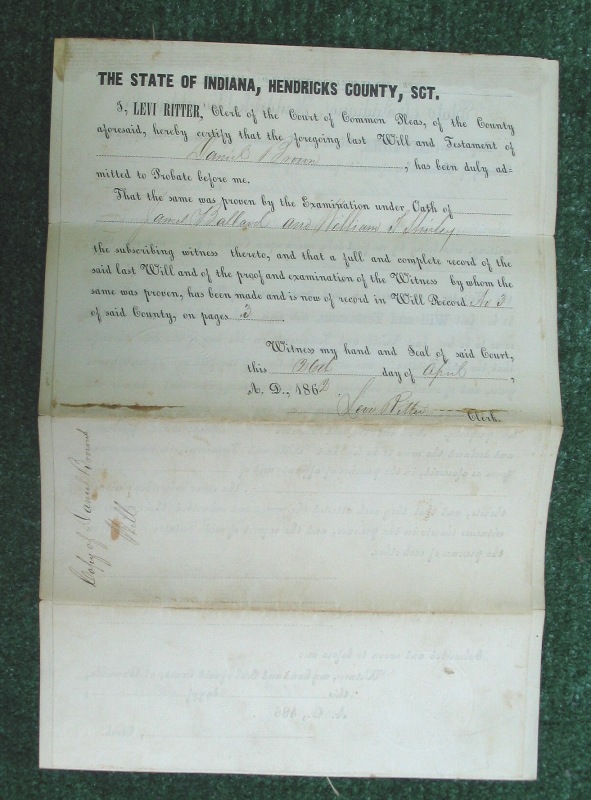

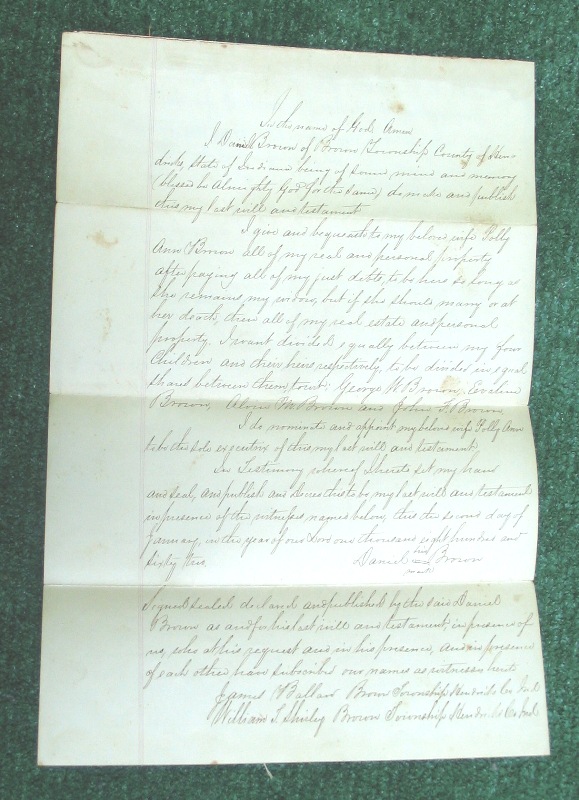
More Stuff 74
Both are Sold!!!
Here are 2 personal sized coffee pots that were sometimes carried in the soldier's knapsack. I've placed a penny in the pic for comparison in size. The first one is a 'one cup' sized pot being about 5 1/2 inches tall to the top of the wooden knob on top and 3 1/2 inches across the base. The solder joints are as they should be. I don't believe that there are any holes in this litte pot. Hinged lid. Nice one! Not a toy! $65.00
BOTH ARE SOLD!!
The next one is about 6 inches tall and 4 inches across the bottom. This is the side spout type with the detachable lid. This one has a very small spout with a loop at the top that would have had a chain on it to a cork to plug the spout. I don't believe there are any holes in this one either. Both pots have a great patina with little rust to the insides and maybe just a minor dent or two. Very nice! $65.00 each
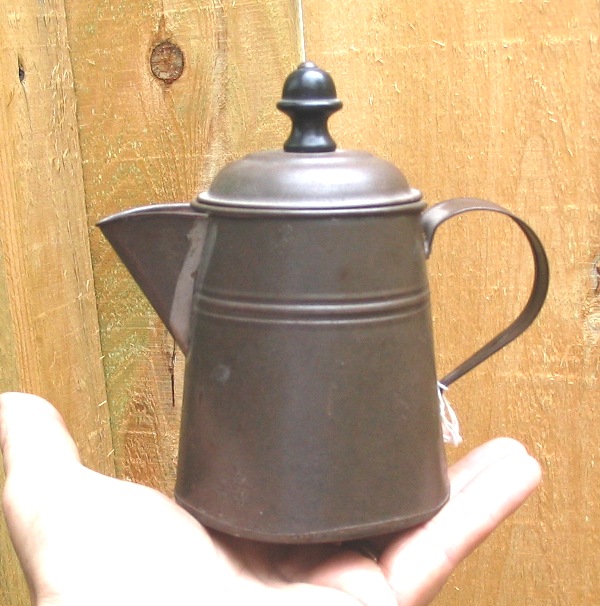
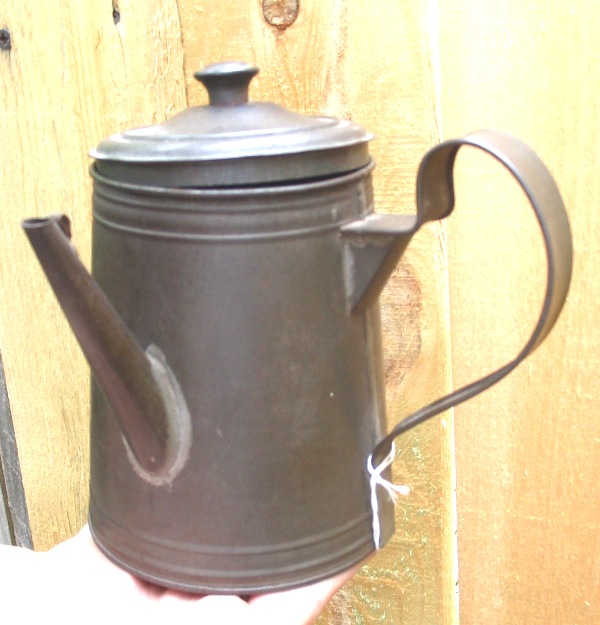
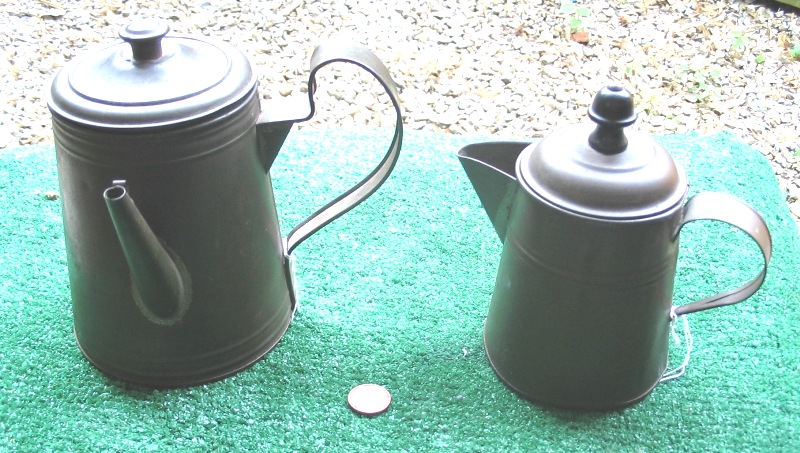
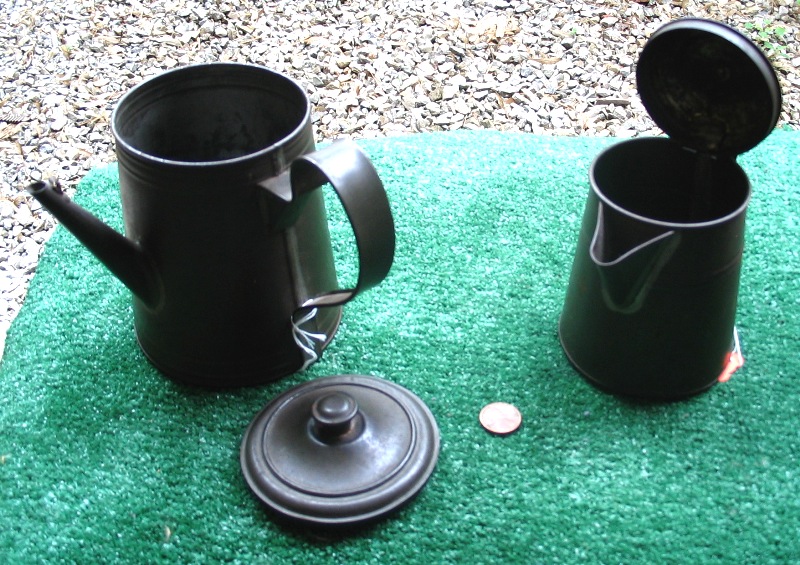

More Stuff 72
Here is a English made Snake Buckle and keeper that is made of tinned iron construction. This piece came from a Cincinnati Costume shop years ago. I believe it to be old unusued stock, perhaps from Bannermans. This type buckle was used by both sides during the War although it's usually associated with Confederates. $95.00
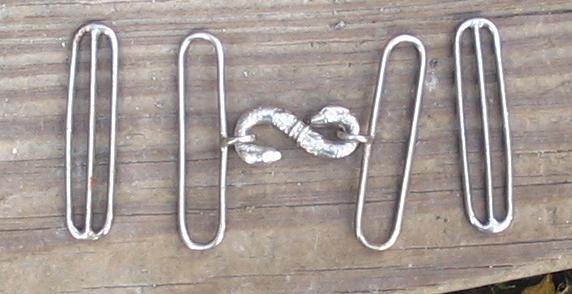
More Stuff 71
SOLD!!!
This is a Hotchkiss Shell - Complete - This is a 3" case shot with 3 flame grooves. Nose, base and forcing band are entact. Has a brass paper time fuse holder. This piece has ground action but has been cleaned and coated to prevent further damage. Sorry, but the info on where it was dug has been lost with the loss of the collector who owned it. Still a very nice displayable shell! The shell is safe to display as it has been disarmed. About 7 inches long. From a Zionsville, In estate. $295.00
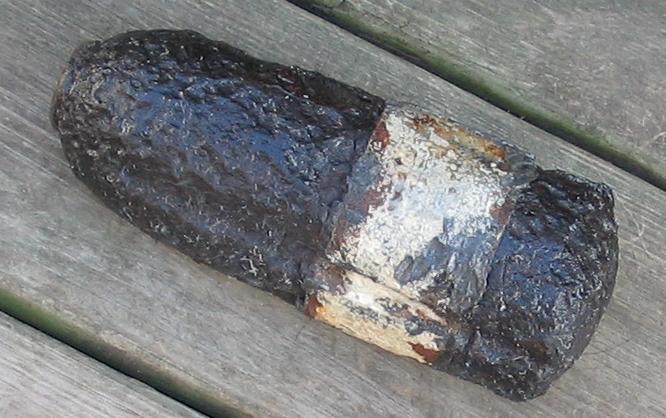
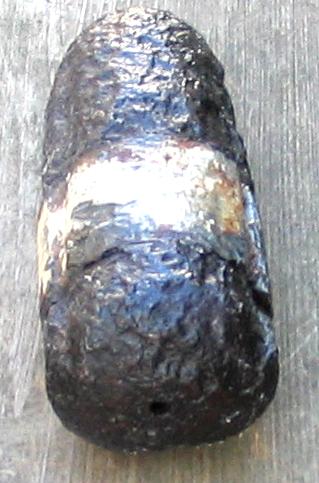
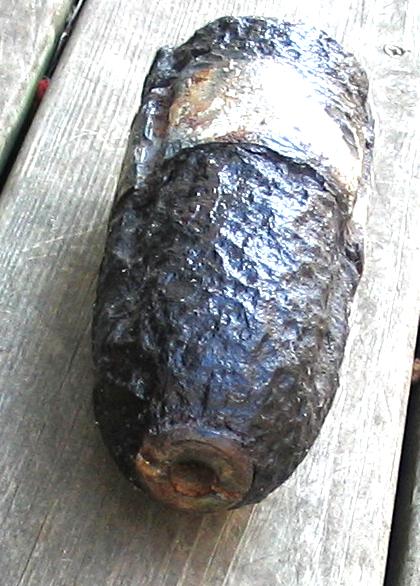
More Stuff 68
This is something you never see. This is an original form for APPLICATION FOR MEDAL being form No. 0714 dated March 1, 1924. This form is to be used by veterans of the Civil War, Indian, Spanish, Spanish Service, Philippine, Philippine Congressional, China, Cuban Occupation, Porto Rican Occupation, Cuban Pacification, Mexican Service, and Mexican Border medals! WW1 wasn't listed on this form yet! There are actually 2 pages, one original and one copy. First time I've seen these and I have a few copies. $10 each guaranteed original and unused!
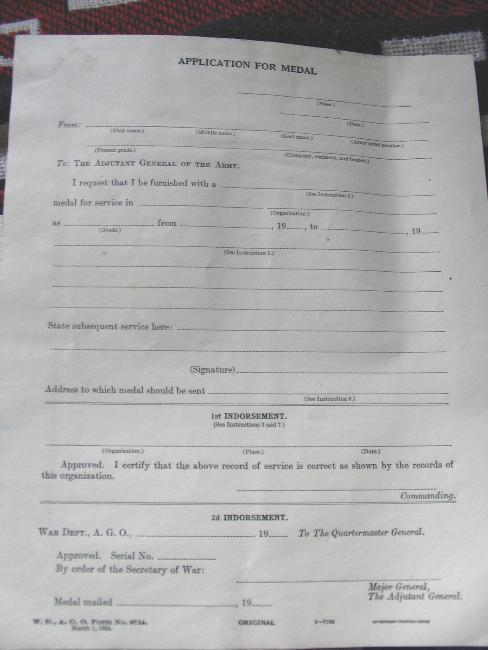
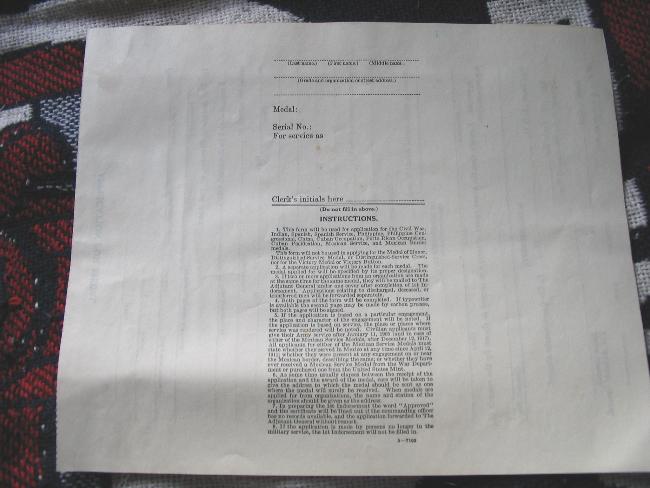
More Stuff 67
This is a 12 inch tall X 7 1/2 inch wide bust of Abraham Lincoln. It has a very small area on the tip of the nose that's missing the gold. I don't know if this is plaster, chalk, or what but it is hollow. Still fairly heavy. Nice piece of Lincoln memorabilia. Don't know how old it is but I got it at a Civil War show from a dealer. $45.00

More Stuff 66
This is an excellent CS Confederate envelope / cover address to Mr. George W. Creasey Manchester, Chesterfield Co. VA in care of Capt L.M. Burford. There is an excellent 5 cent Jefferson Davis stamp CSA #4 Stone litograph that is much more of a green than our pic shows (stamp alone worth $150.00) affixed to the upper left hand corner and the cancellation stamp of New London MAR (march I believe) 27 (the envelope is much more yellow or manilla than the pic shows. The date is not seen. There is something else written on the lower left hand corner but I can't make it out. George W. Creasy was in the 18th Virginia Infantry and was part of Longstreet's Corps. ,General Picketts Brigade. The unit was involved in action at Balls Bluff on Bull Run, Manassas; fighting around Yorktown and Williamsburg ;Seven Pines; Gaines Mill; Frasiers Farm; the second battle of Manassas; battles of Boonsboro and Sharpsburg; Gettysburg; Petersburg & Five Forks and made its last stand with the old Picketts Division,at the battle of Saylers Creek. Excellent Unit! Too bad we don't have the letter too !! $125.00
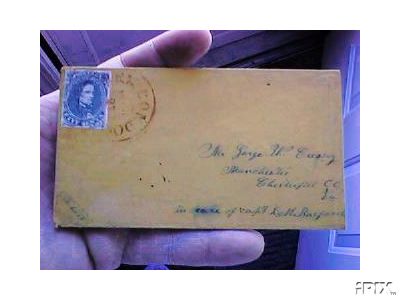
More Stuff 65
CIVIL WAR ARMS PURCHASES AND DELIVERIES: A facsimile reprint of the master list of Civil War weapons purchases and deliveries including small arms, cannon, ordnance and projectiles,introduction by Stuart C. Mowbray. Reprinted here in its original format is the single most quoted source of information about Civil War weapons. It is so important that many authors have called it the "bible" of Civil War arms research. Also known as "Executive Document # 99," this massive publication is a comprehensive list of every single weapons purchase made by the Union - over 300 pages of detailed entries. 300+ pp., 6 1/8" x 9 1/4". Hardcover. BRAND NEW NEVER READ BOOK! $39.50
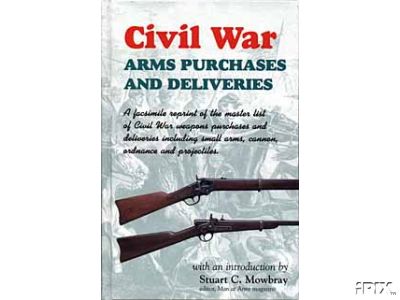
More Stuff 53
This is a Pardon given by the Governor of the Commonwealth of Virginia dated October 15th 1887. The Governor's signature is Fitzhugh Lee who was a great Confederate General. Fitzhugh Lee was born in Fairfax County, Virginia, on November 19, 1835. The nephew of Robert E. Lee, he attended the US Military Academy at West Point. Although his uncle, serving as superintendent of the academy, almost expelled him for misbehavior, young Lee managed to graduate in 1856. Seriously wounded while fighting in the Indian wars, he became an assistant instructor at West Point in 1861. In May of that year, however, he resigned to become a 1st lieutenant in the Confederate service. Serving as a Confederate staff officer in the Peninsula Campaign, he was eventually promoted to brigadier general (July 24, 1862) and major general (August 3, 1862). At 27, he was one of the youngest cavalry commanders in the war. Called "Fitz," he led a brigade through the Antietam Campaign, and at the Battles of Chancellorsville and Gettysburg. Wounded at the Third Battle of Winchester, he stayed out of action until the last leg of the war, in which he served as Gen. Robert E. Lee's chief of cavalry corps. Fitzhugh Lee surrendered right after Appomattox. After the Civil War, Lee was elected governor, worked as a farmer and was appointed consul general in Havana. He served in the Spanish-American War as a major general in the US Volunteer Army, and retired in 1901. He later wrote a biography of his famous uncle, as well as other works about the Civil War. Lee died on April 28, 1905, in the District of Columbia. The Pardon was given to Wm. Saunders who was being held for the offense of housebreaking. He was sentenced for two years in the penitentiary in April 1887. There is also a signature of the acting Secretary of the Commonwealth and keeper of the Seals. This document is in really good shape with strong signatures. Guranteed original and authentic! $450.00 The cdv of Fitzhugh Lee is not included and only show here for display purposes.
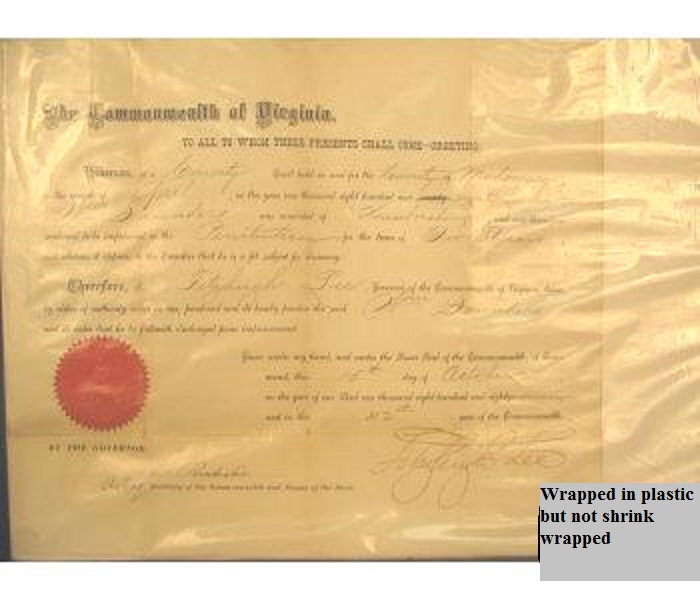

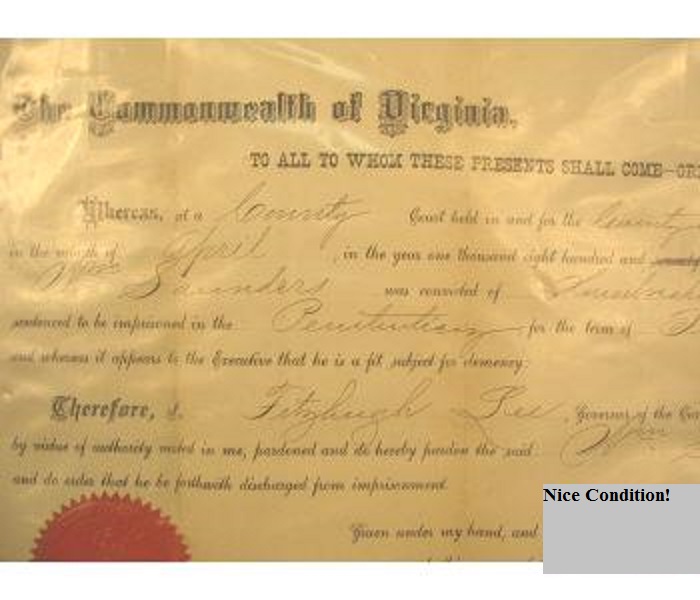
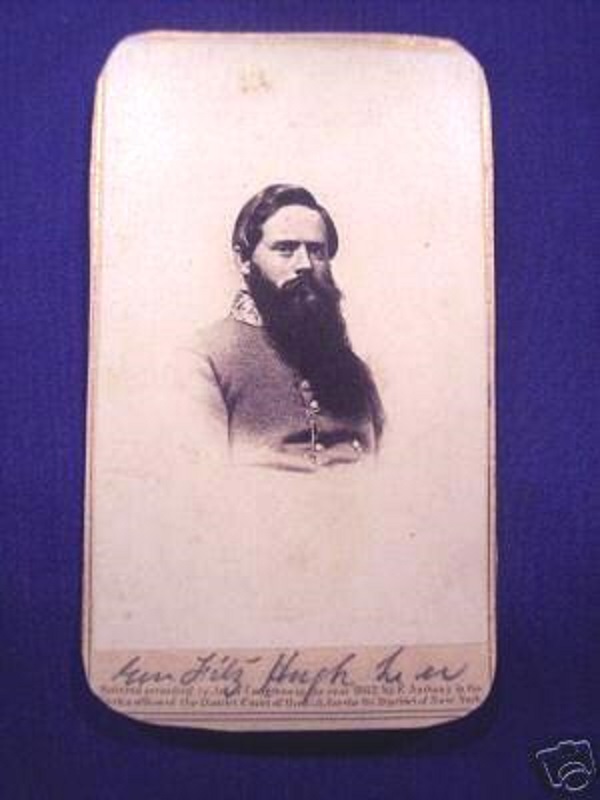 <
<
More Stuff 52
What we have here is a nice period wooden comb! This piece measures 10 inches long by 2 inches tall. The piece has a couple of age cracks in the bottom part but otherwise looks to be unused. The black handle is black wood and it looks like there was a groove that the carved wooden comb was inserted into. Good display item! $45.00
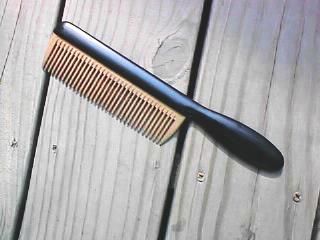
More Stuff 50
Here's a nice little set of children's eating utensils! This is a nice little knife & fork. The bone handled knife measures about 7 inches long with pewter bolsters. There is a small crack over one of the handle rivits. The little fork is the bone handled 3 tine variety also with pewter bolsters (a little chip is out of one of them) and measures about 5 1/2 inches long. Nice little set! $45.00

More Stuff 49
Here is a whistle that I piced up. This is an old nickeled whistle that dates to the 20th century and is marked THALCO WHISTLE MADE IN JAPAN and still have the little pea in it as well. These were popular with Police, military and Marching band leaders. $5.00

More Stuff 45
Here are some pairs of gloves / mittens that I picked up. The first pair is a set of black, what I believe to be mittens in good condition. They are the large size and used extensively in cold climates especially out West. These would look good in a Western display!!! All of the gloves/mittens are a large size. These black ones are in excellent condition!!! $125.00

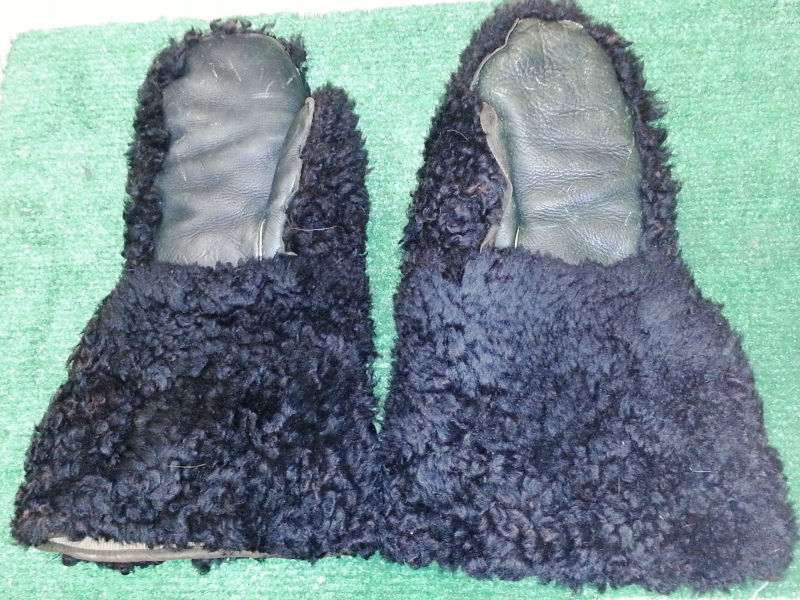
More Stuff 44
This next set of cold weather mittens are brown wool and have a minor repair to ne of them. They are still in good condition and could be used today and boy are they warm!!! $85.00
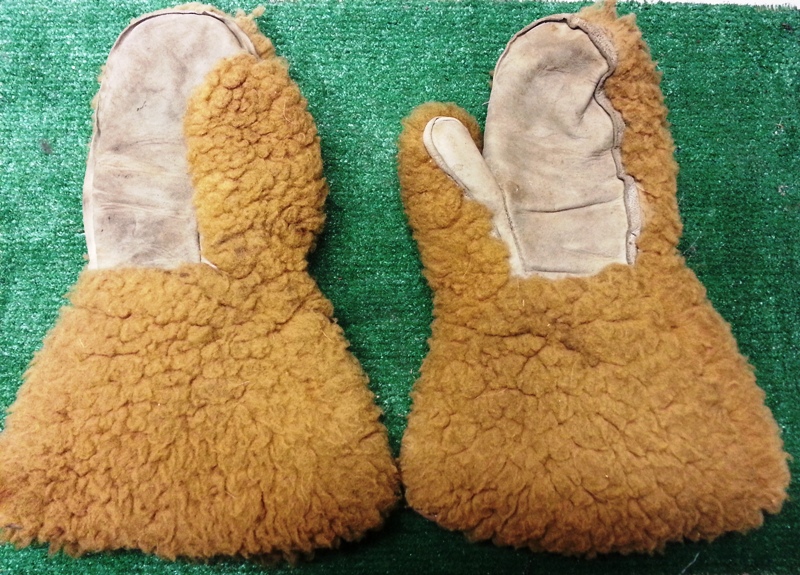
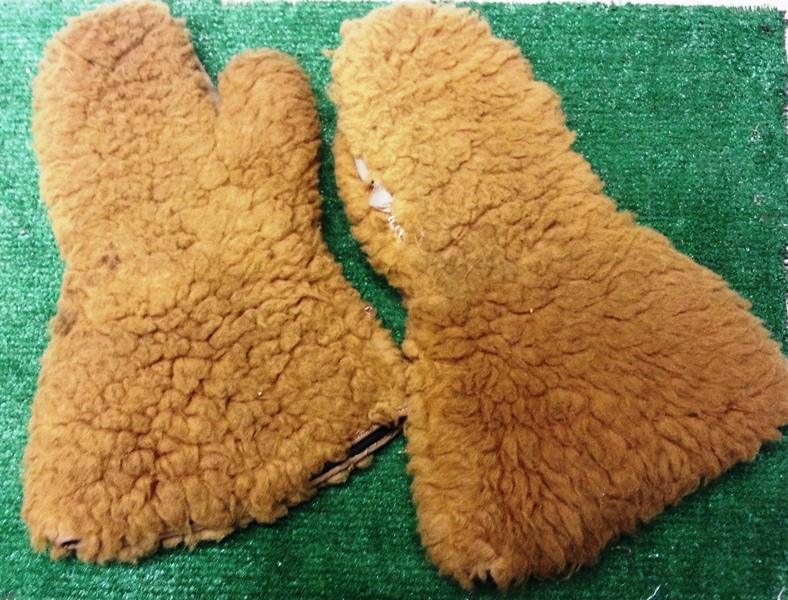
EARLY FUR GAUNTLETS WITH LEATHER PALMS!
More Stuff 42
Here is a pair of nice early fur guantlets with leather palms. At first I thought these to be perhaps Bear skin but after futher review I believe them to be a manufactured product and probably date to the early 20th century. There were mostly horses and wagons used for transportation at that time and these are very nice and kind of dressy. Early automobiles and motorcycles also had drivers and rides that used guantlets. These pieces are a large size and fit my fat hands. They are in excellent condition! $125.00

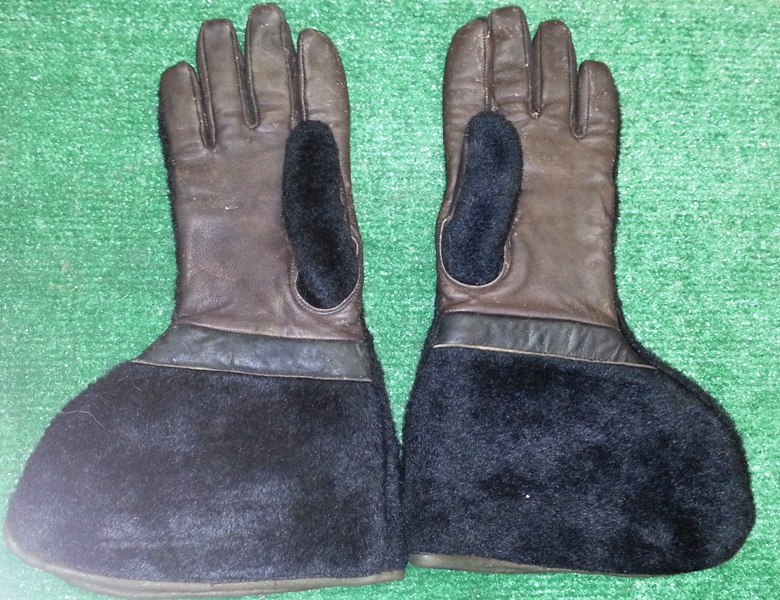
More Stuff 29
Here is an early Maine Militia Document return showing flags and musical instruments turned back in and dated September 1830! It lists columns of if they were in good condition or not in good condition. It lists flags, drums, fifes and trumpets. This document is for the First Brigade and Sixth Division of the militia of Maine and has printing on both sides. Approximately 8 X 10 inches and in very good condition. There is a 1 inch split at the top of one fold and a smaller one at the top of another. The printing is real dark and the ink is dark as well. This will look great framed!!! Nice! $165.00
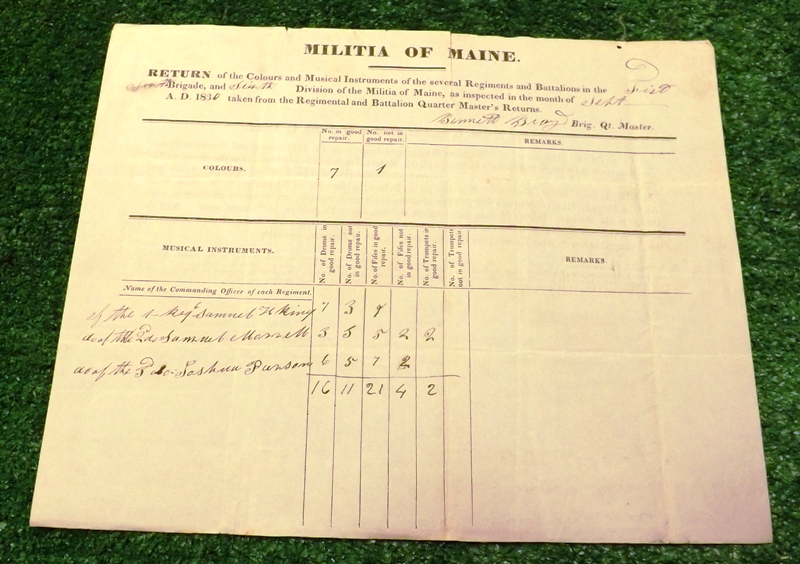
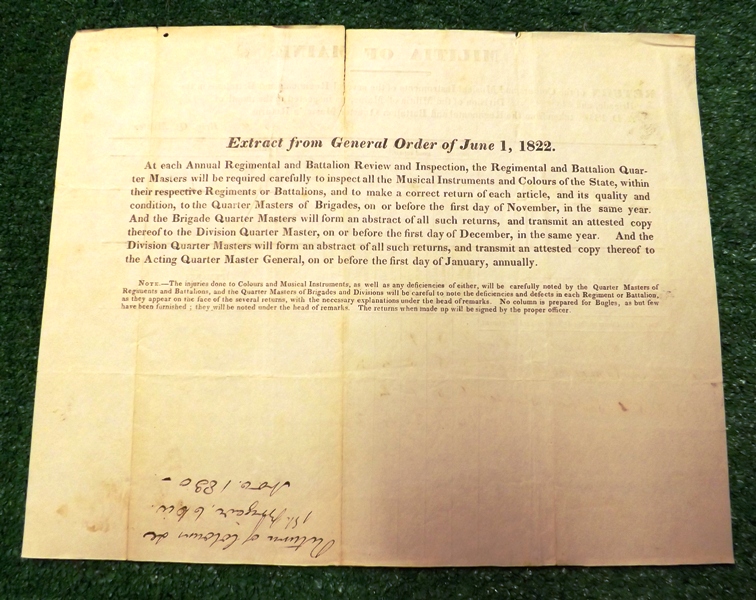
More Stuff 10
Here's an item that used to be common place but not they're hard to find in my next of the woods. This is a Revolutionary War era hand sythe or sickle that was used to keep the grounds clear around camp or the house. This type has the long sweep associated with the early types. The later types had wider blades and shorter sweeps are are quite common. You can see a like example on page 269 of COLLECTOR'S ILLUSTRATED ENCYCLOPEDIA OF THE AMERICAN REVOLUTION by George C. Neumann and Frank J. Kravic. Their note under the illustration states 'The long sweep of this sickle is a typical 18th century pattern; it was employed to keep camp areas neat and defensive areas cleared.' This one is nice with some worm holes in the handle. The tine is peaned over to hold the handle on. Nice early piece! $65.00
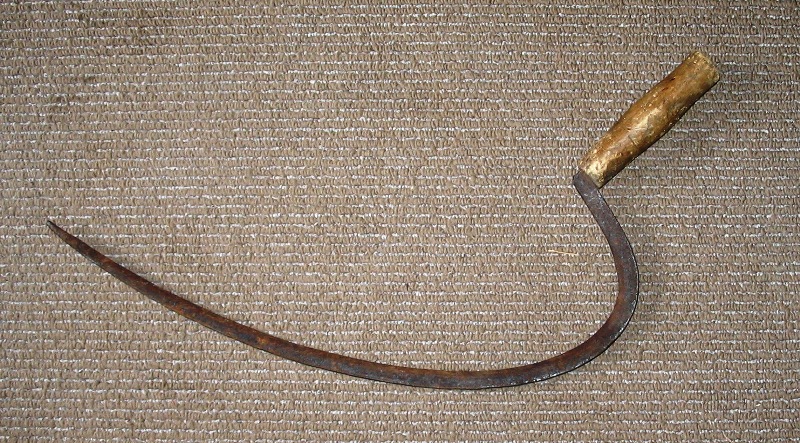
More Stuff 9
Here's another old Revolutionary War era Sythe with long curved blade. The blade measures about 27 inches long along the outside curve and is definitely hand forged. This blade is only 1/2 inch wide at it's widest point and only 3/16 of an inch thick. The old grip has cracks and worm holes in it. The tang is peaned with a wedge in it. I believe there is one spot where a makers name was at one time. This hand sythe was made to be used in the left hand while holding on to grain shaft bundles with the right hand. This is a nice early piece and makes a great decorator. $65.00
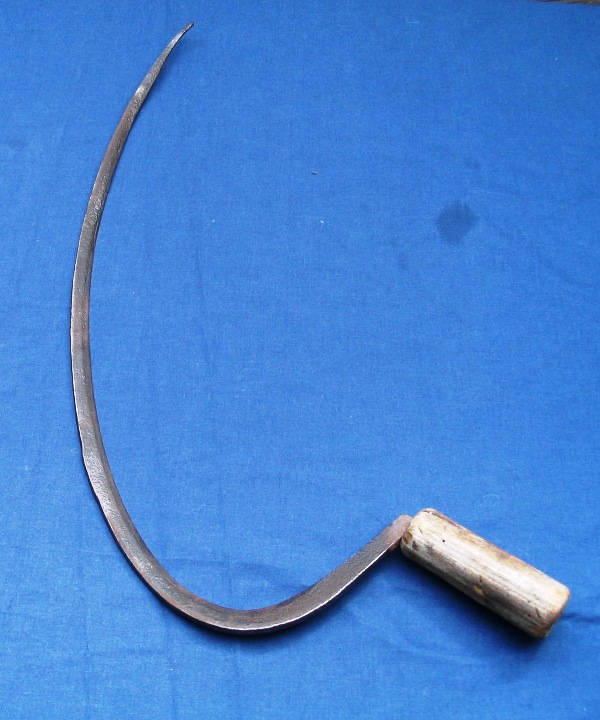
More Stuff 8
Here's an excellent blowing horn that is circa Revolutionary War use and later. These were used for alarms and communications between soldiers and hunters. Many items were made from horn during this time in our history. This fine horn measures about 17 inches long along the outside curveature of the horn. The mouth piece is a brass mouthpiece. The horn has a nice mellow color and it's quite thin as evidenced when you hold it up to the sun to look through it. There are several scratches on it but I can't make out any pics or words in the scratches. I fininally figured out how to use it and can make a quite loud noise with it. The suspension strap is missing but you can see how it was attached. There is a small hole right by the mouth of the horn and the other end would have fixed around the brass mouth piece. This is a nice piece and would look great in a Rev War display!! There is one tiny matchhead worm damage area that does not penetrate the horn. Nice!! $375.00
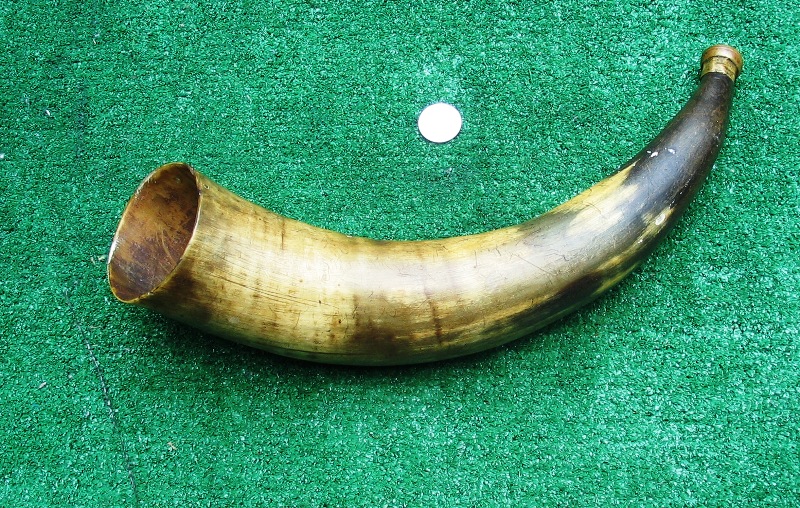

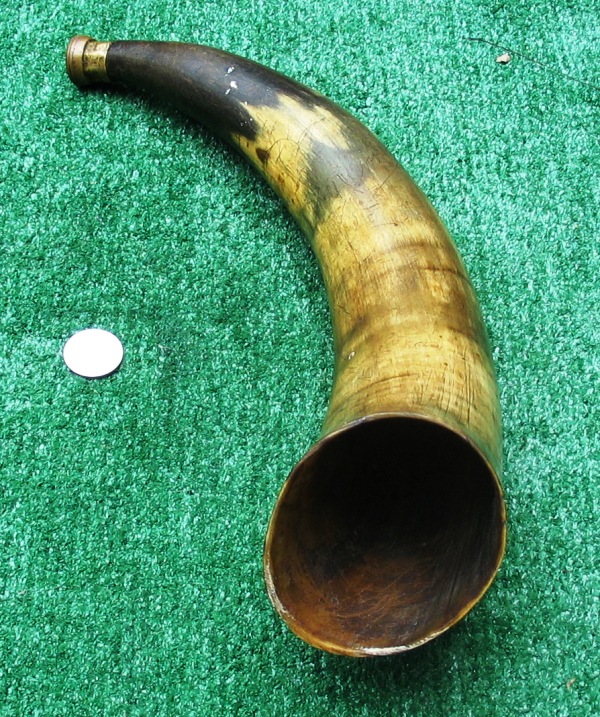
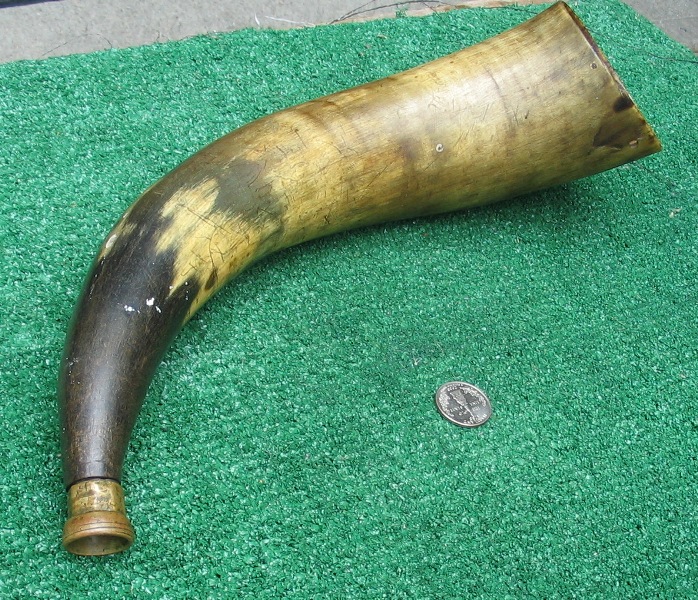
More Stuff 5
Here's 5 clay marbles of the Revolutionary War period thru the Civil War period. Like examples are found in reference books that cover both wars. Good condition! Non dug. $20.00
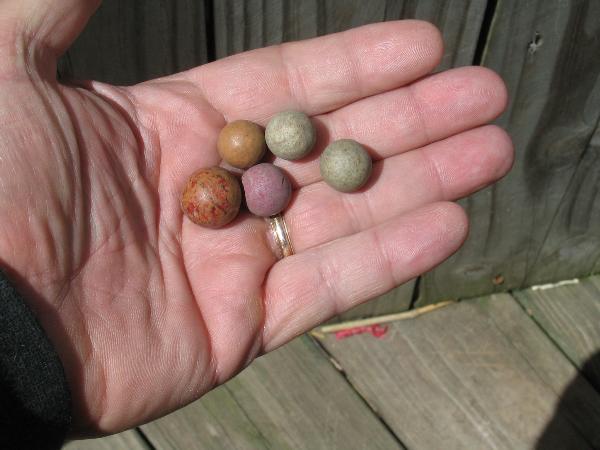 <
<
More Stuff 1
This is a nice Rev War type hand made Corkscrew with turned maple grip. Nice little piece measuring about 5 inches long with the handle being about 3 1/4 inches across. $45.00
